Overview
The ServiceNow connector for Bizagi is available for download at Bizagi Connectors Xchange.
Through this connector, you will be able to connect your Bizagi processes to a ServiceNow's REST API.
For more information about this connector's capabilities, visit Bizagi Connectors Xchange.
Before you start
In order to test and use this connector, you will need:
1.Bizagi Studio previously installed.
2.This connector previously installed, via the Connectors Xchange as described at https://help.bizagi.com/platform/en/index.html?Connectors_Xchange.htm, or through a manual installation as described at https://help.bizagi.com/platform/en/index.html?connectors_setup.htm
3.A ServiceNow account.
4.A serviceNow instance. If you do not have one, follow these steps:
Log in to your ServiceNow account and click the Request an instance option, as shown in the image below.
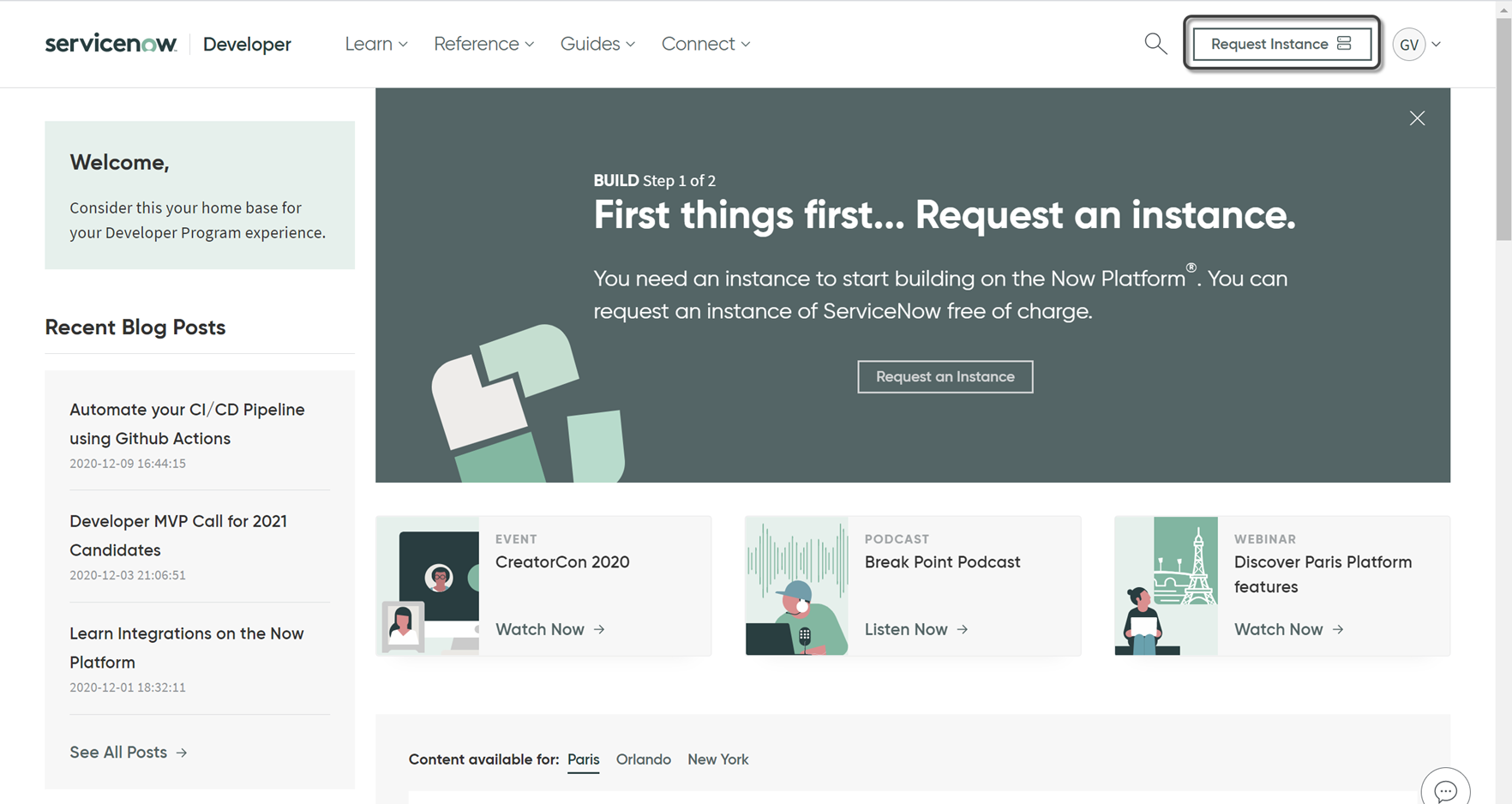
Once the instance is created, ServiceNow provides a URL, a username and a password with which you can access it whenever you need to.
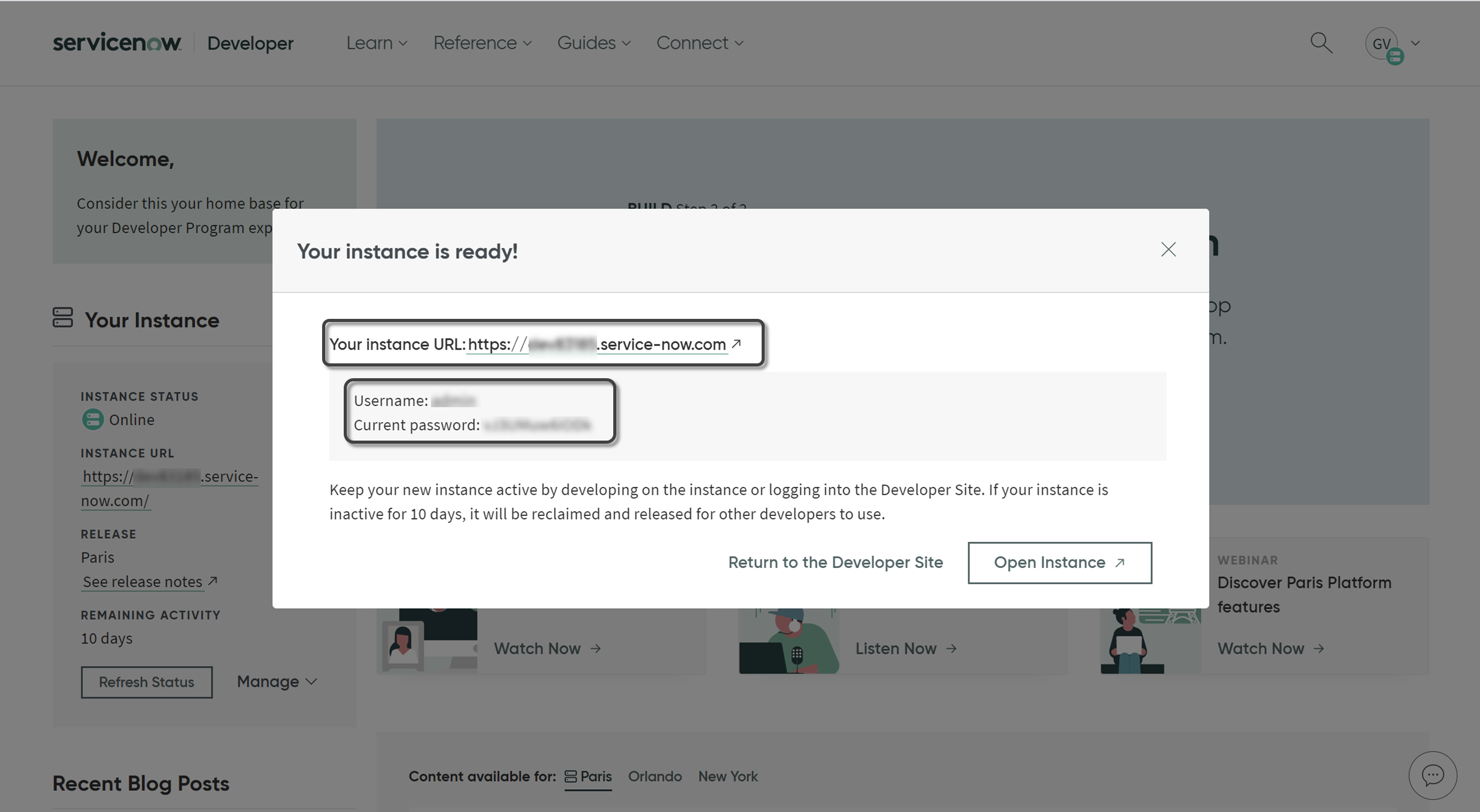
Now you need to elevate the privilege roles of your account. To do so, open your ServiceNow instance, go to the System Administrator menu and click Elevate Roles.

On the pop-up window tick Security_Admin checkbox and then click OK.
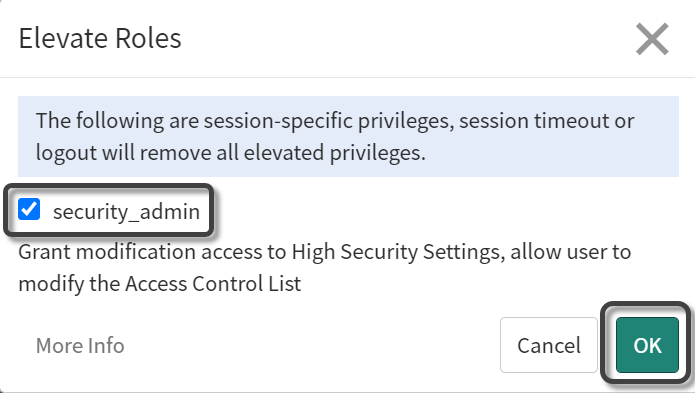
You are finally set up to start using the ServiceNow Connector!
Configuring the connector
In order to configure the connector (i.e its authentication parameters), follow the steps presented at the Configuration chapter in https://help.bizagi.com/platform/en/index.html?connectors_setup.htm
For this configuration, consider the following authentication parameters:
•Instance: Servicenow instance. Take into account that only the name is needed. You do not need to specify the URL
•Server_url: In case you have a Servicenow custom server, you must use this field to specify the URL.
•Authentication method: custom.
•USER_NAME: The provided username of your ServiceNow instance.
•PASSWORD: The provided password of your ServiceNow instance.
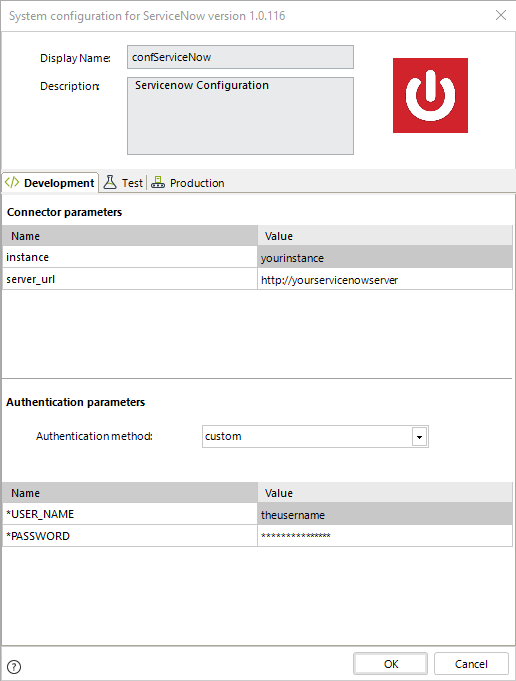
|
The instance and the server_url parameters are mutually exclusive. Only one of both parameters is needed. However, if you decide to fill both of them, the instance parameter has priority over the server_url and the only first one will be used. |
Using the connector
This connector features 41 available methods of ServiceNow API services.
To learn overall how/where to configure the use of a connector, refer to https://help.bizagi.com/platform/en/index.html?Connectors_Studio.htm.
When using the connector, make sure you consider the following details for each of the available methods.
Create problem
Registers a new problem.
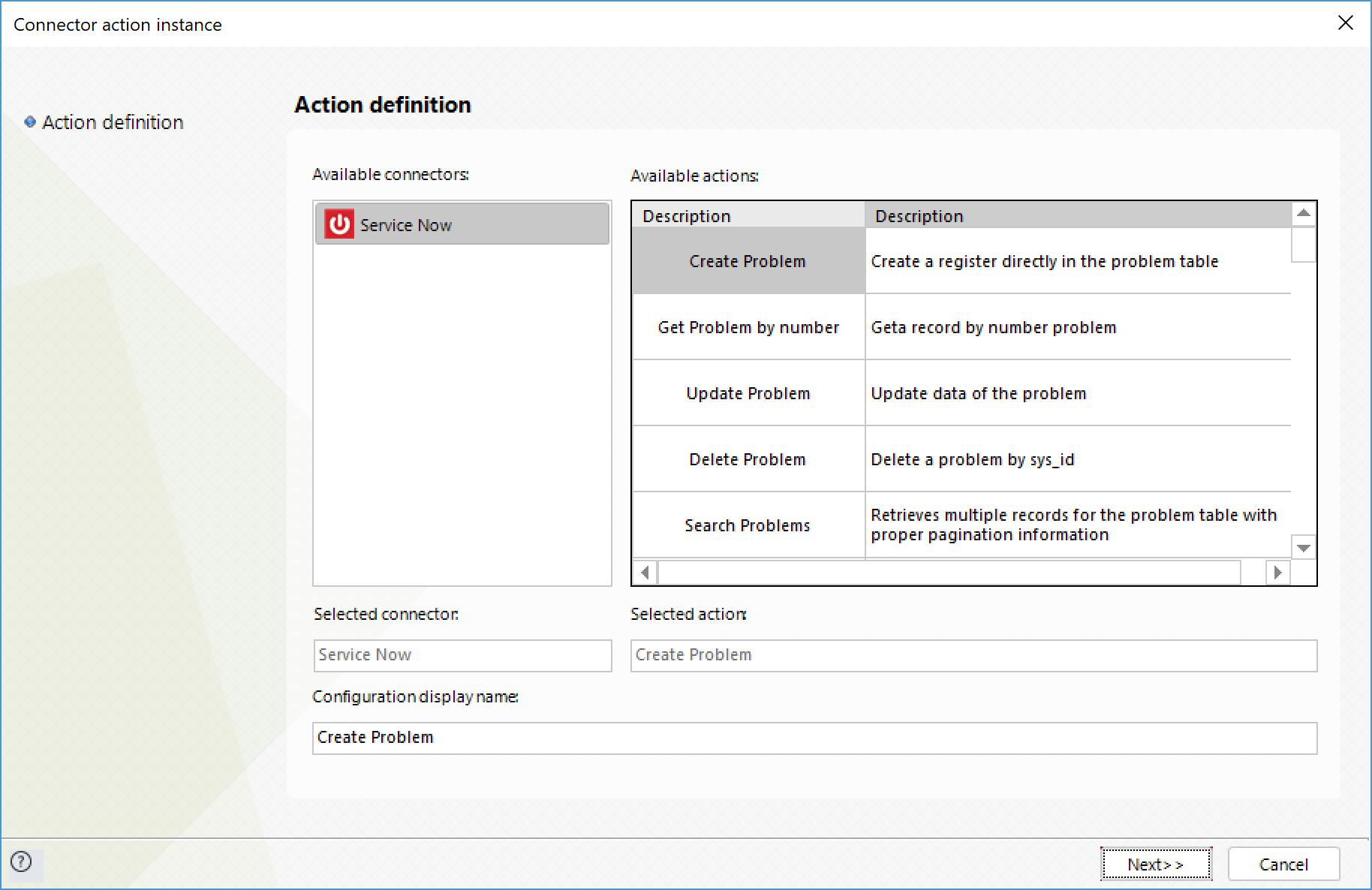
To configure its inputs, consider:
•Description: Problem's description.
•Short_Description: Brief summary of the problem's description. This parameter is required for a successful invocation to this method.
•Urgency: Integer number describing the importance of the matter. Its possible values are.
o1 - to denote a High urgency.
o2 - to denote a medium urgency.
o3 - to denote a low urgency. This is the default value in case it is not explicitly sent in the request.
•Business_Service: ID of the service associated to the Problem.
•cmdb_ci: ID of the configuration item related to the problem.
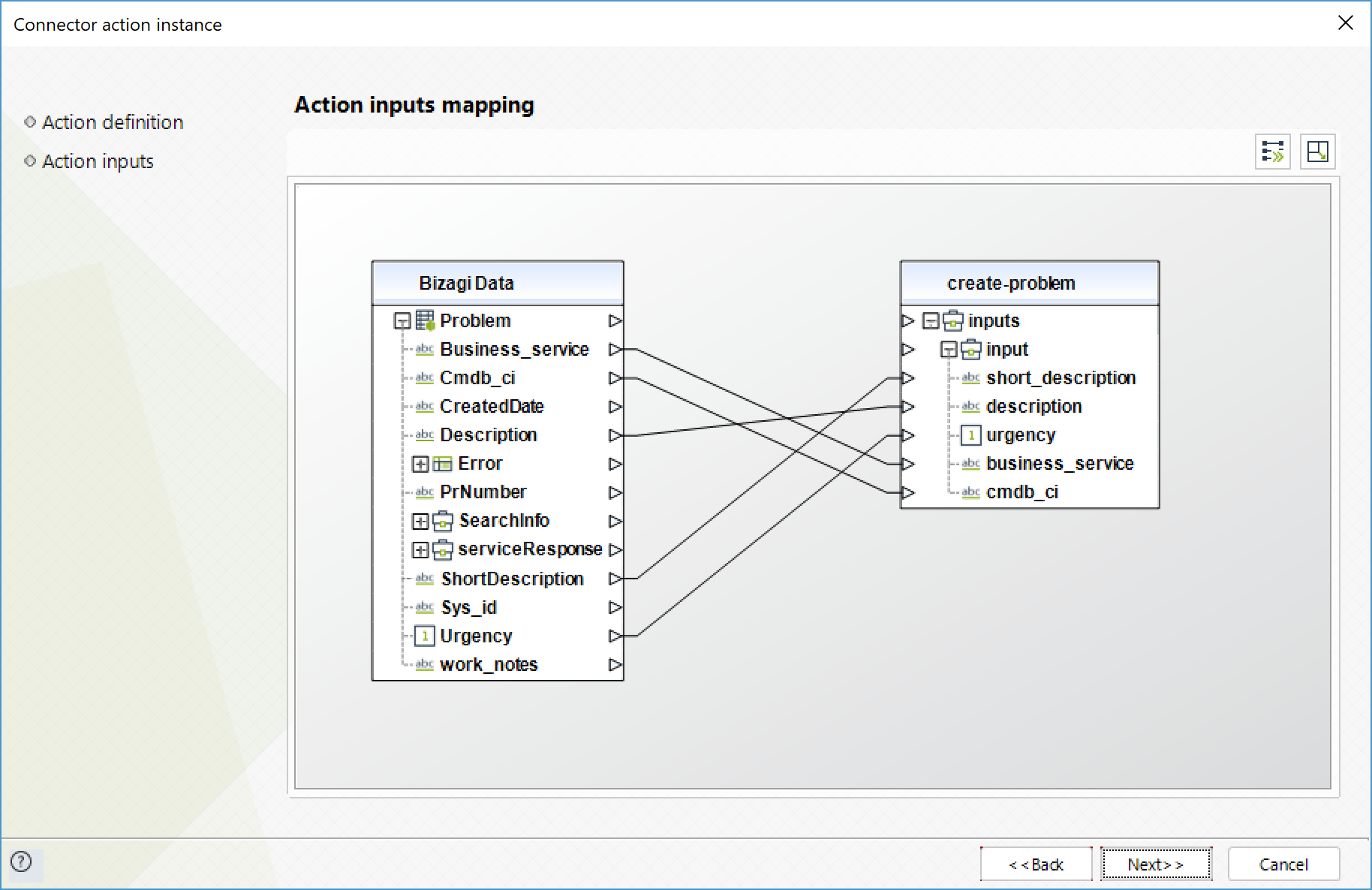
To configure its outputs, consider mapping:
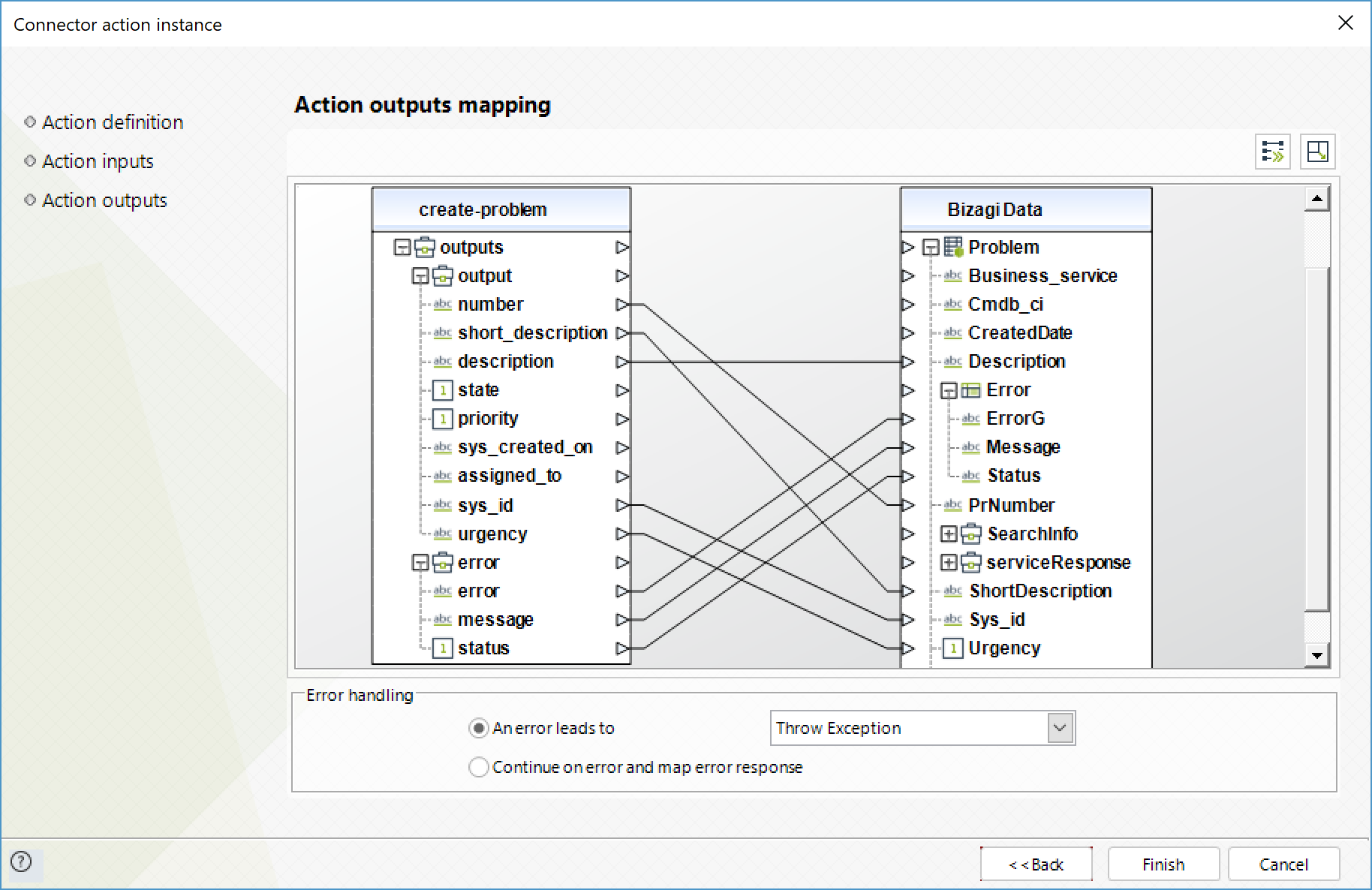
Update problem
Modify or add information to an already existing problem.
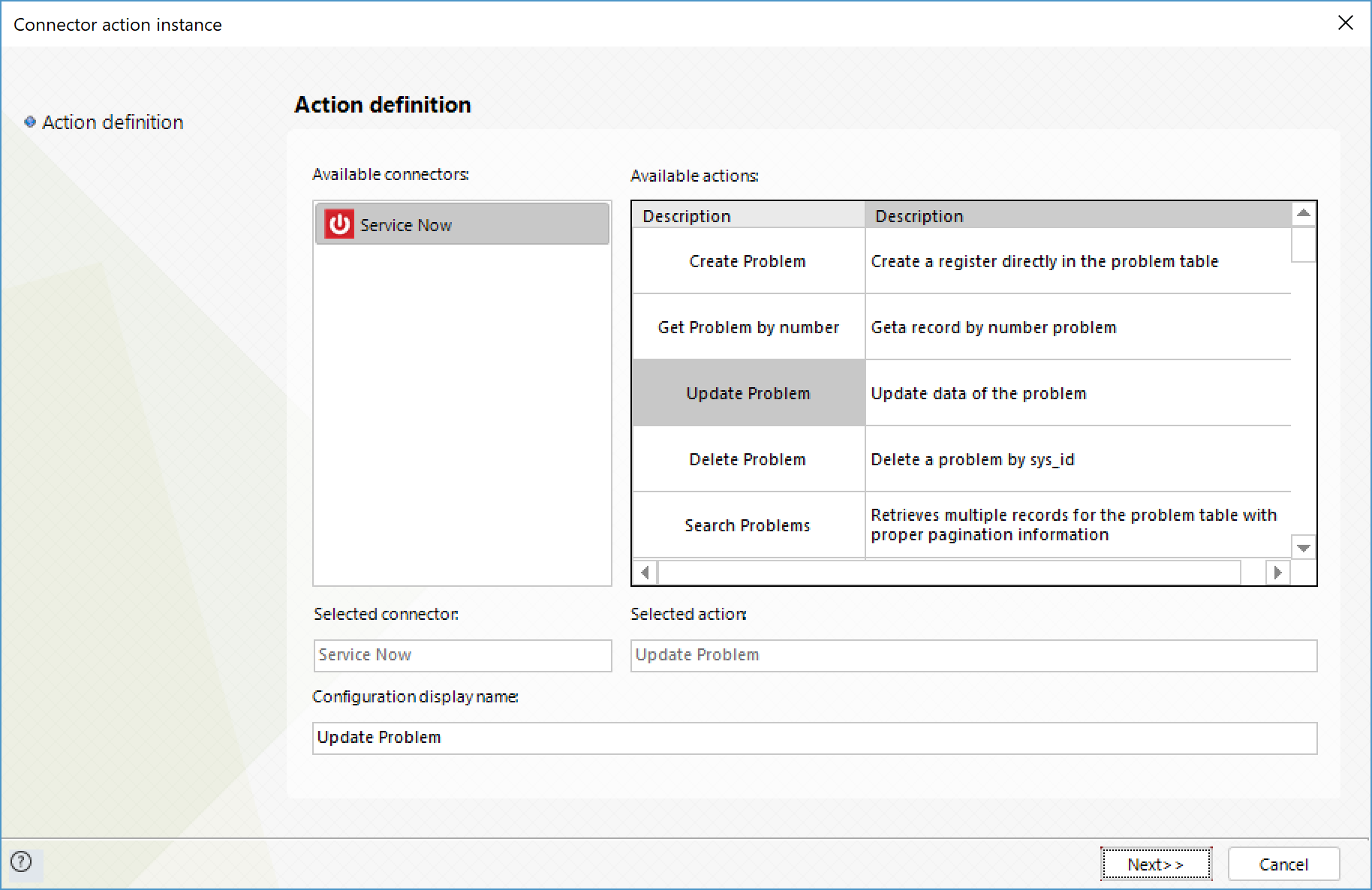
To configure its inputs, consider:
•sys_id: ID of the problem you wish to update. This parameter is required for a successful invocation to this method.
•Description: Problem's description.
•Short_Description: Brief summary of the problem's description.
•Urgency: Integer number describing the importance of the matter. Its possible values are.
o1 - to denote a High urgency.
o2 - to denote a medium urgency.
o3 - to denote a low urgency.
•Work_notes: Information about the problem's development.
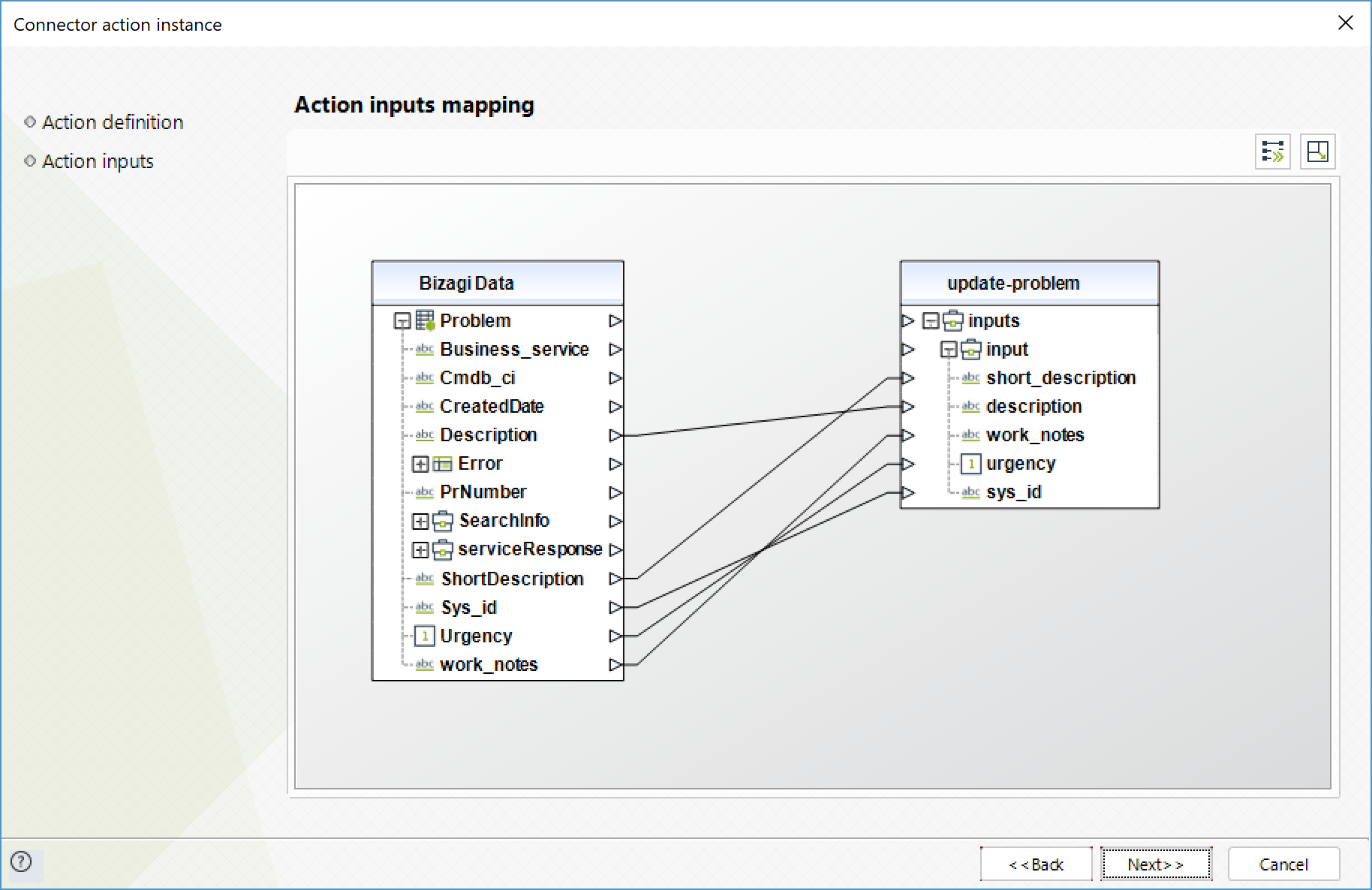
To configure its outputs, consider mapping:
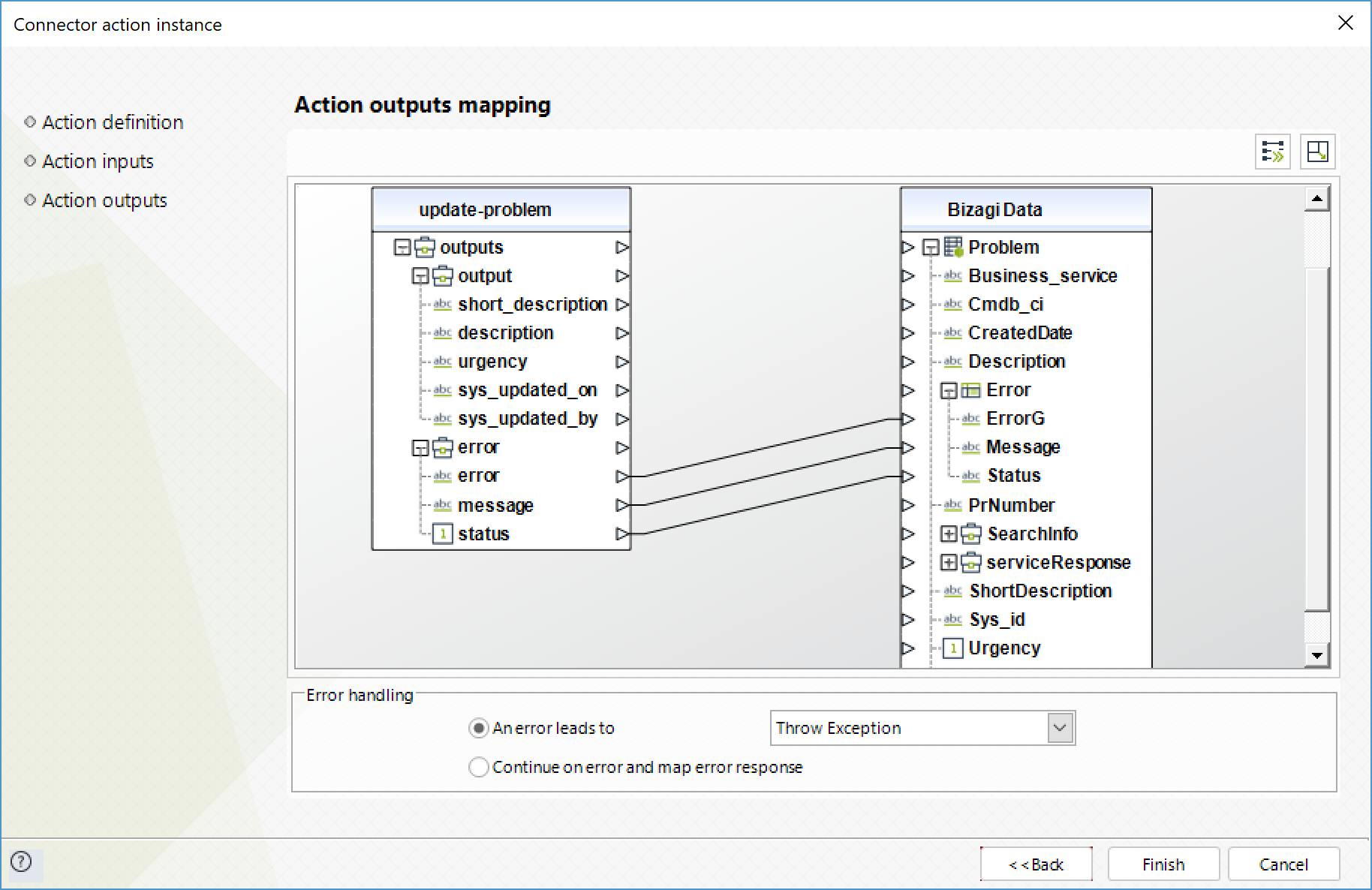
Get problem by ID
Obtain a problem by its System ID.
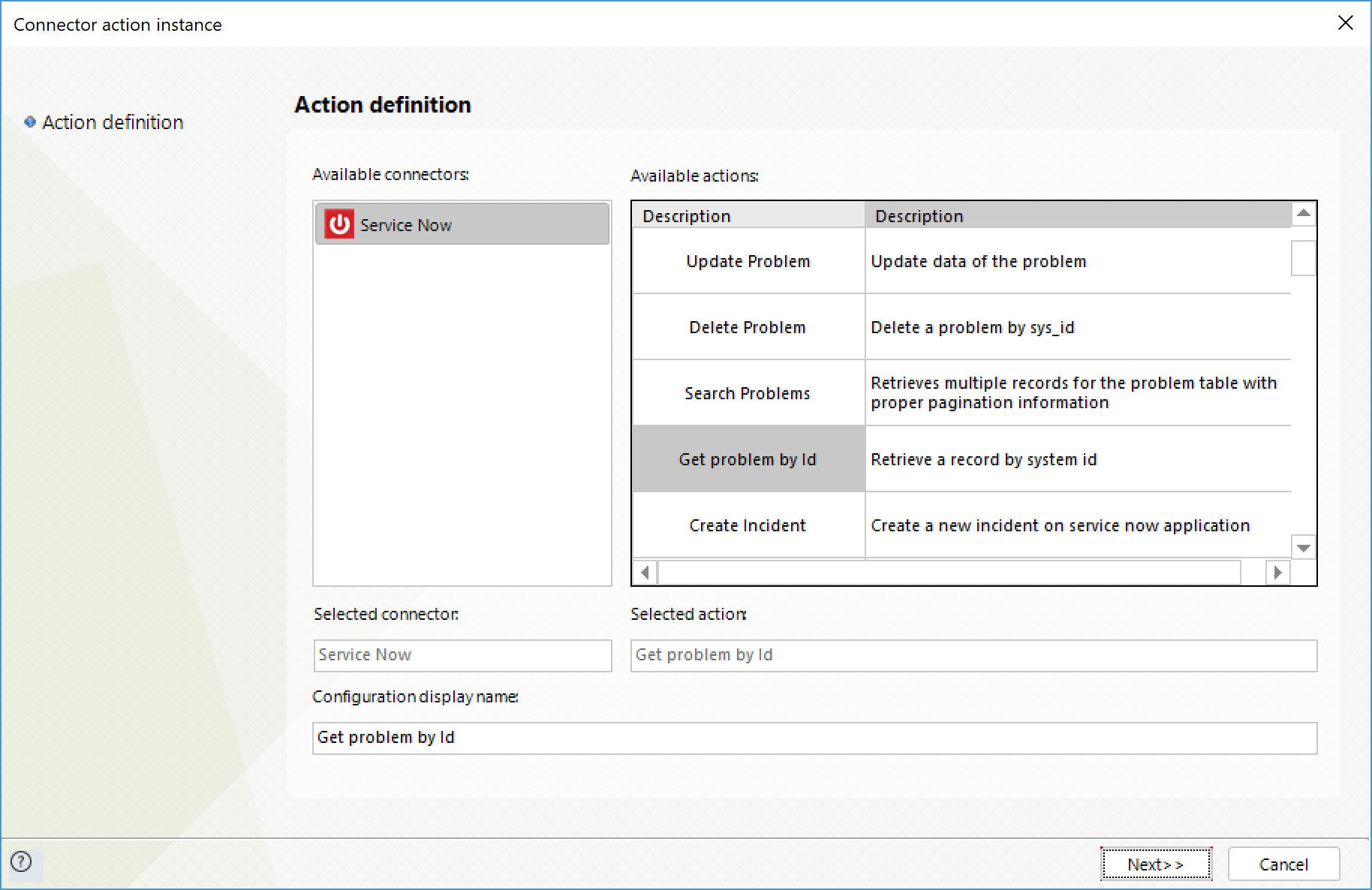
To configure its inputs, consider:
•sys_id: ID of the problem you wish to obtain. This parameter is required for a successful invocation to this method.
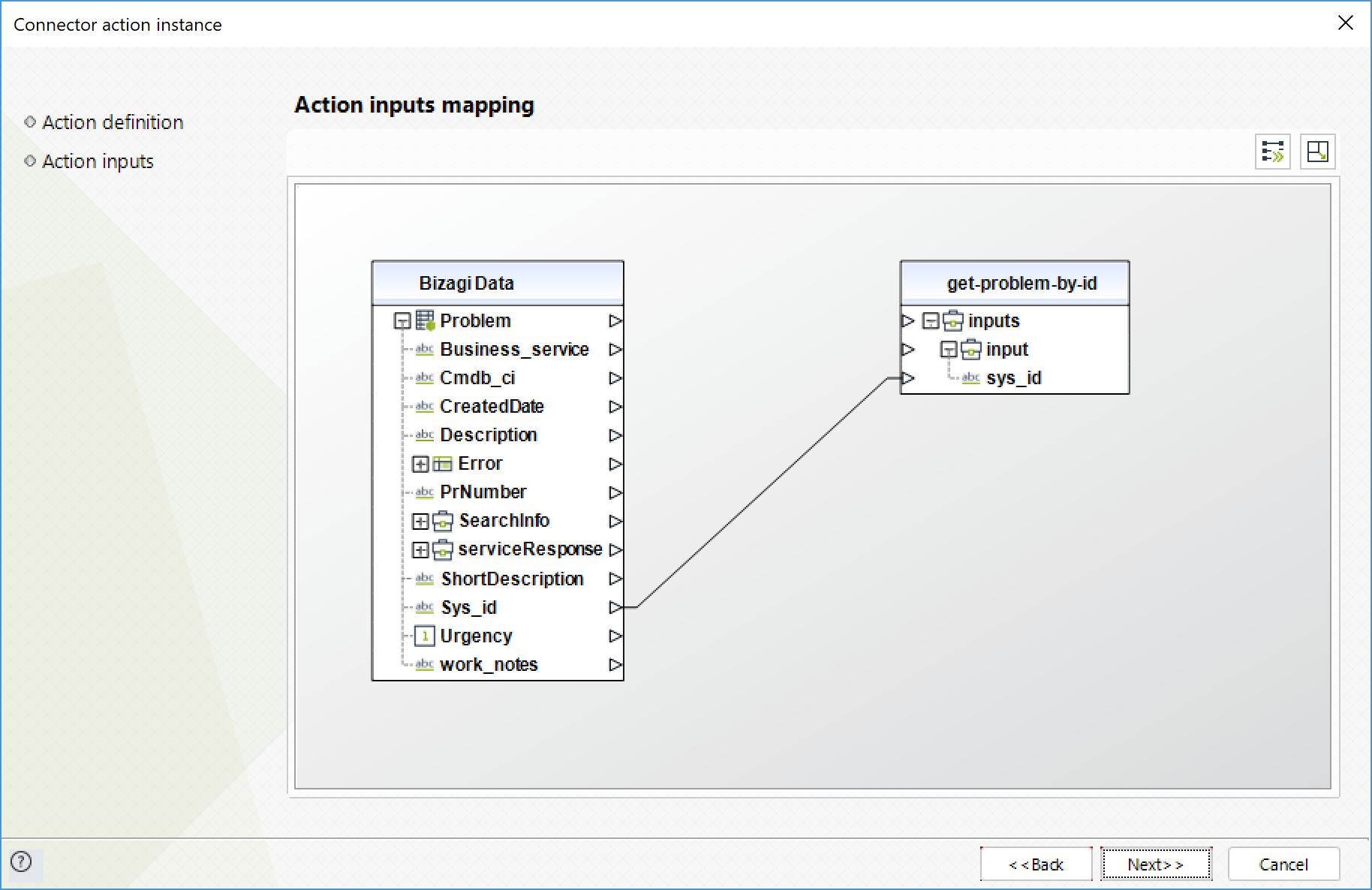
To configure its outputs, consider mapping:
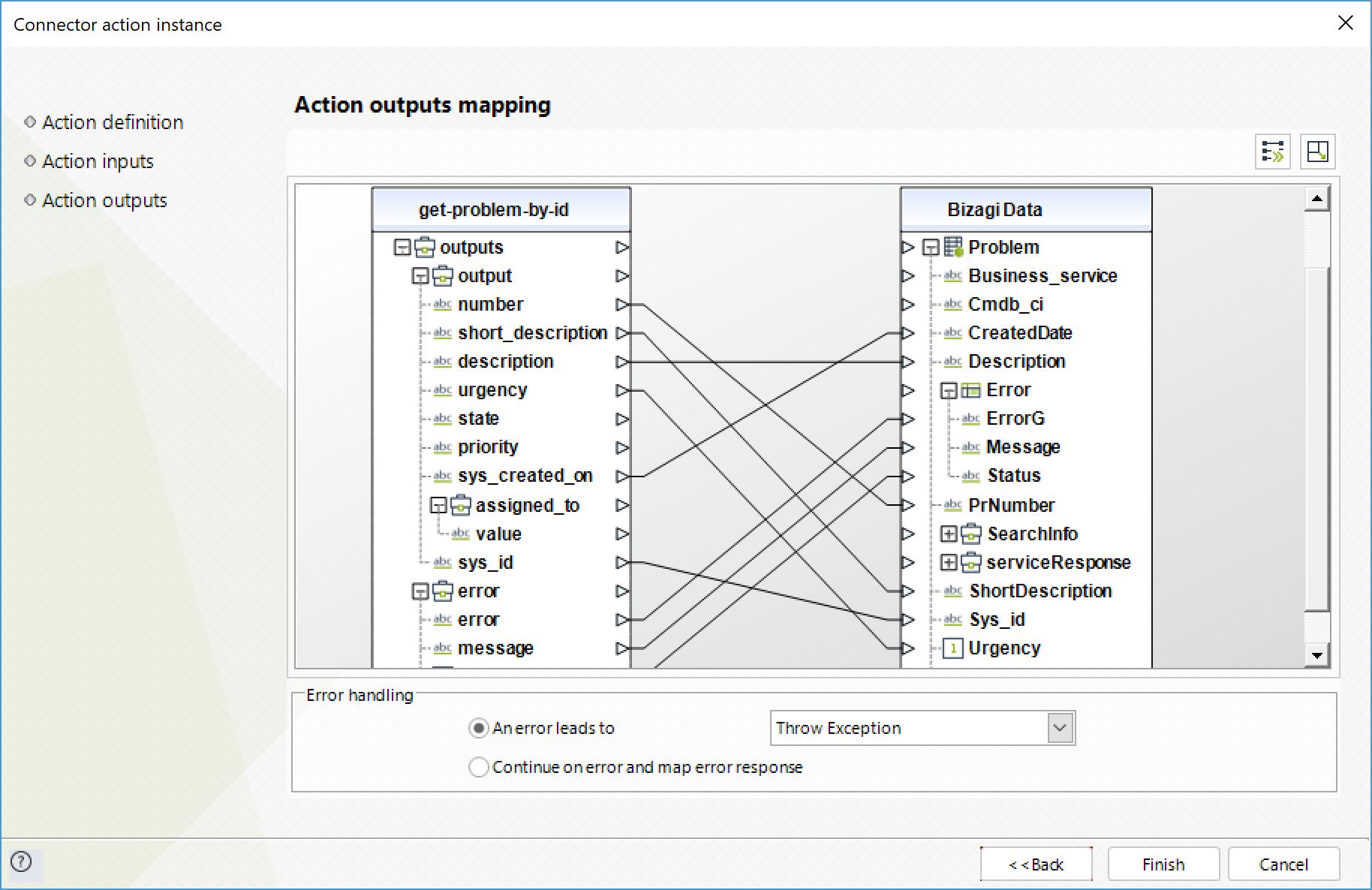
Get problem by Number
Obtain a problem by its associated number.
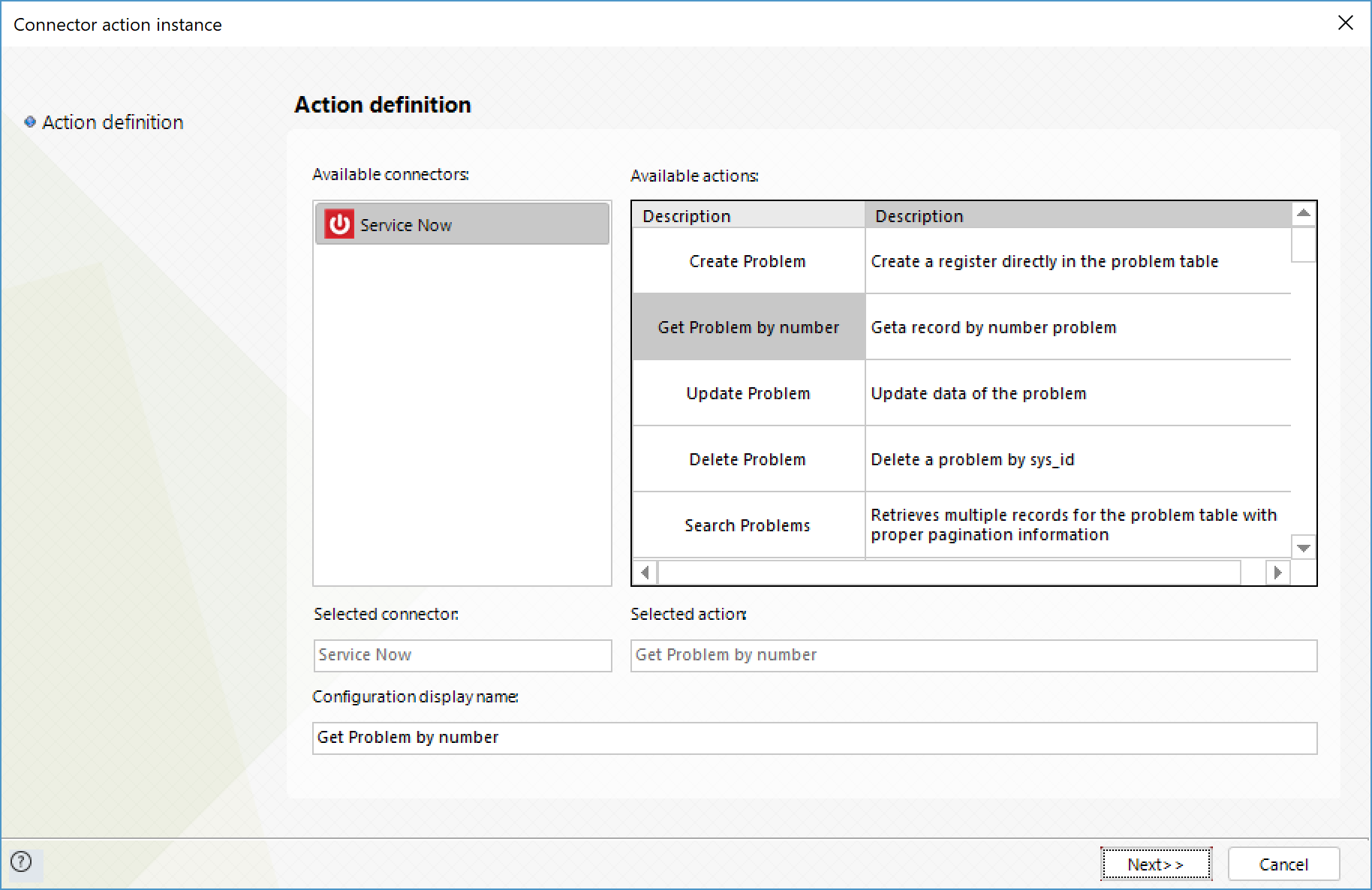
To configure its inputs, consider:
•Problem_number: Number of the problem you wish to obtain. This parameter is required for a successful invocation to this method.
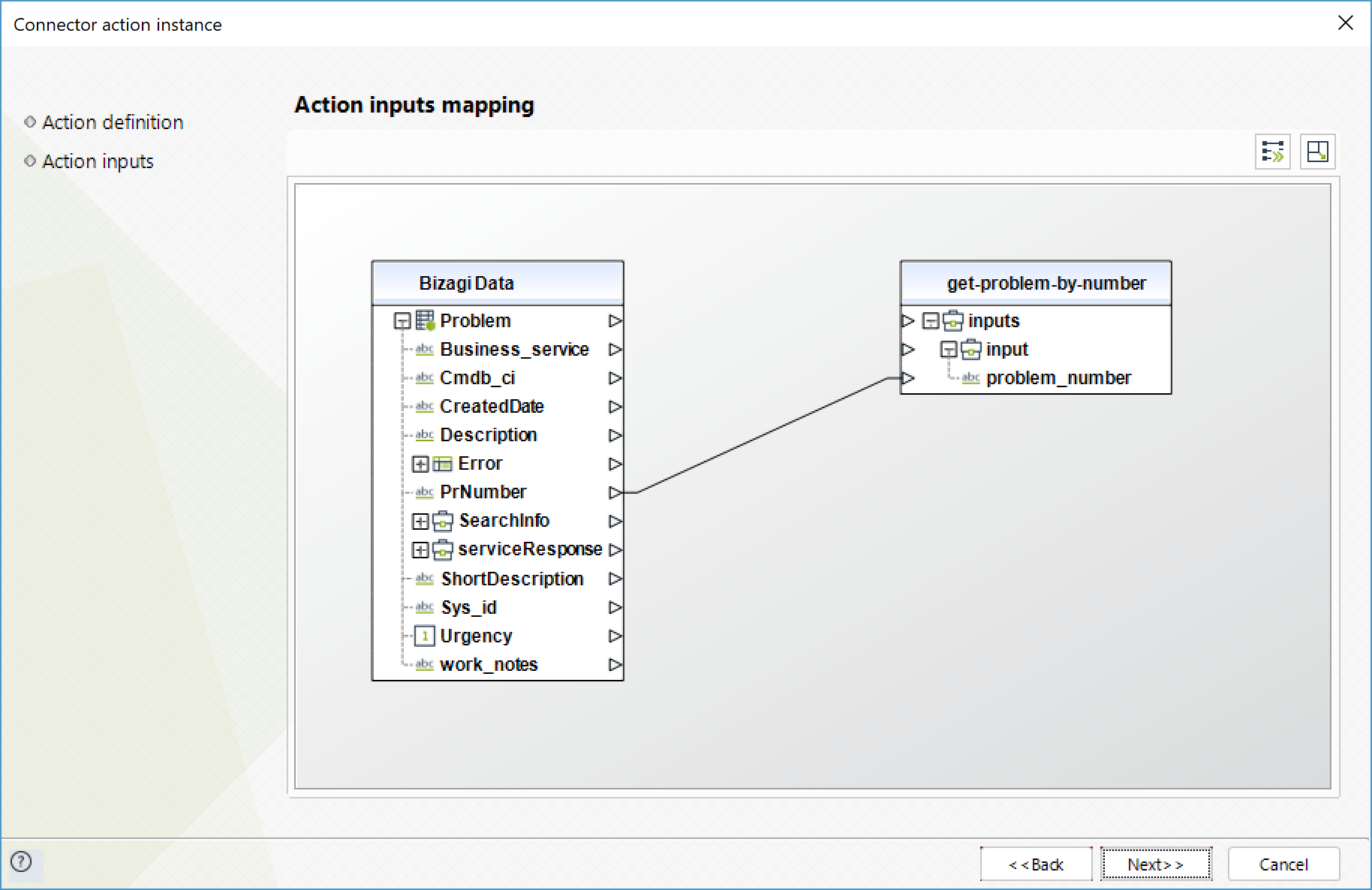
To configure its outputs, consider mapping:
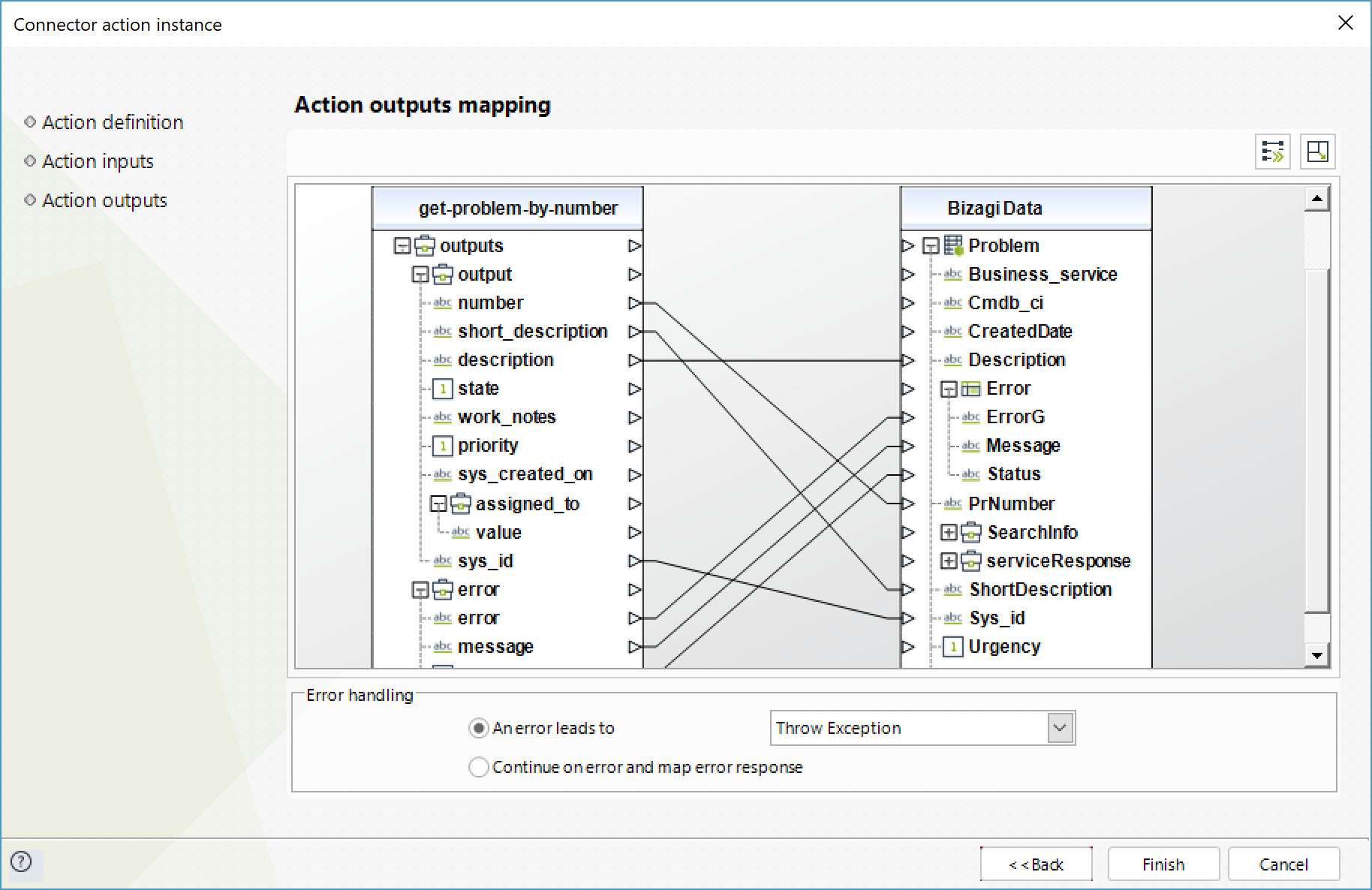
Search problems
Obtain a list of problems matching the search parameters.
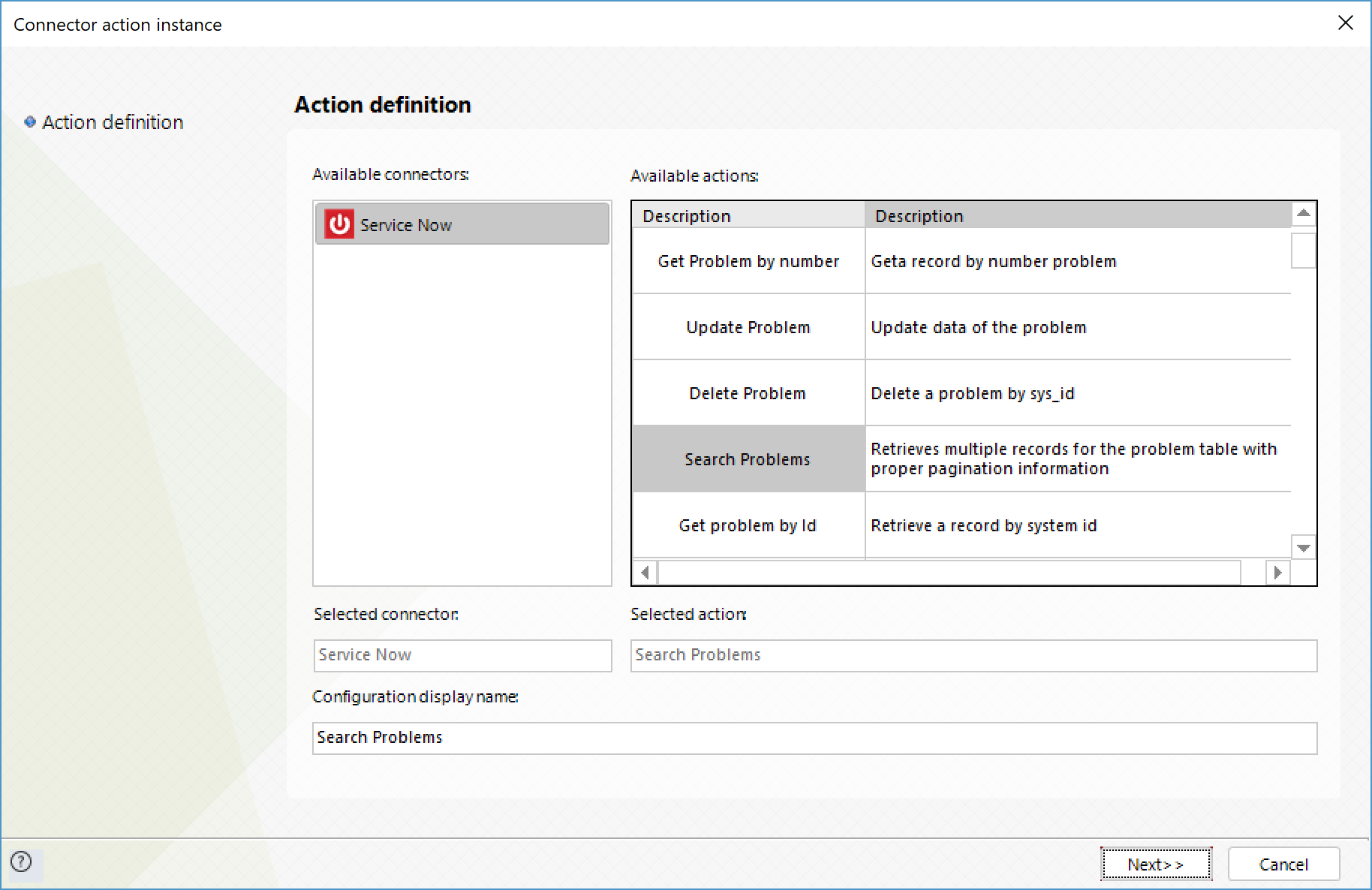
To configure its inputs, consider:
•Keyword: String to search for in Descriptions and Short descriptions of the existent problems.
•Sysparamlimit: Maximum amount of results to retrieve. This parameter is required for a successful invocation to this method.
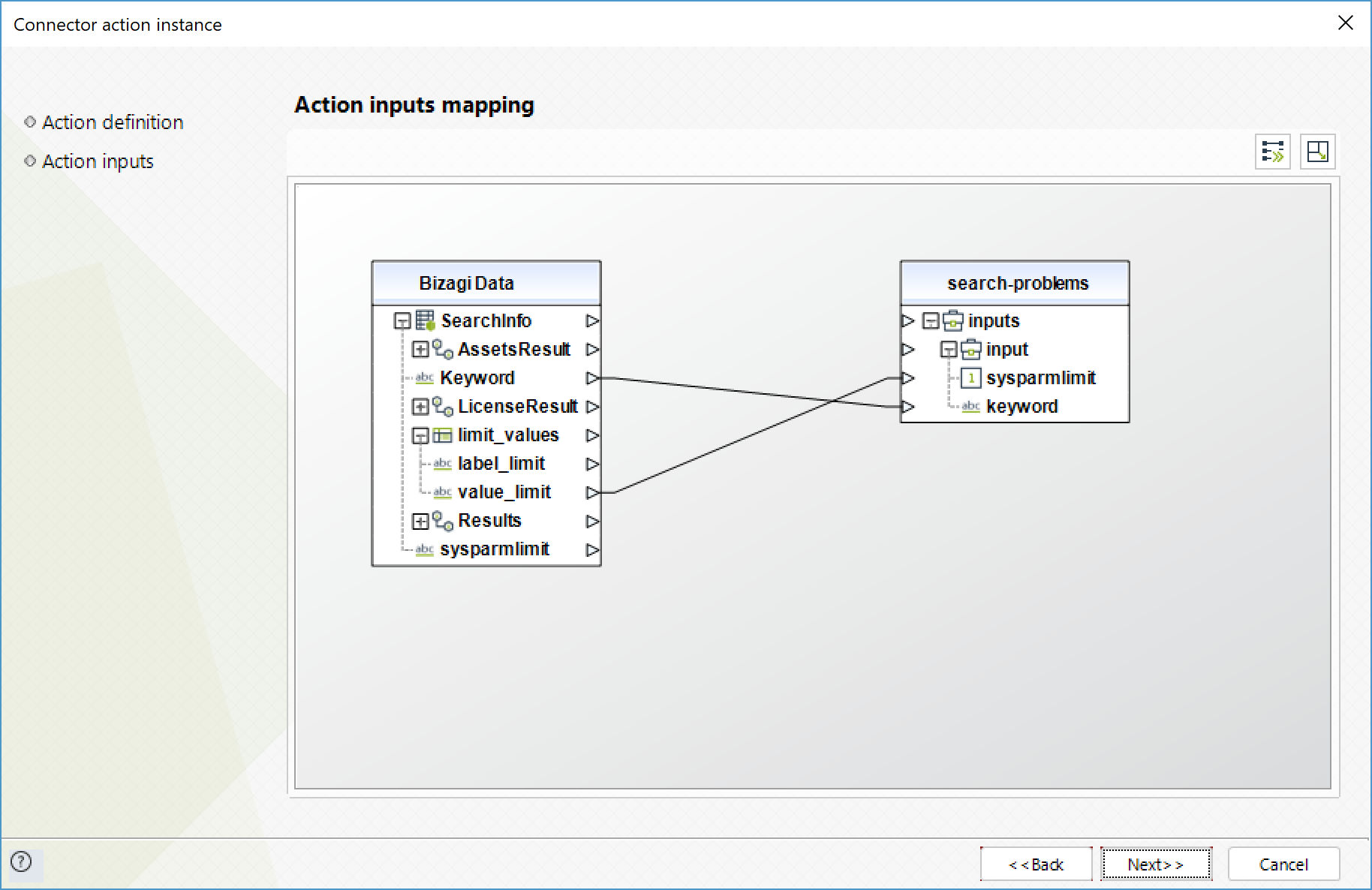
To configure its outputs, consider mapping:
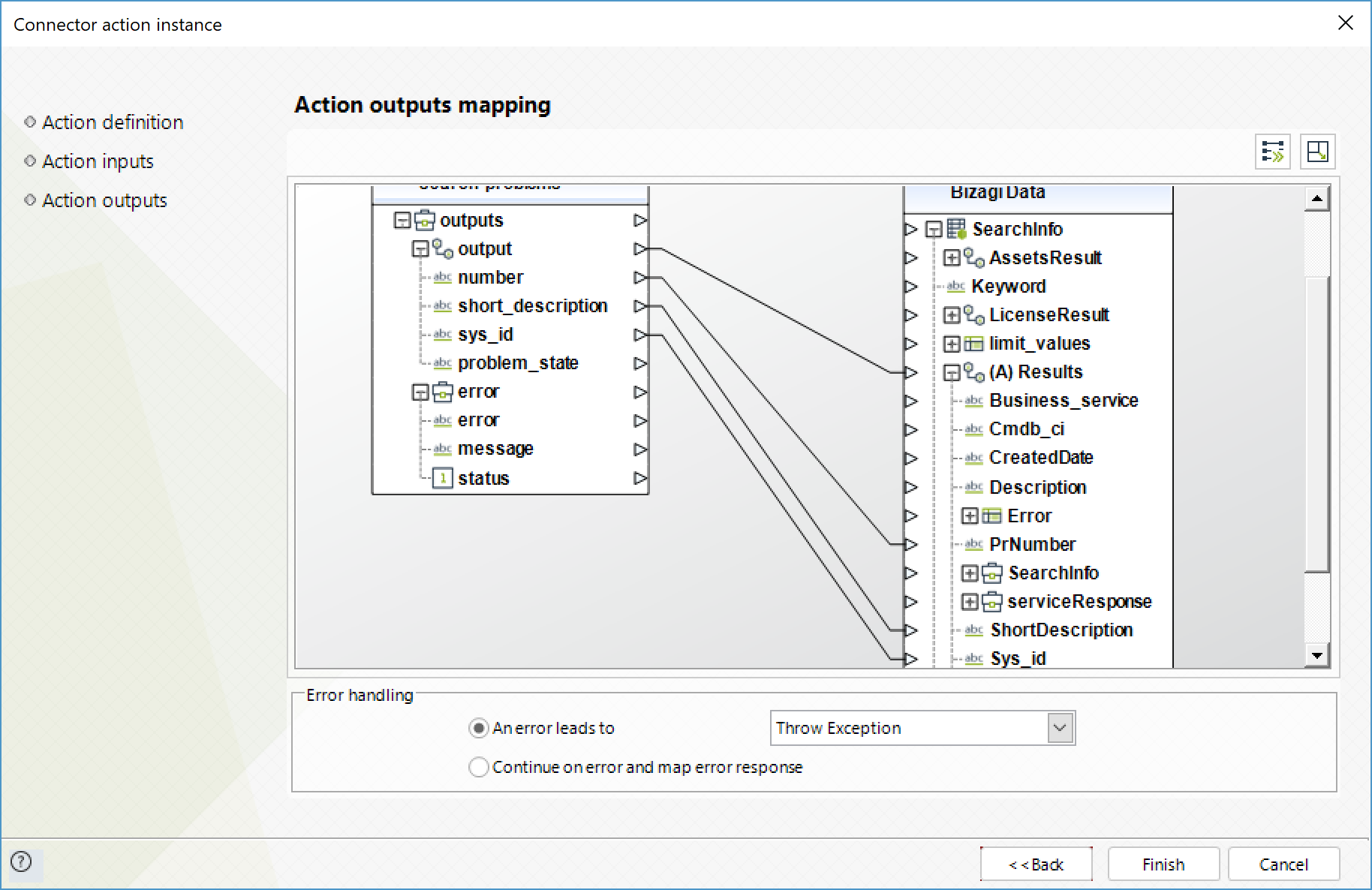
Delete problem
Delete a specific problem.
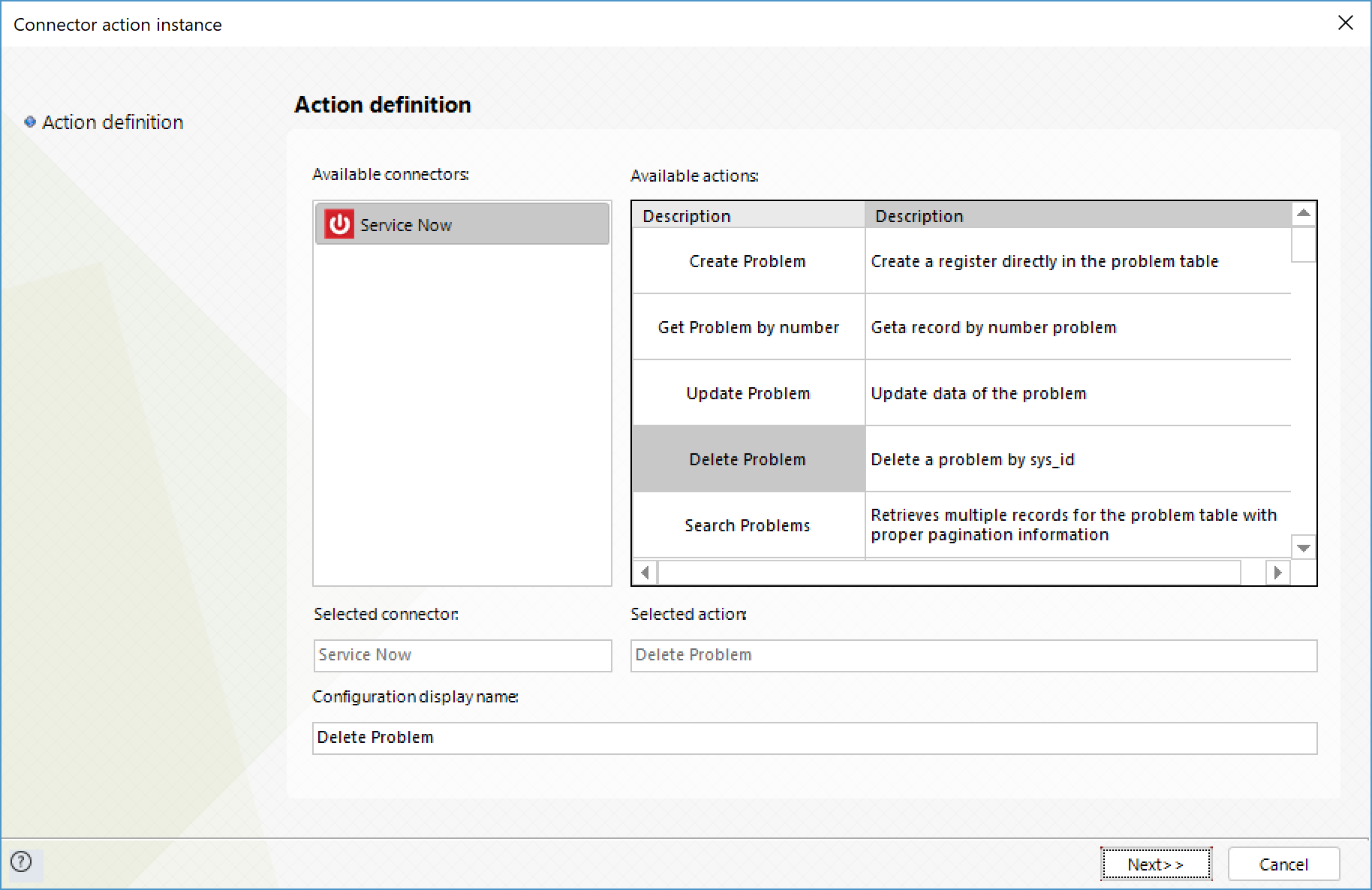
To configure its inputs, consider:
•sys_id: System ID of the problem you wish to delete. This parameter is required for a successful service invocation.

To configure its outputs, consider mapping:
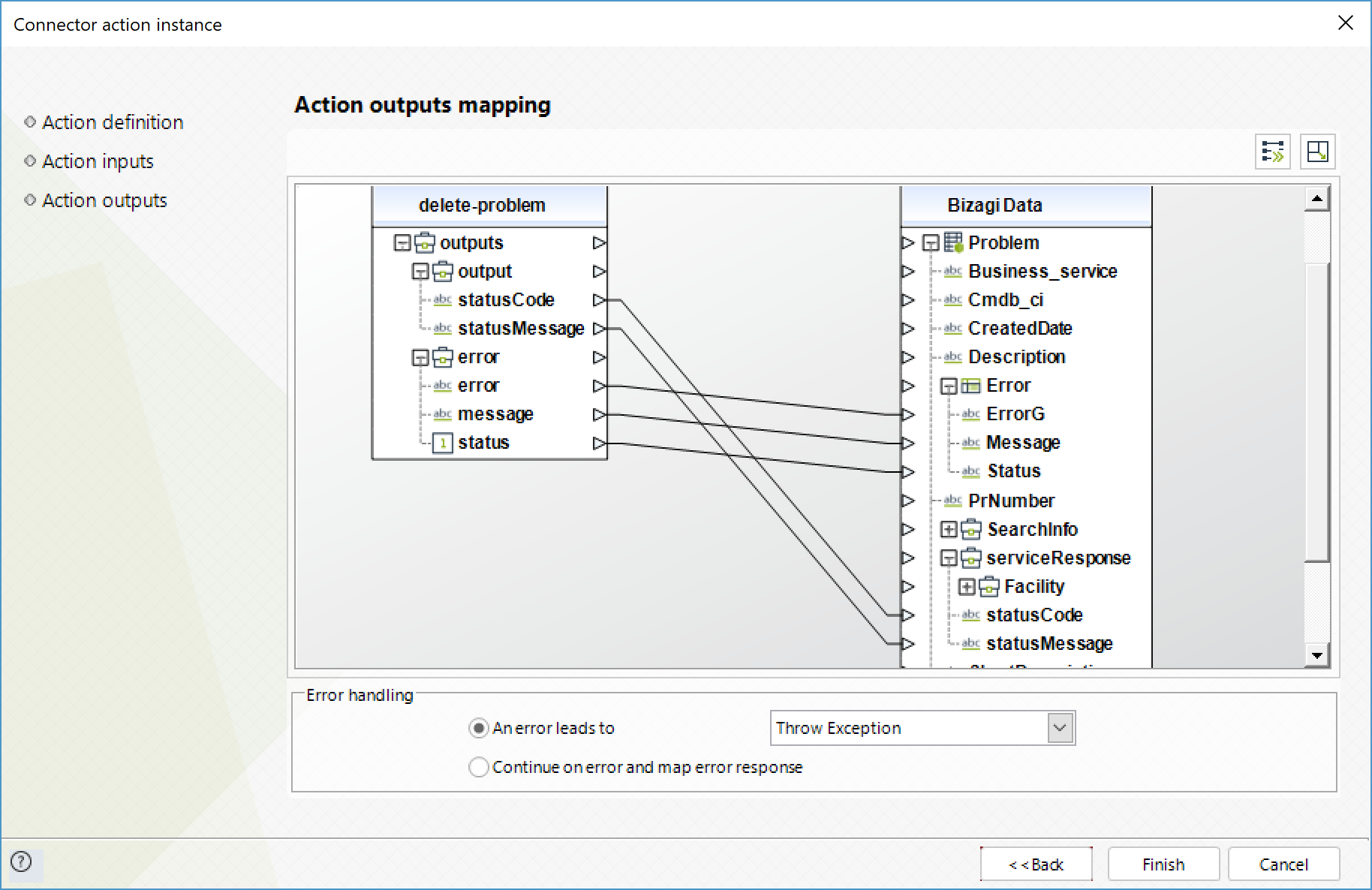
Create incident
Register a new incident.
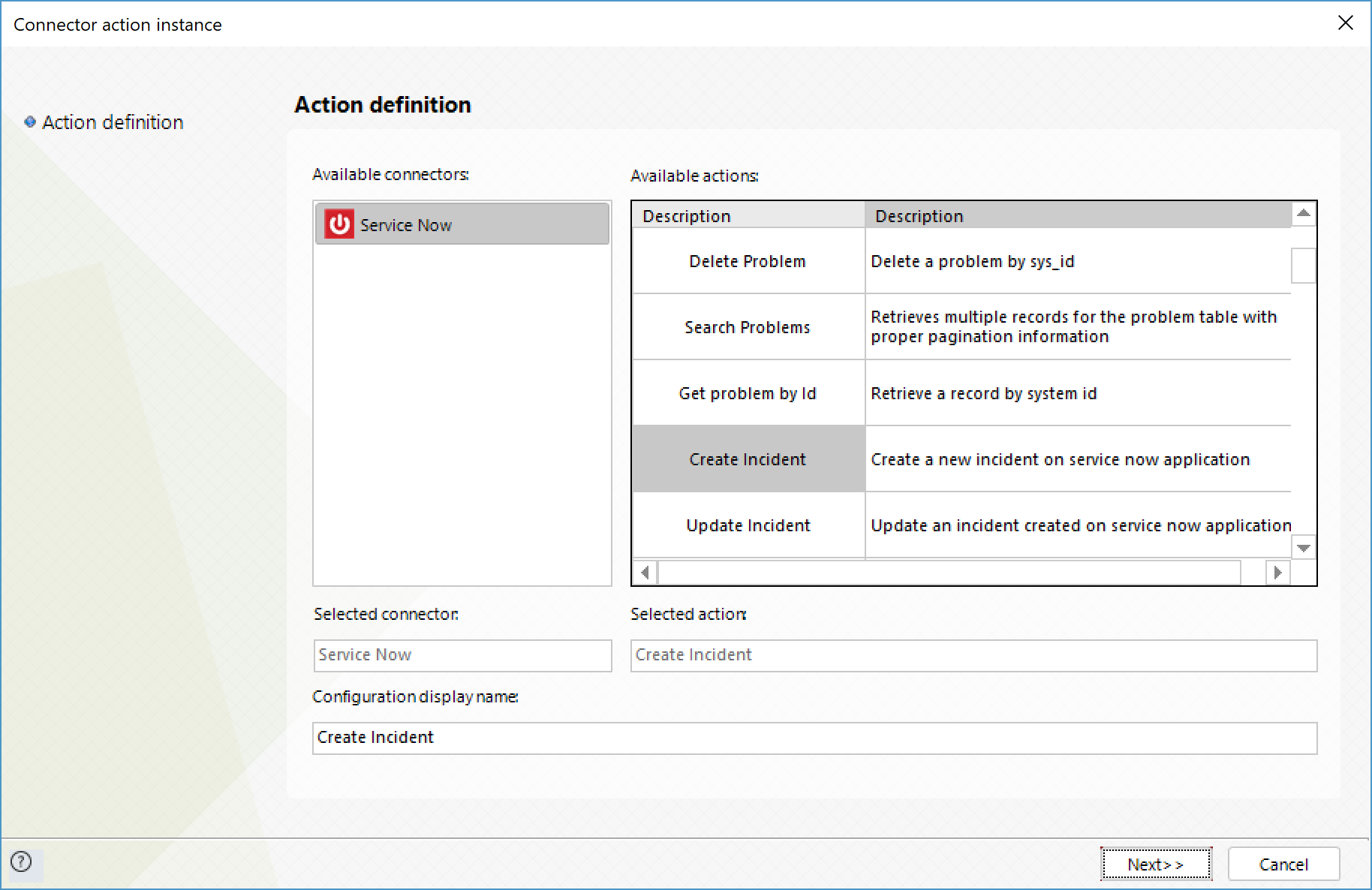
To configure its inputs, consider:
•Caller_id: ID of the user creating the incident.
•Urgency: Integer number describing the importance of the matter. Its possible values are.
o1 - to denote a High urgency.
o2 - to denote a medium urgency.
o3 - to denote a low urgency. This is the default value when no urgency is specified.
•Short_Description: Brief description of the incident. This parameter is required for a successful service invocation.
•Comments: Further details about the incident.
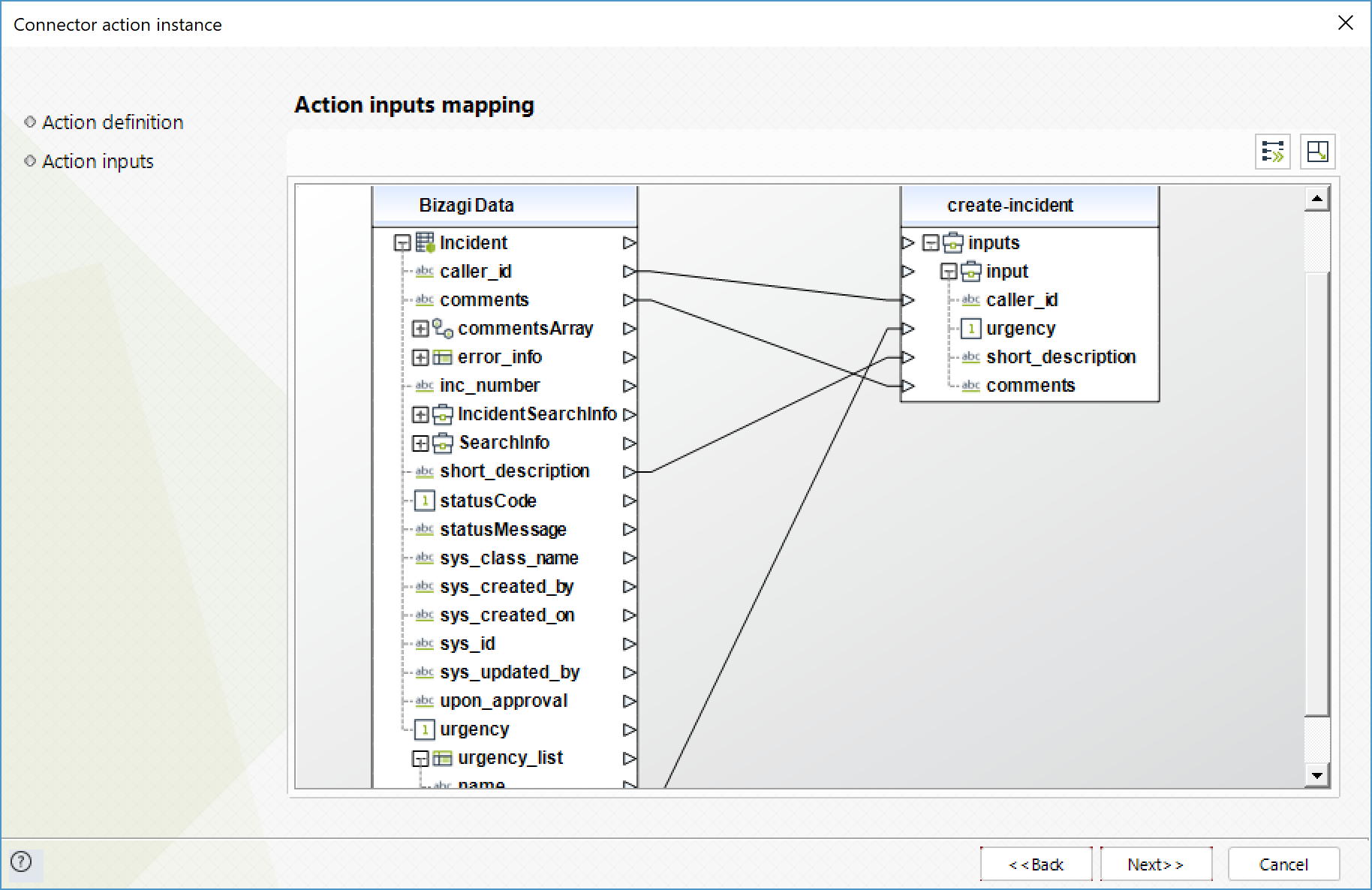
To configure its outputs, consider mapping:
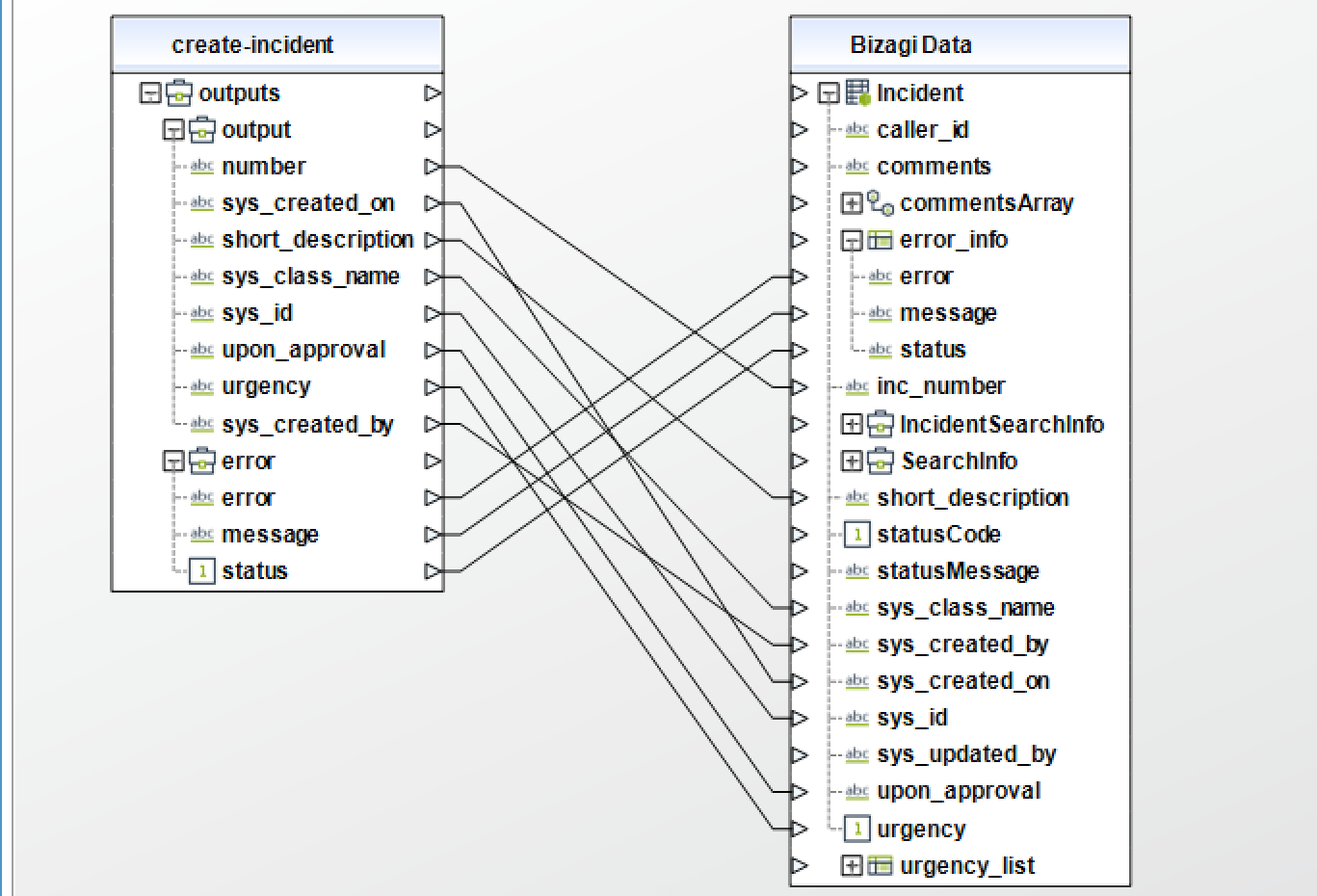
Update incident
Modify or add information to an incident.

To configure its inputs, consider:
•Sys_Id: System ID of the incident you wish to update. This parameter is required for a successful service invocation.
•Caller_id: ID of the user creating the incident.
•Urgency: Integer number describing the importance of the matter. Its possible values are.
o1 - to denote a High urgency.
o2 - to denote a medium urgency.
o3 - to denote a low urgency. This is the default value when no urgency is specified.
•Short_Description: Brief description of the incident. This parameter is required for a successful service invocation.
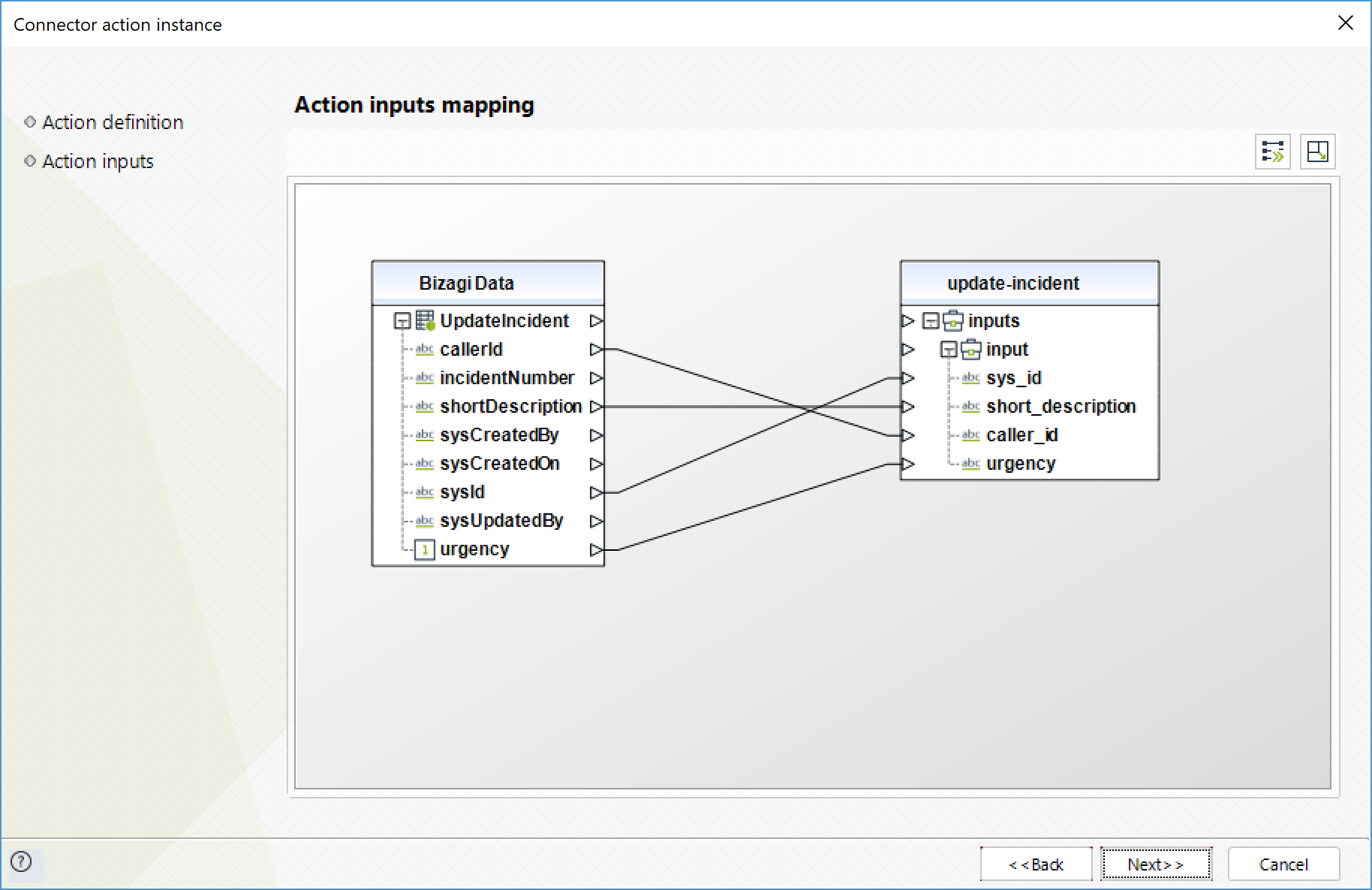
To configure its outputs, consider mapping:
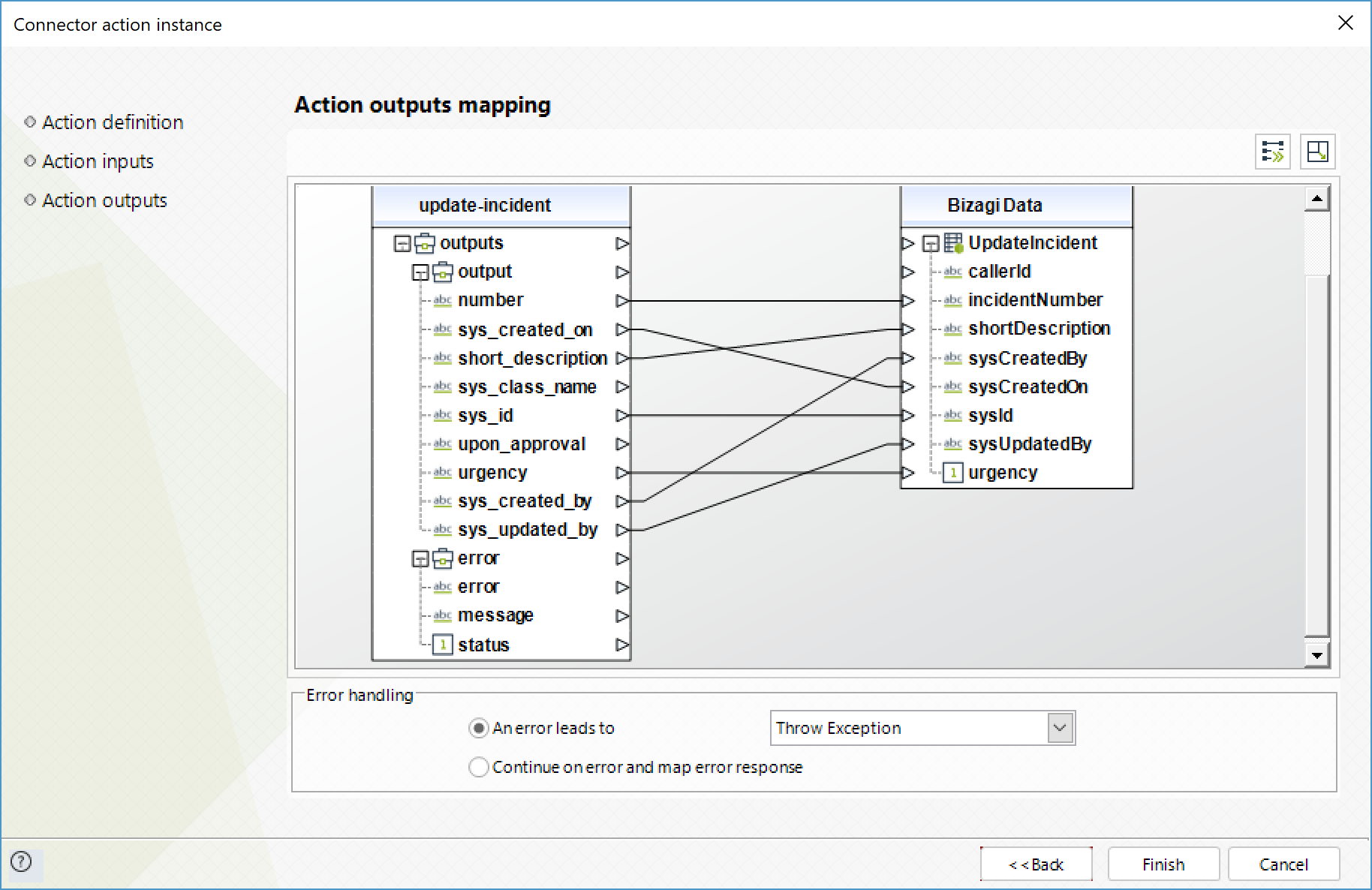
Delete incident
Delete a specific incident.
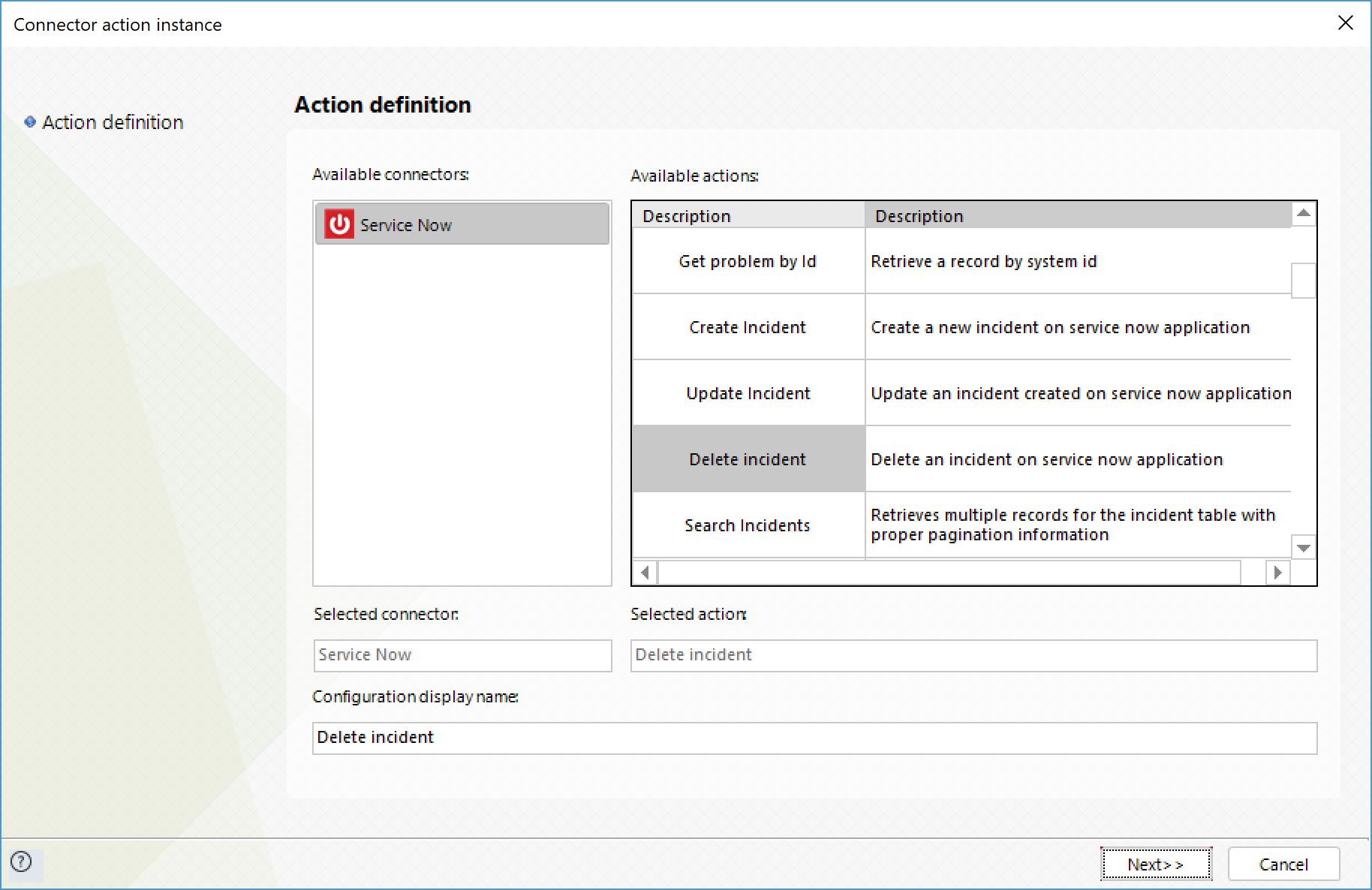
To configure its inputs, consider:
•Sys_id: System ID of the incident you wish to delete. This parameter is required for a successful service invocation.
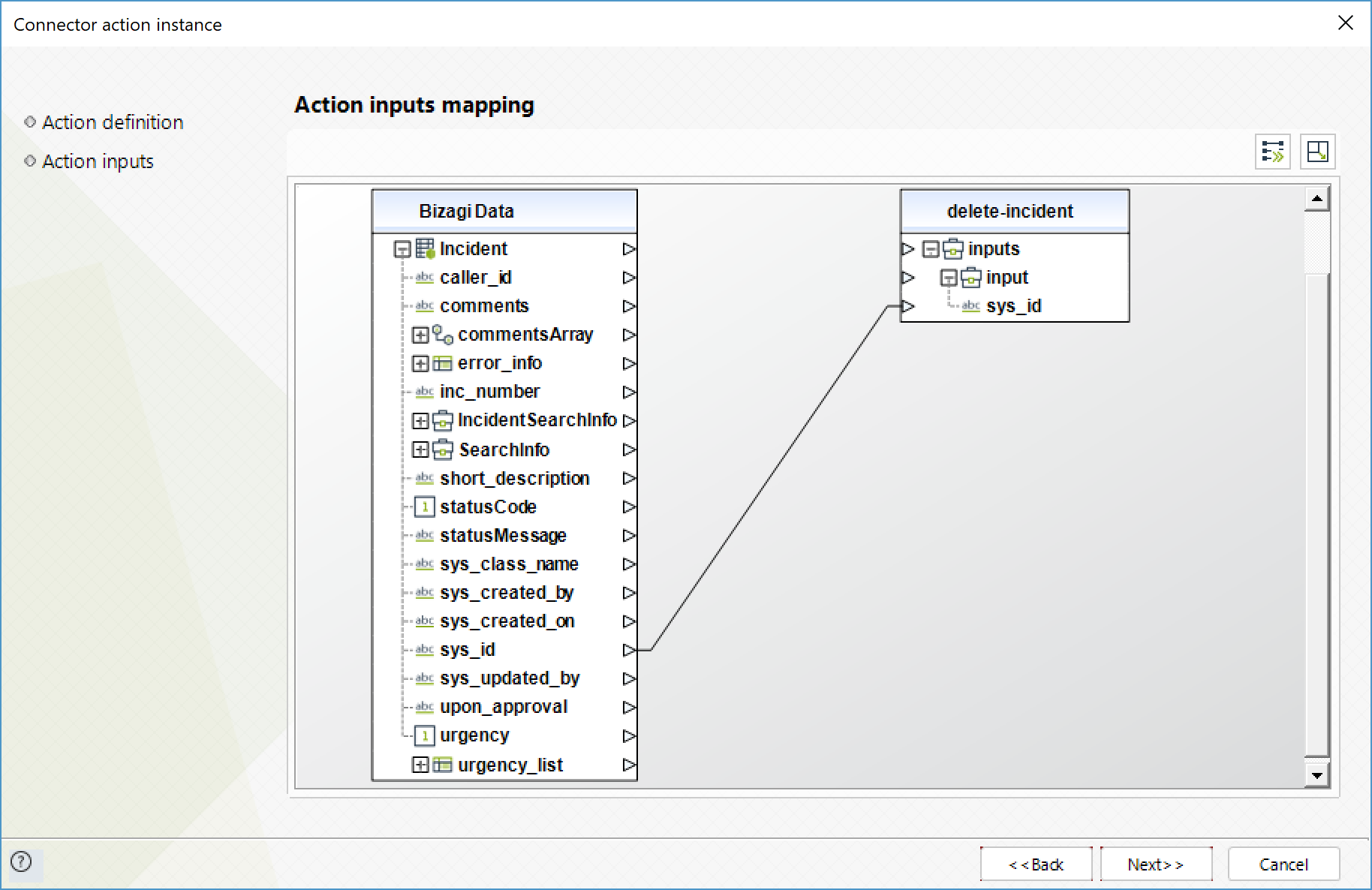
To configure its outputs, consider mapping:
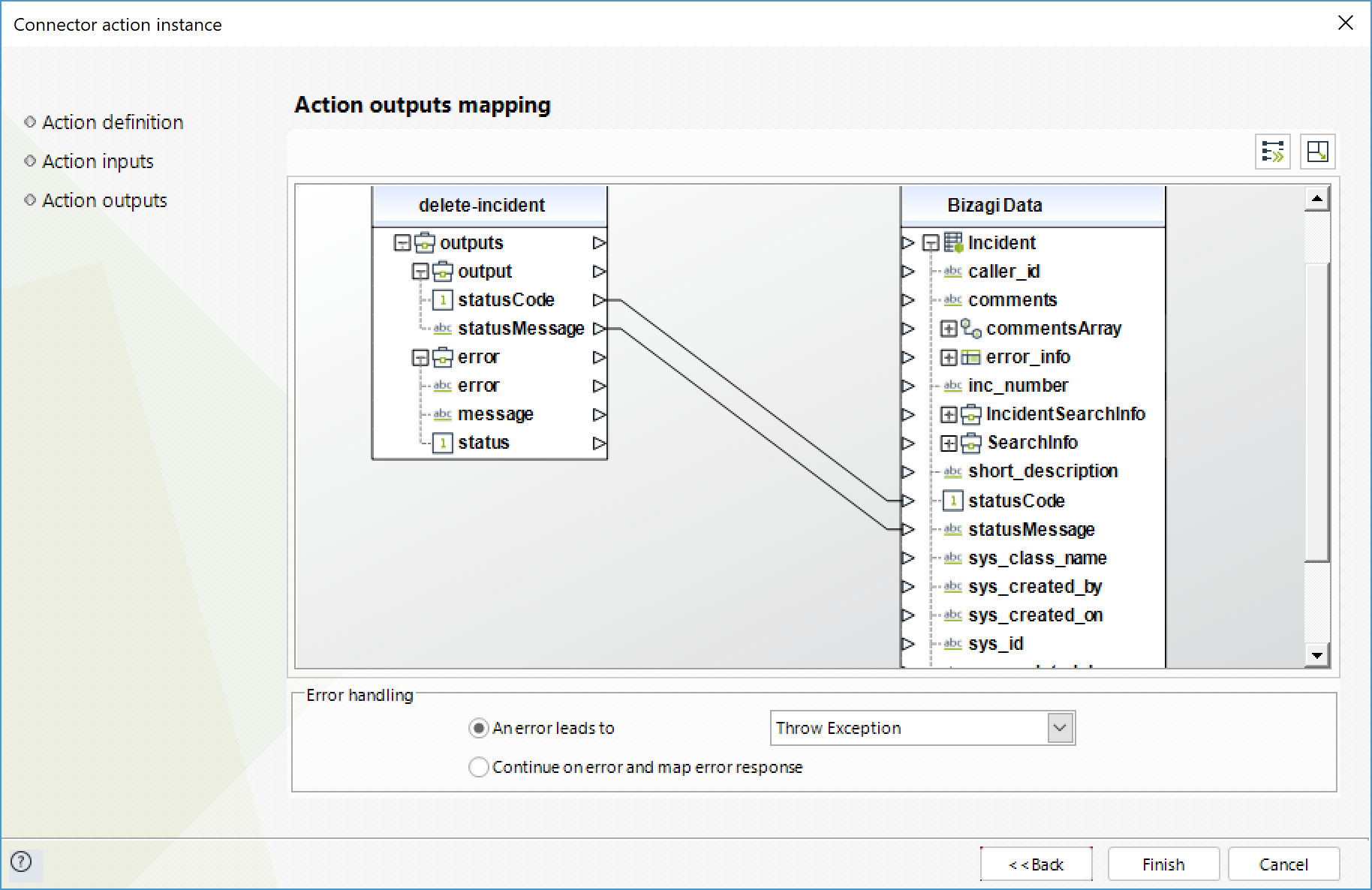
Search incidents
Obtain a list of incidents matching the search parameters.
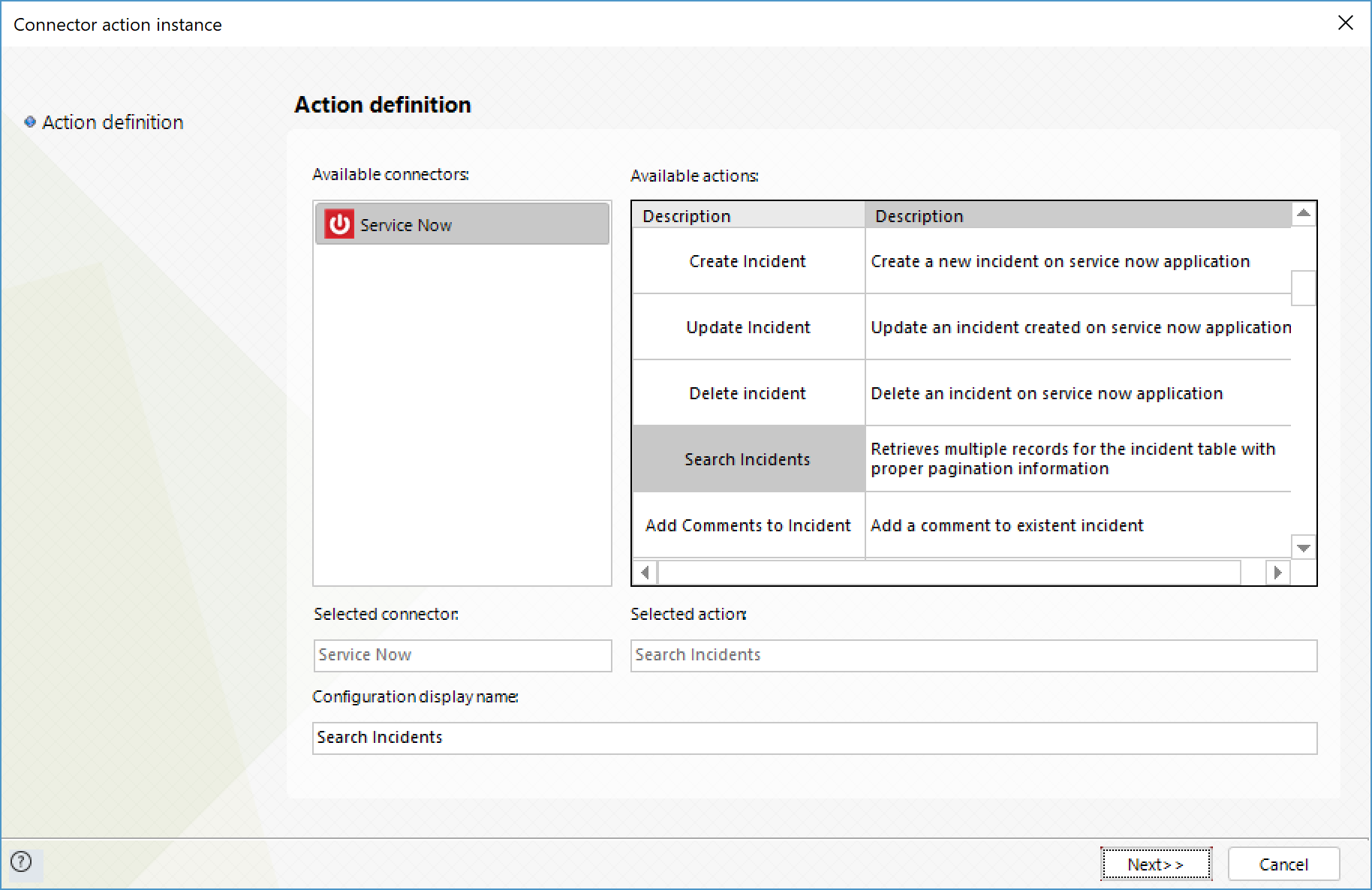
To configure its inputs, consider:
•Keyword: String to search for in the incidents.
•Sysparamlimit: Maximum number of results to retrieve. This parameter is required for a successful invocation to this method.
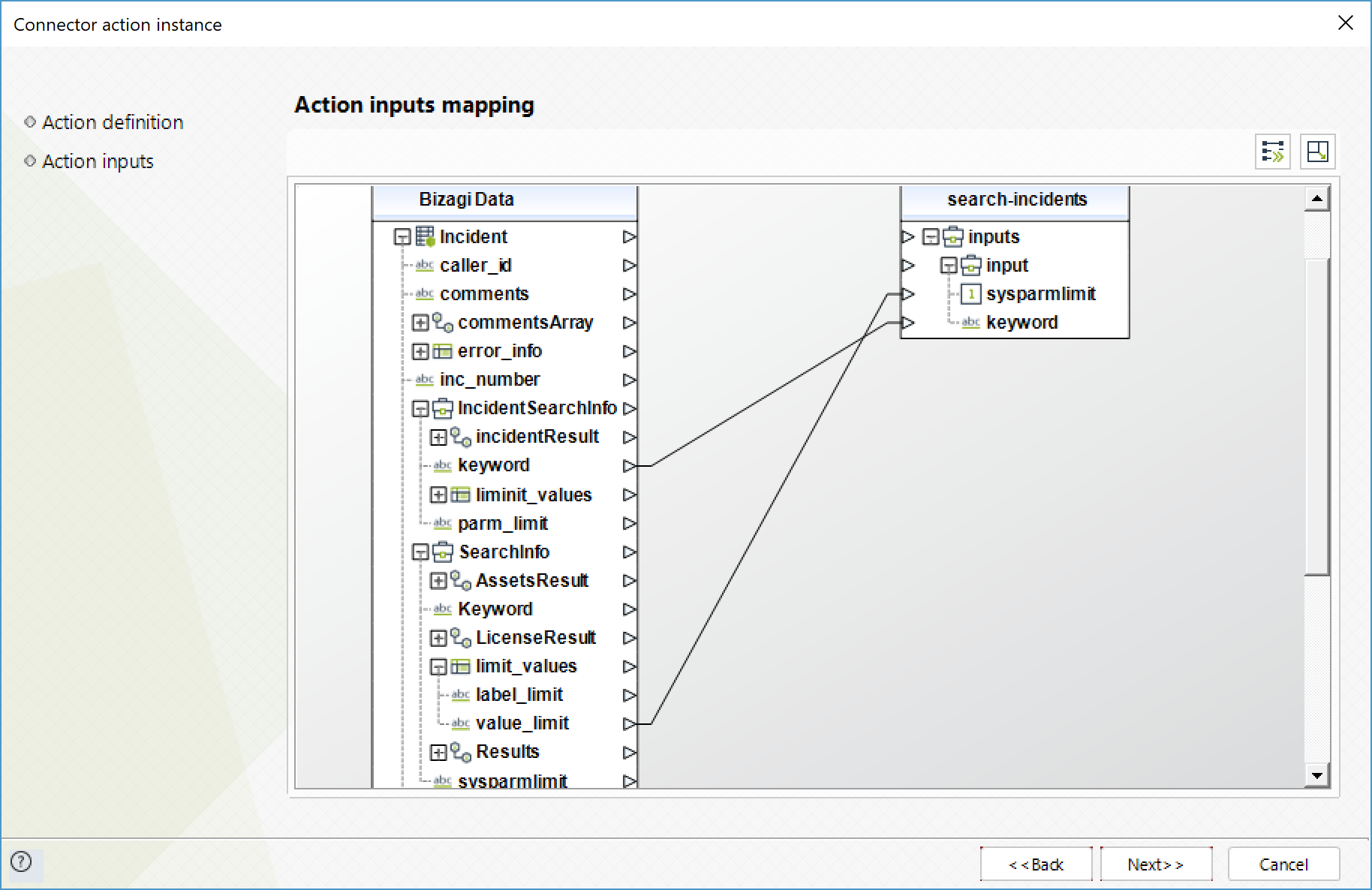
To configure its outputs, consider mapping:
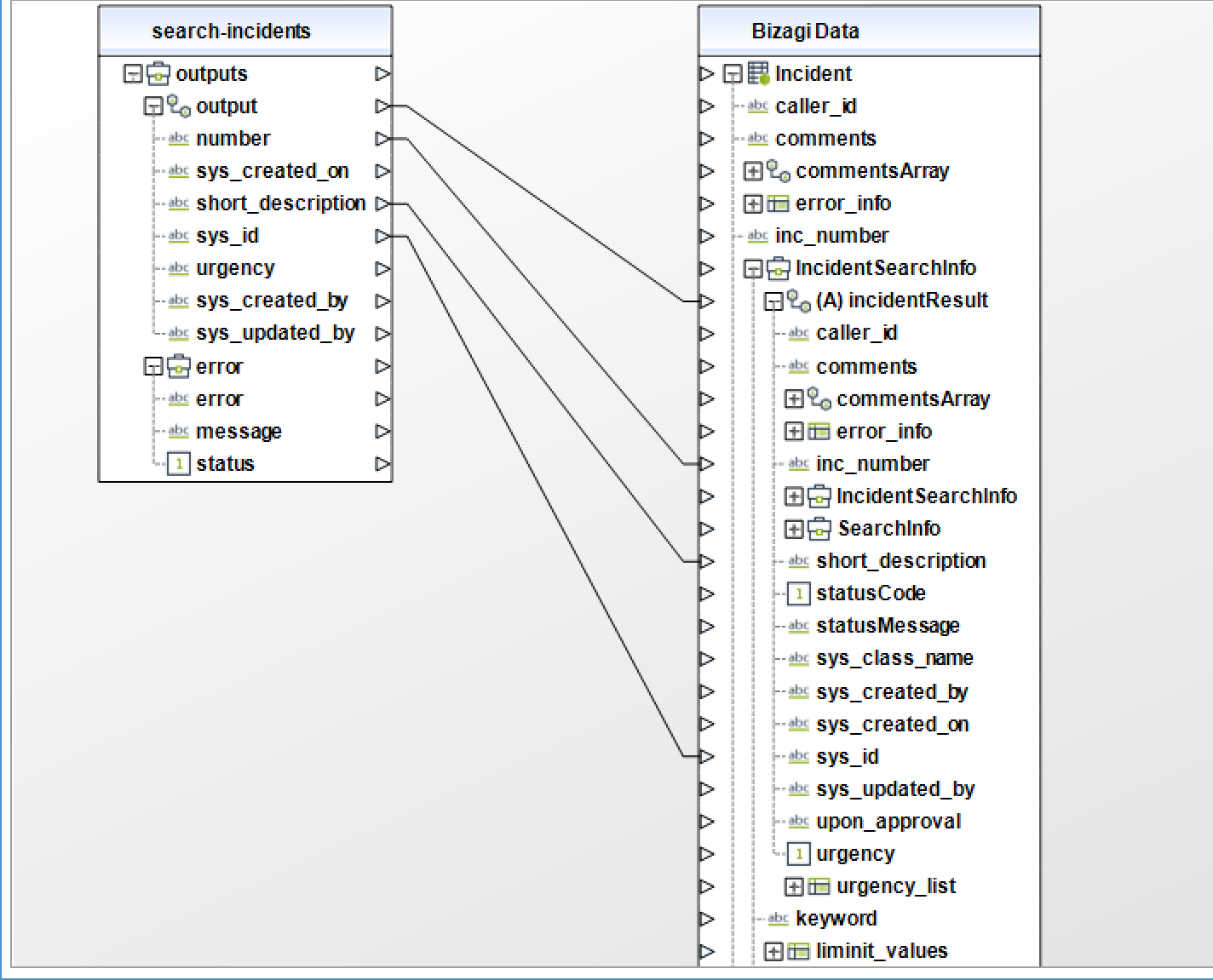
Get incident by ID
Obtain a specific incident by its ID.
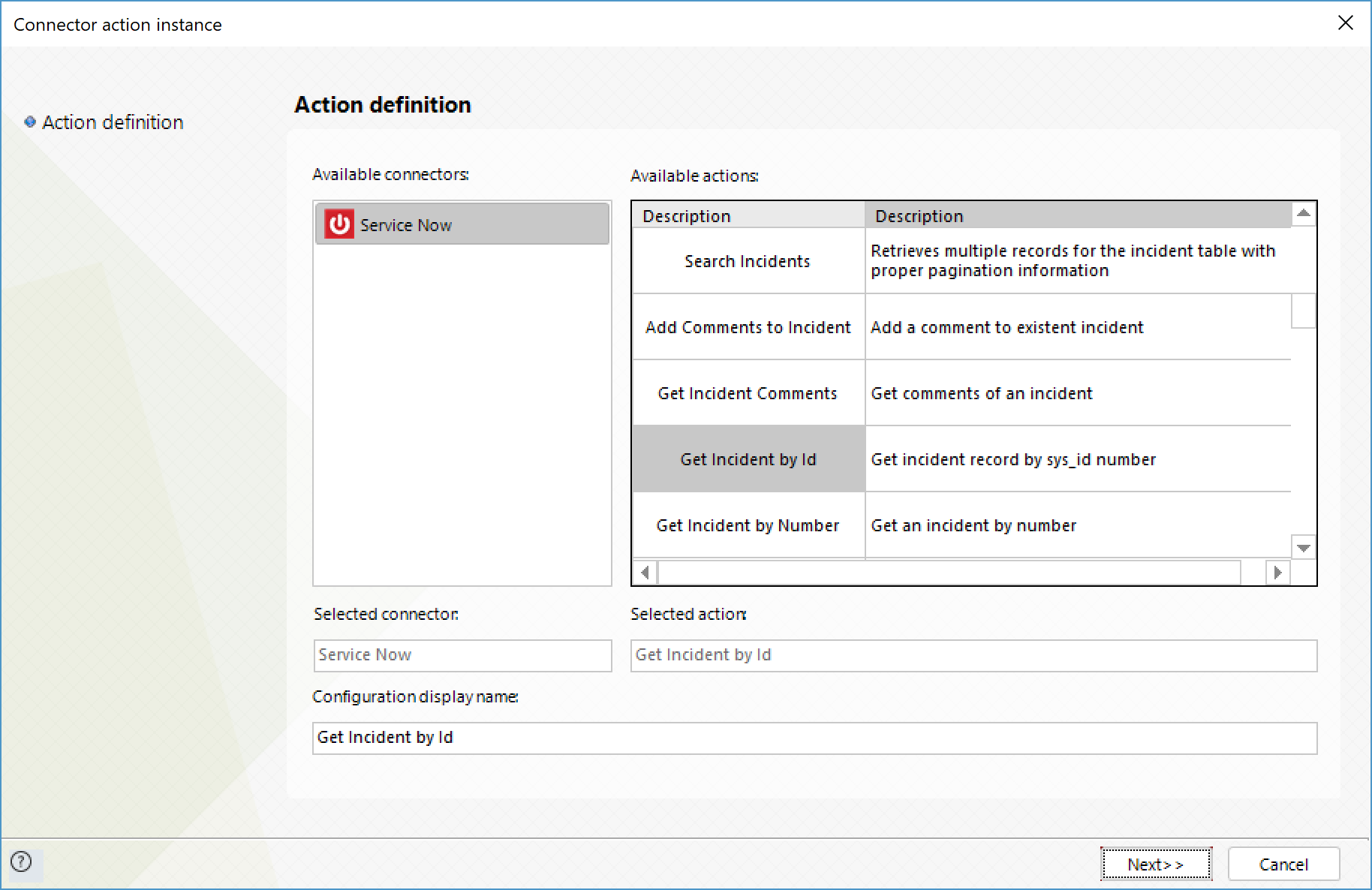
To configure its inputs, consider:
•sys_id: System ID of the incident to retrieve. This parameter is required for a successful service invocation.
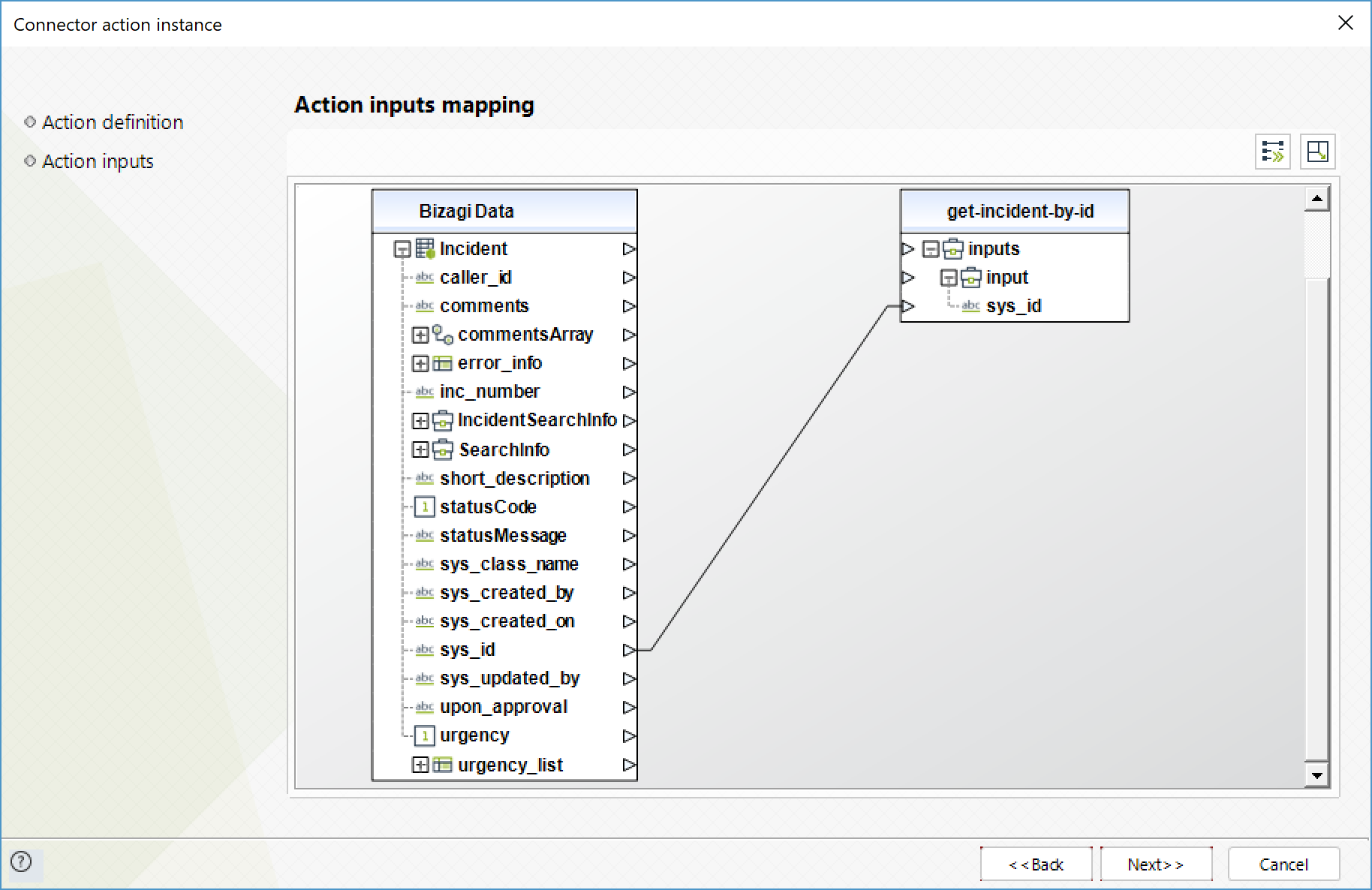
To configure its outputs, consider mapping:
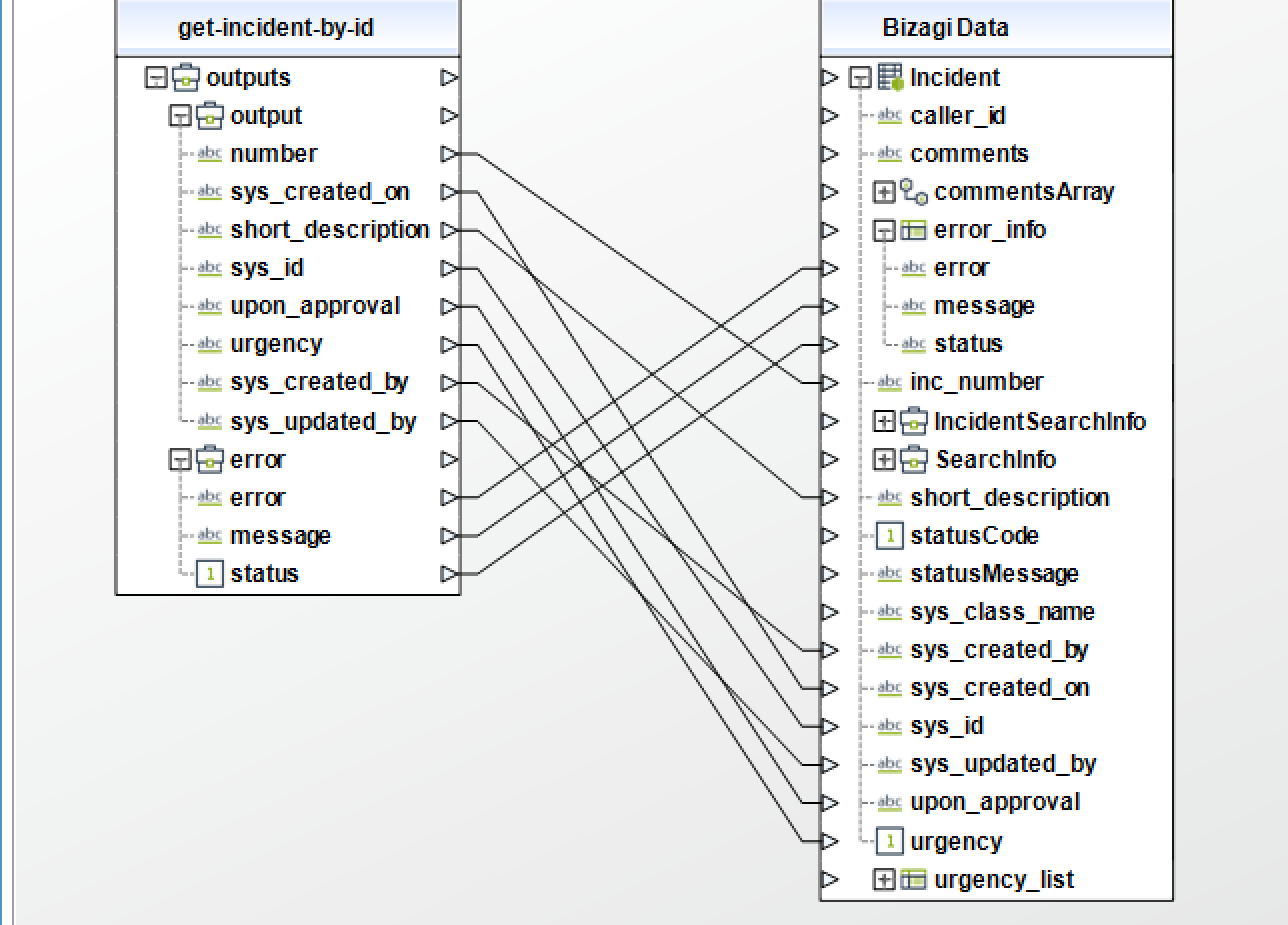
Get incident by Number
Obtain a specific incident by its Number.

To configure its inputs, consider:
•Incident_number: Number of the incident to retrieve. This parameter is required for a successful service invocation.
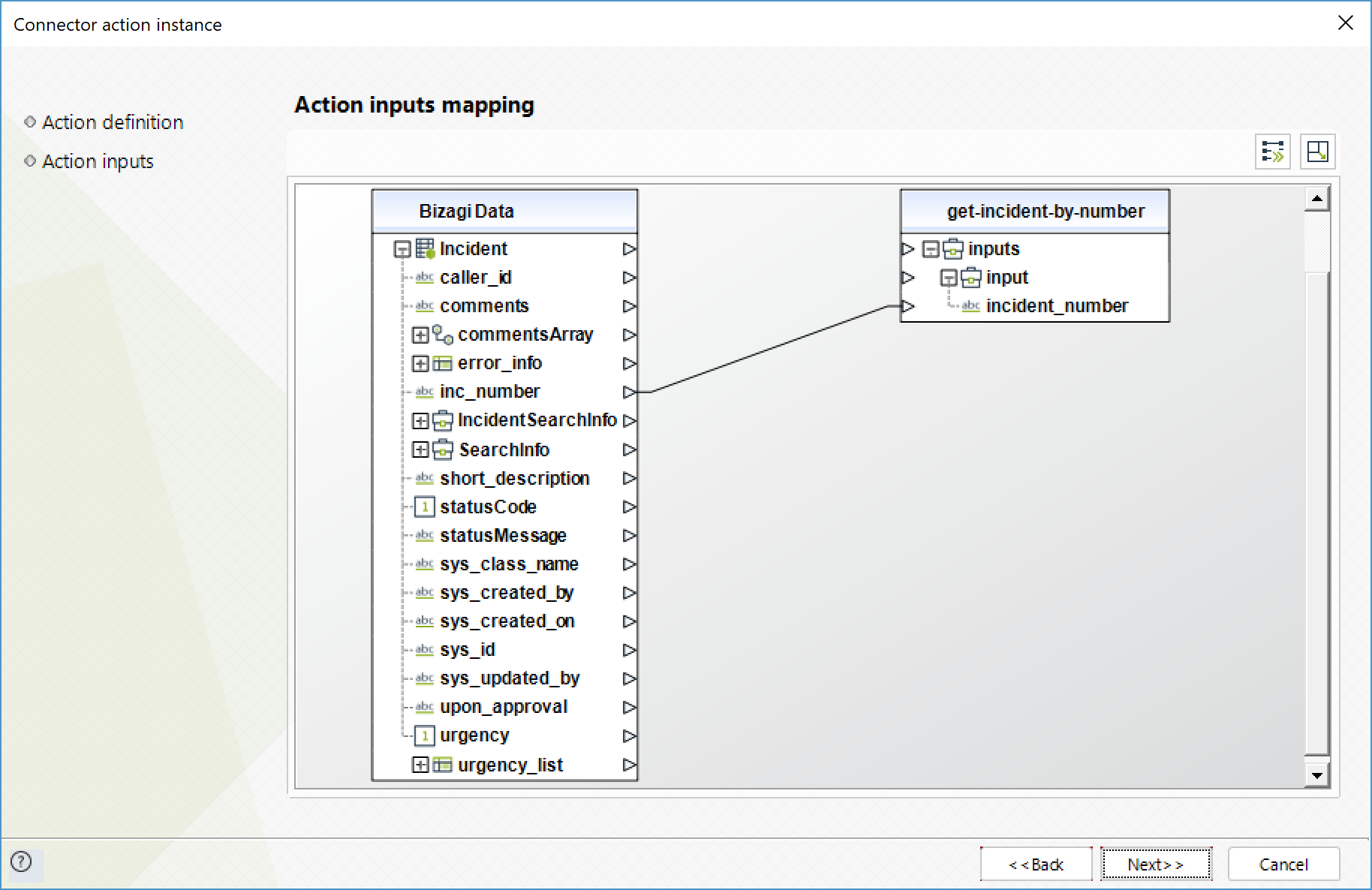
To configure its outputs, consider mapping:
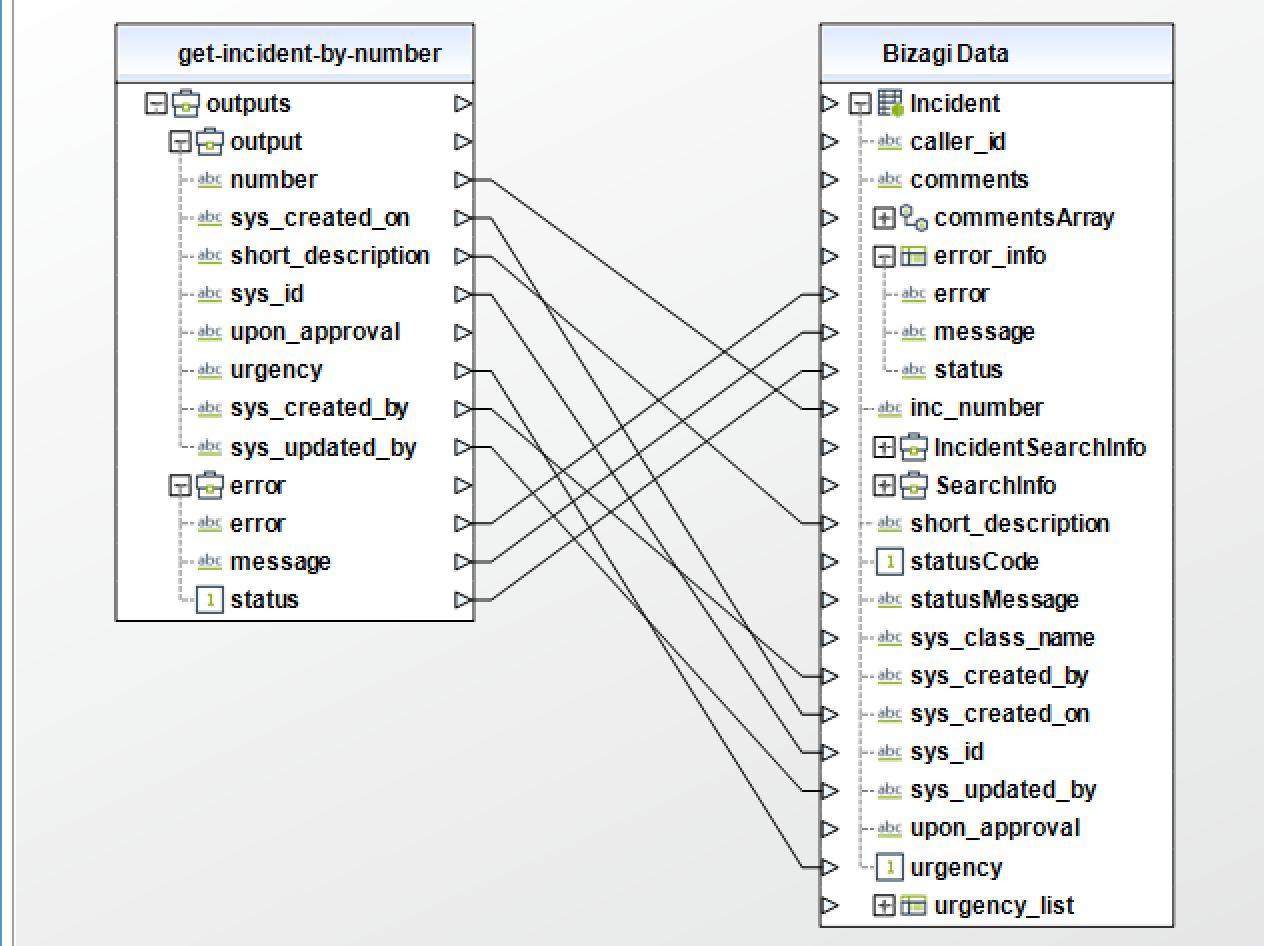
Add comments to incident
Add comments about a specific incident's development.
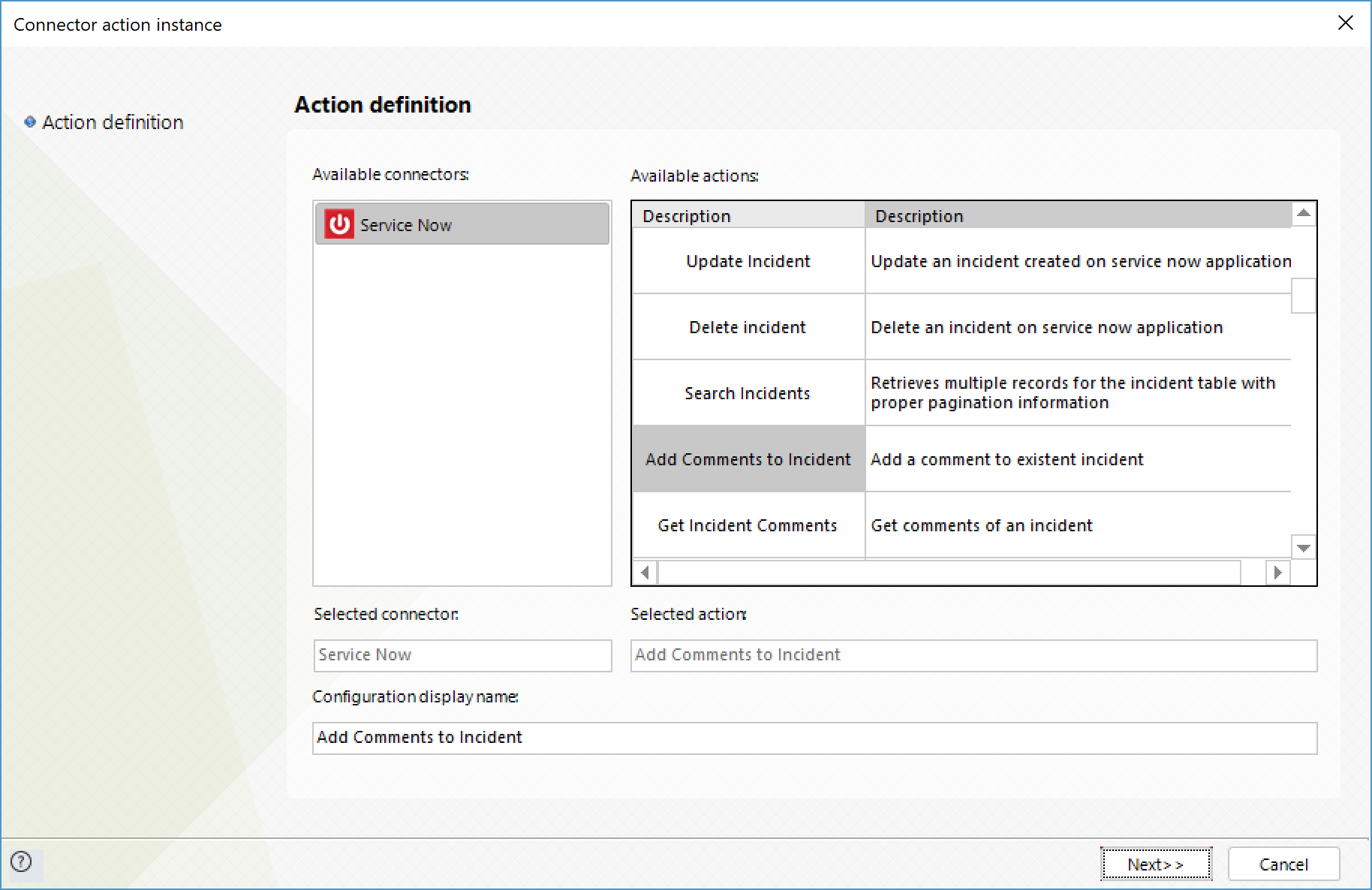
To configure its inputs, consider:
•Sys_ID: System ID of the incident you wish to add comments to. This parameter is required for a successful service invocation.
•Incident_number: Number of the incident to retrieve. This parameter is required for a successful service invocation.
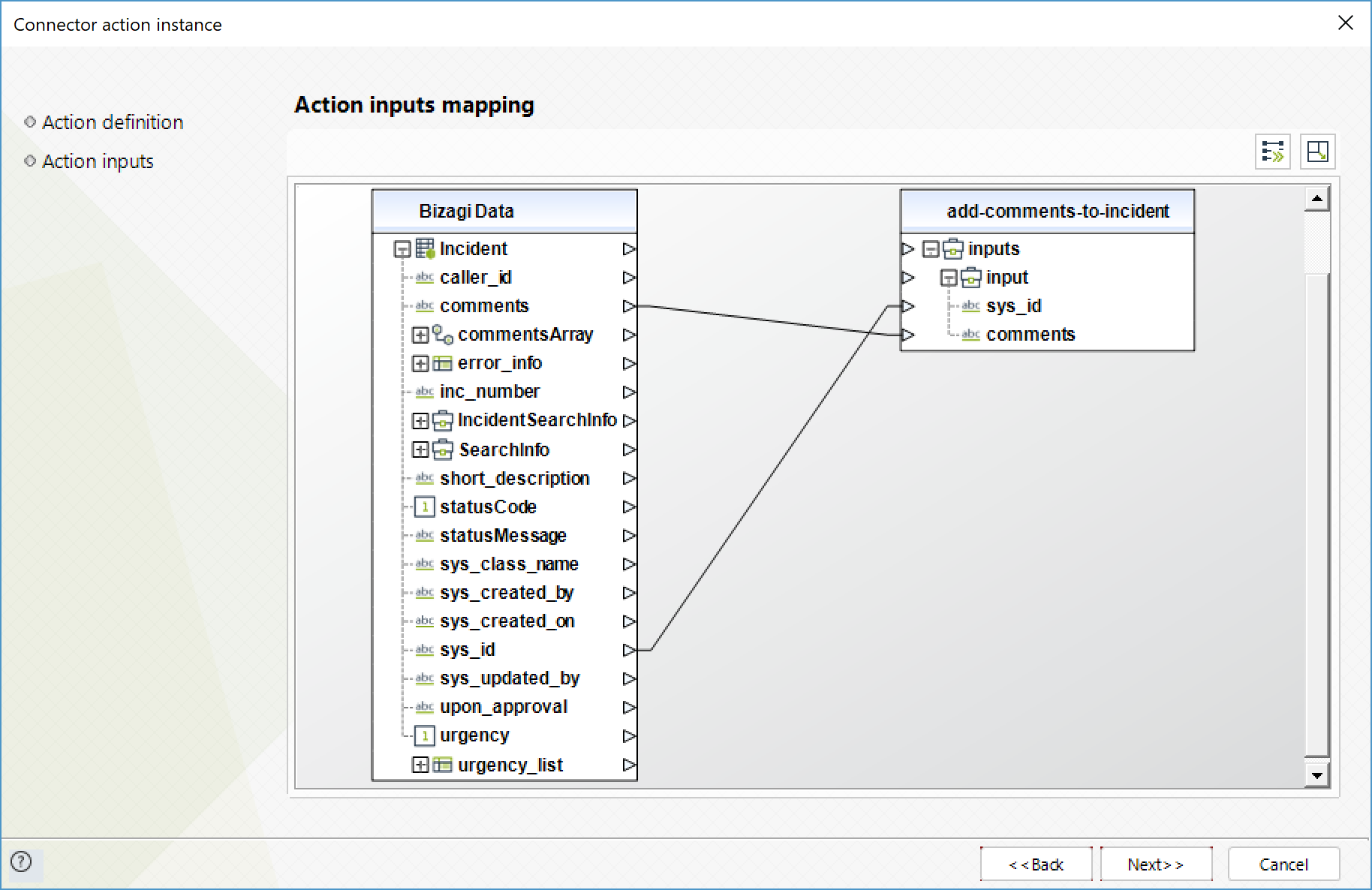
To configure its outputs, consider mapping:

Get incident comments
Obtain the comments of a specific incident.
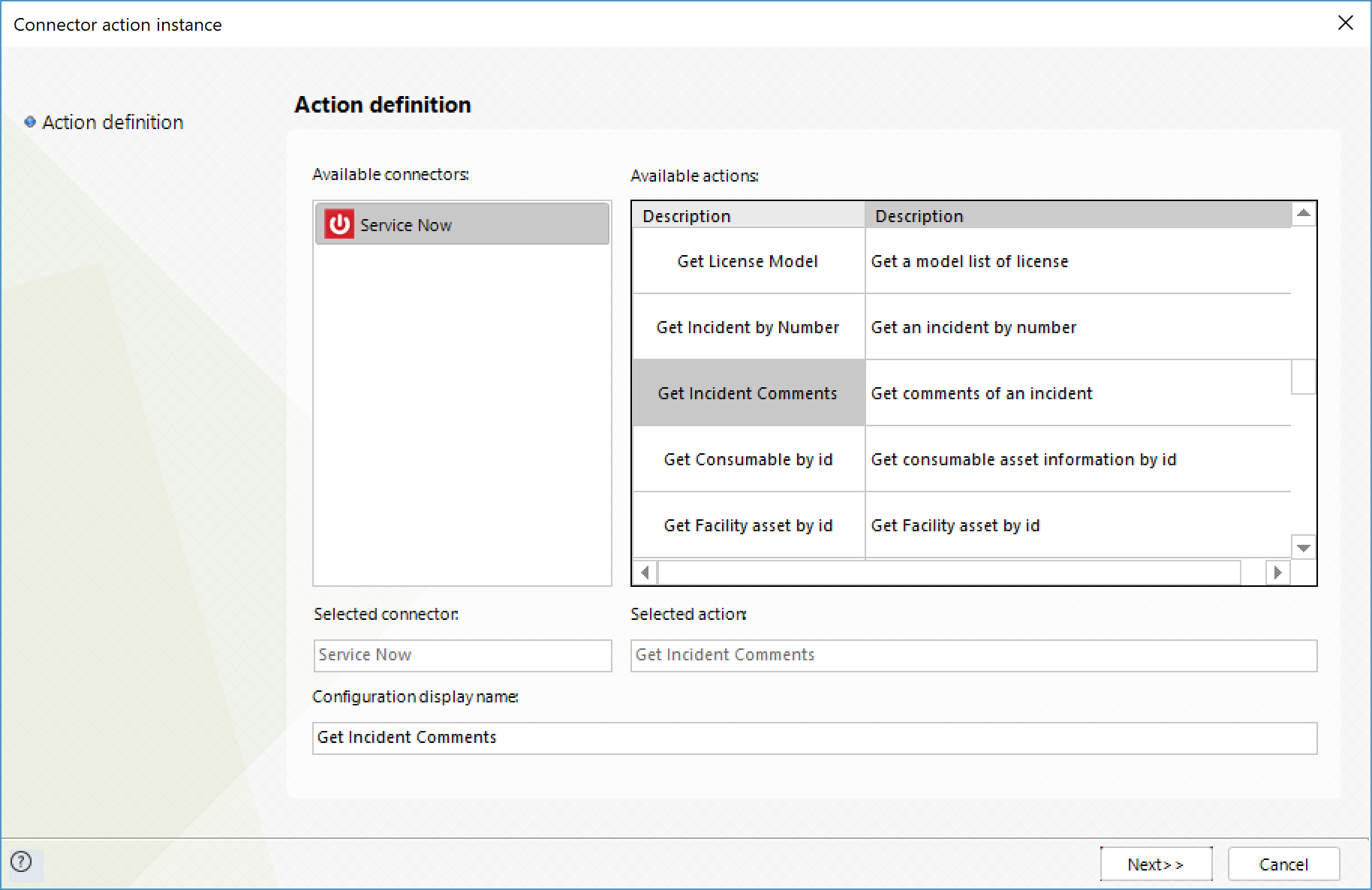
To configure its inputs, consider:
•Sys_id: System ID of the incident whose comments you wish to obtain. This parameter is required for a successful service invocation.
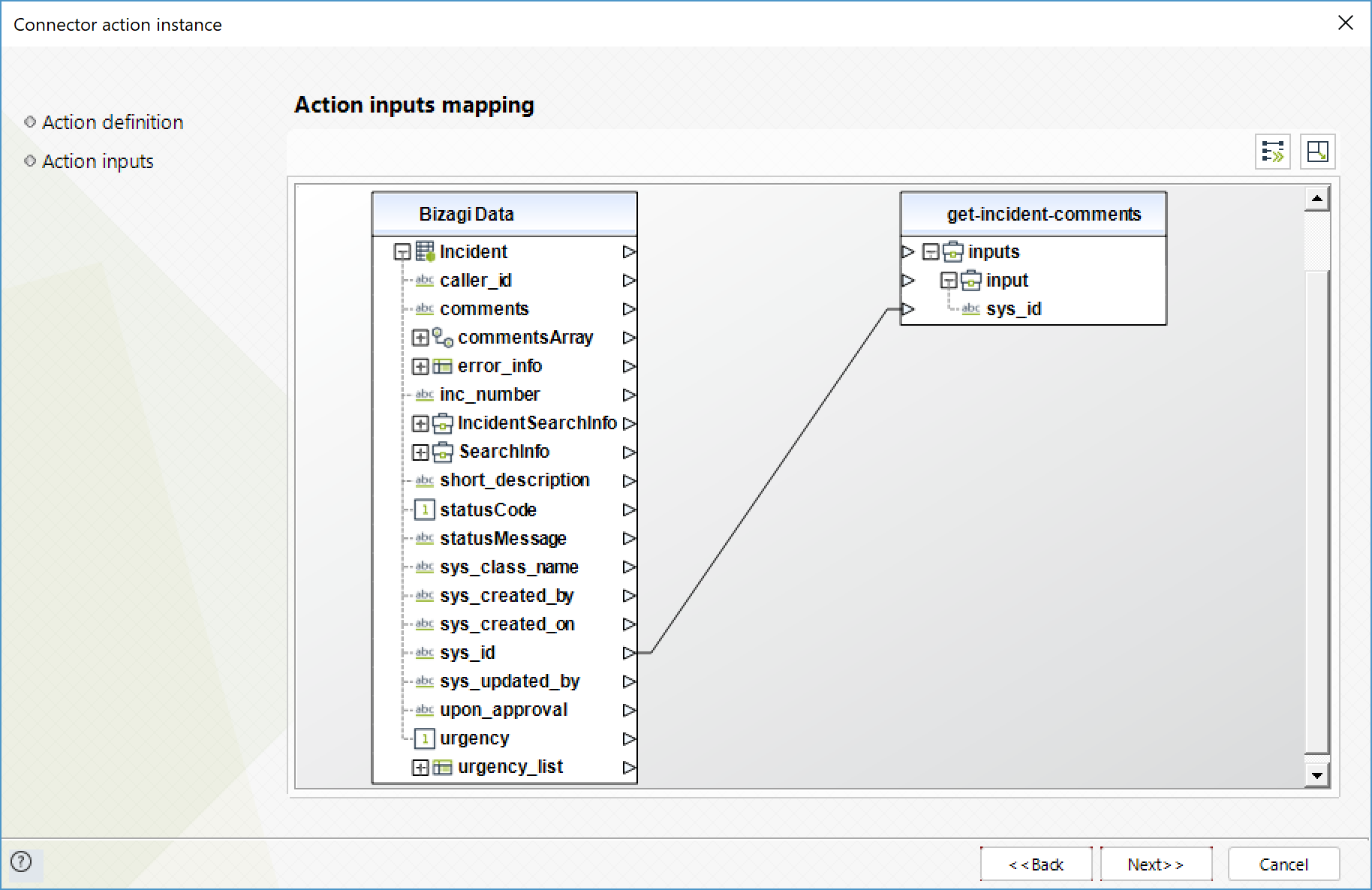
To configure its outputs, consider mapping:
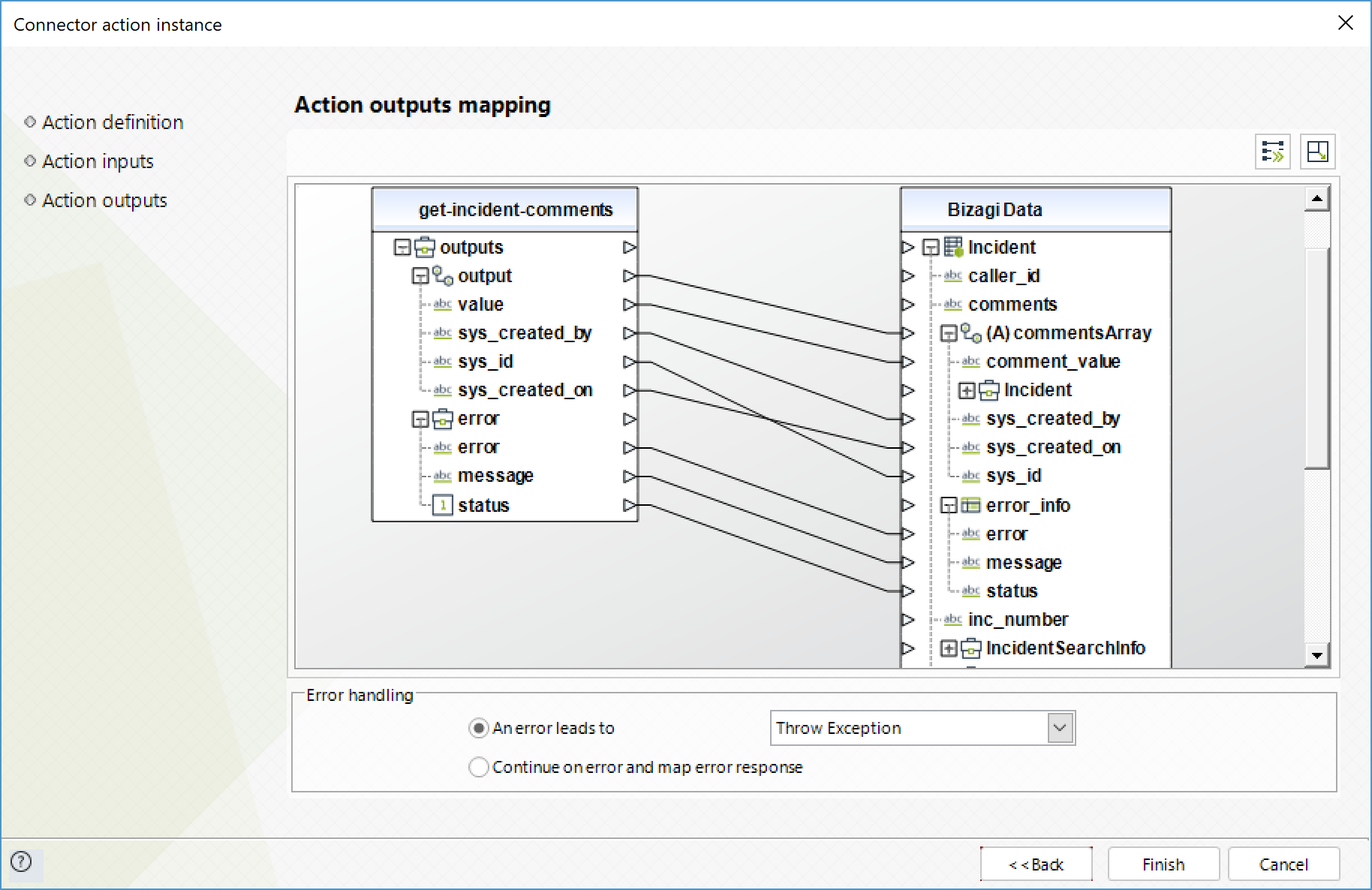
Create hardware asset
Register a new hardware asset.
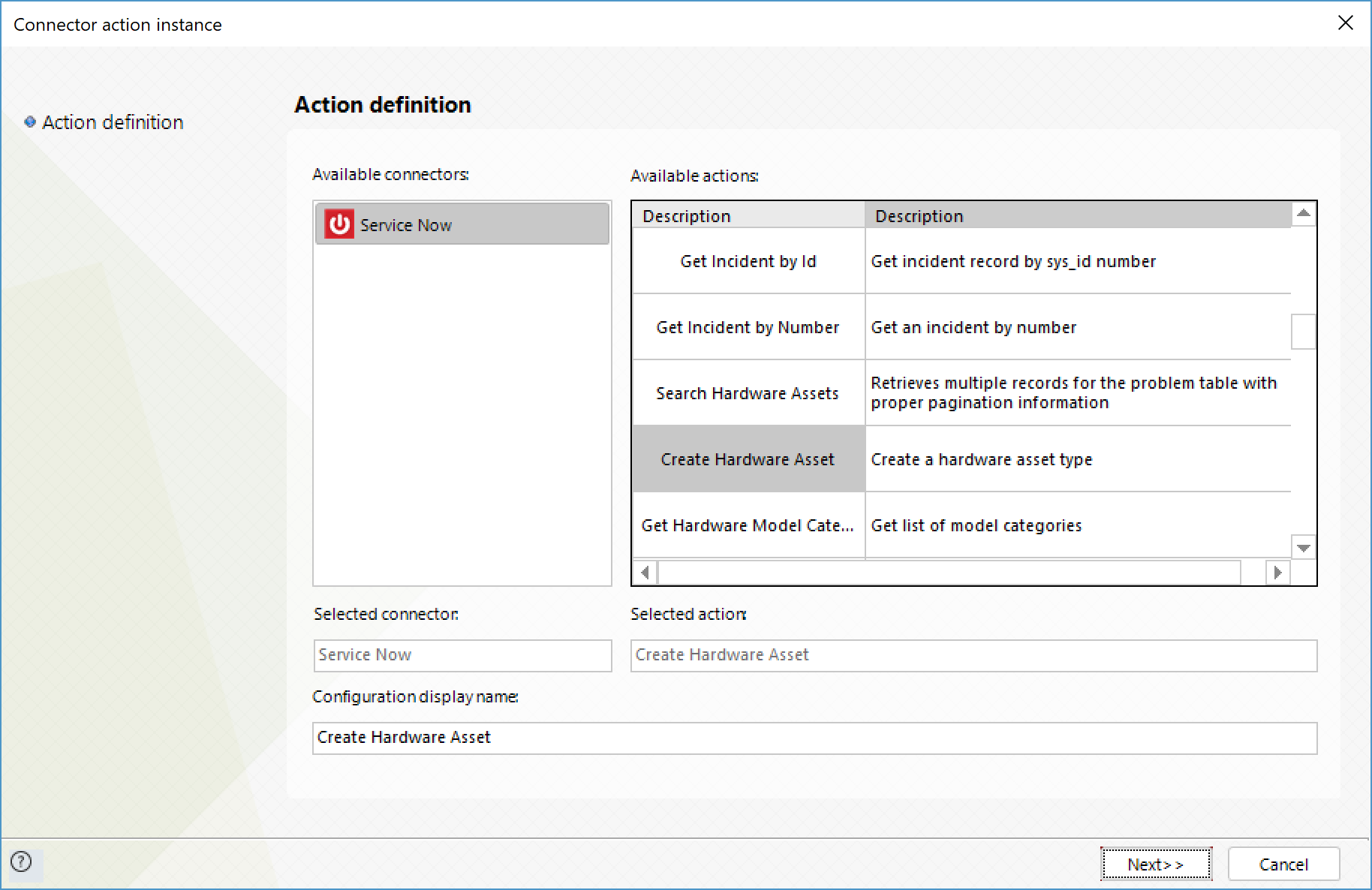
To configure its inputs, consider:
•Model: Model of the new hardware asset. This parameter is required for a successful service invocation.
•Model_category: Category of the model of the new hardware asset. This parameter is required for a successful service invocation.
•Asset_tag: Unique identifier of the hardware asset, like QR code or Bar code. This parameter is required for a successful service invocation.
•Comments: Additional comments about the hardware asset.
•Serial_number: Serial number of the hardware asset.
•Cost: Cost of the new hardware asset.
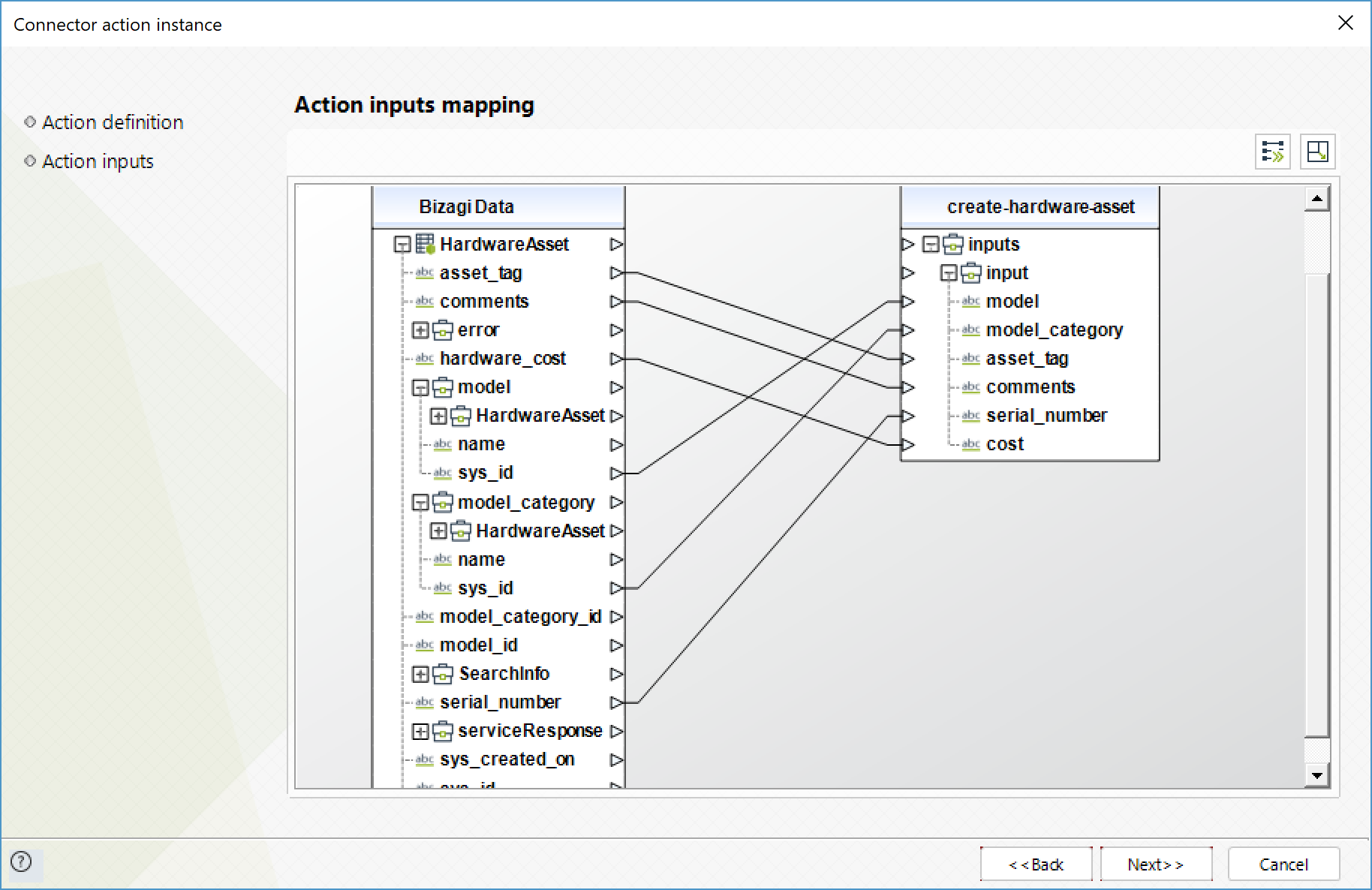
To configure its outputs, consider mapping:
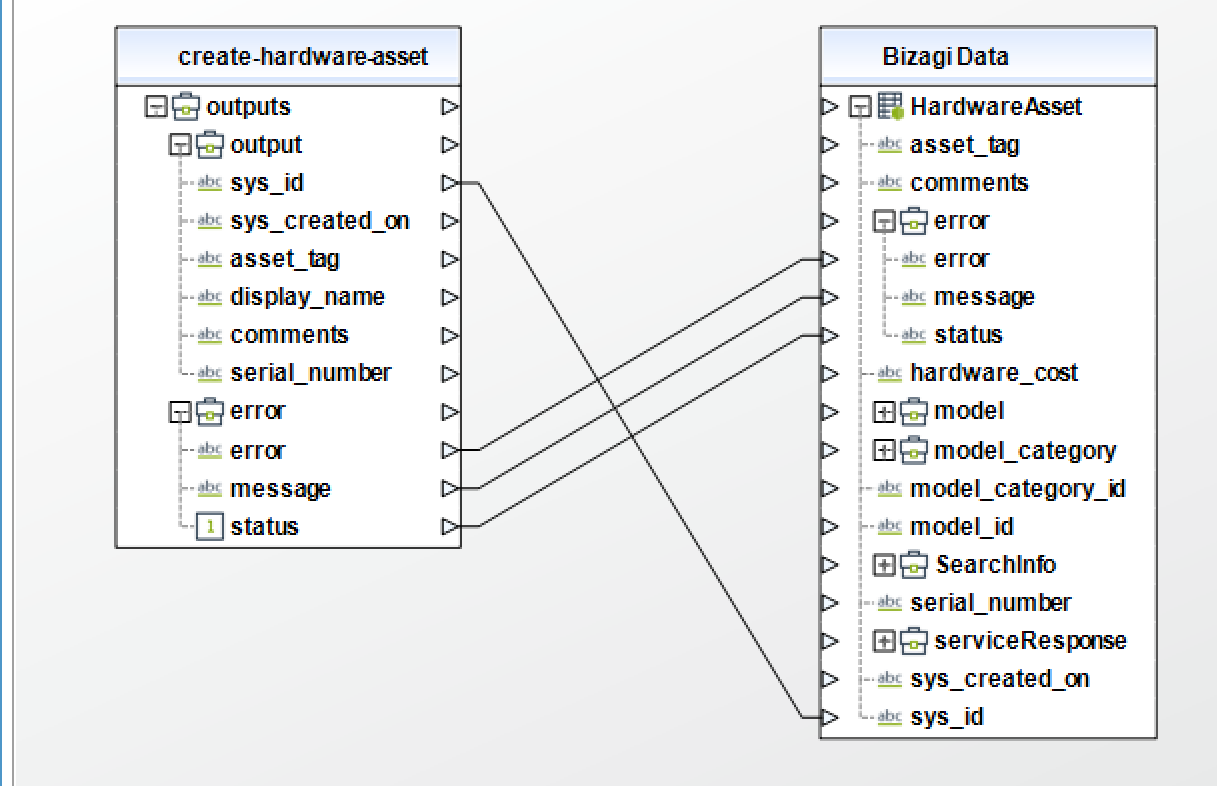
Search hardware asset
Obtain a list of hardware assets matching the search parameters.
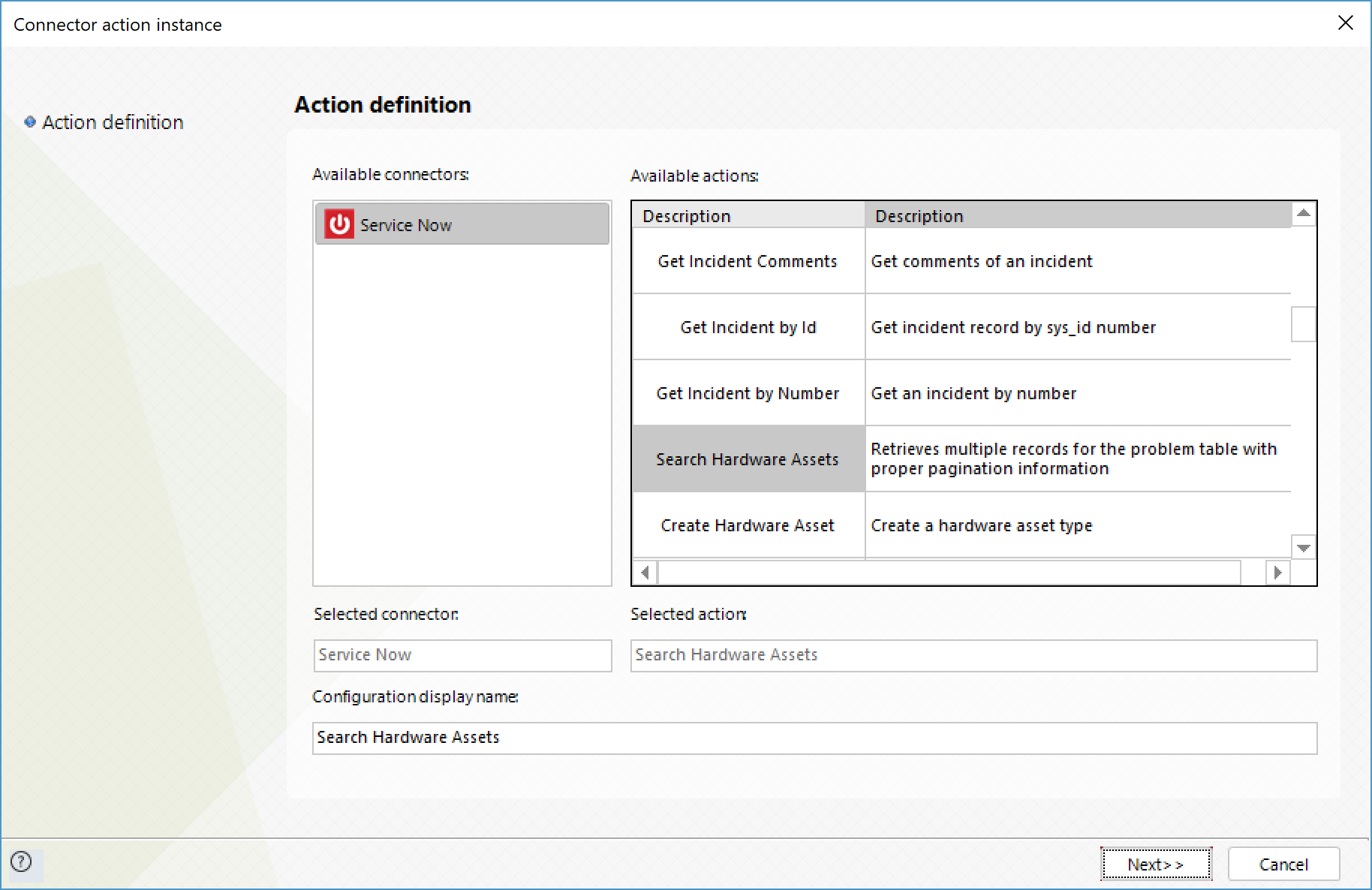
To configure its inputs, consider:
•Keyword: String to search for in the hardware assets.
•sysparam_limit: Maximum amount of results to retrieve. This parameter is required for a successful service invocation.
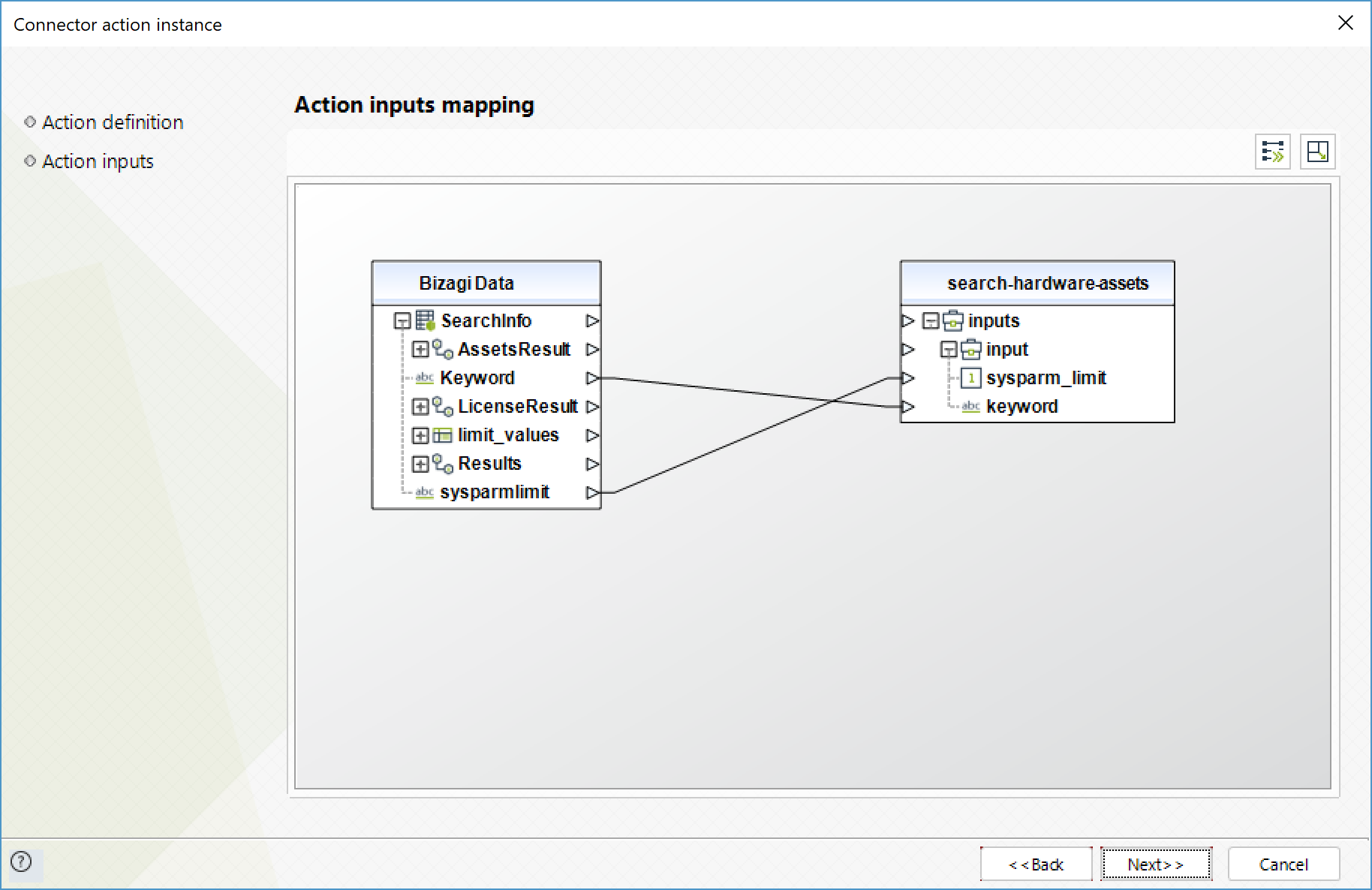
To configure its outputs, consider mapping:
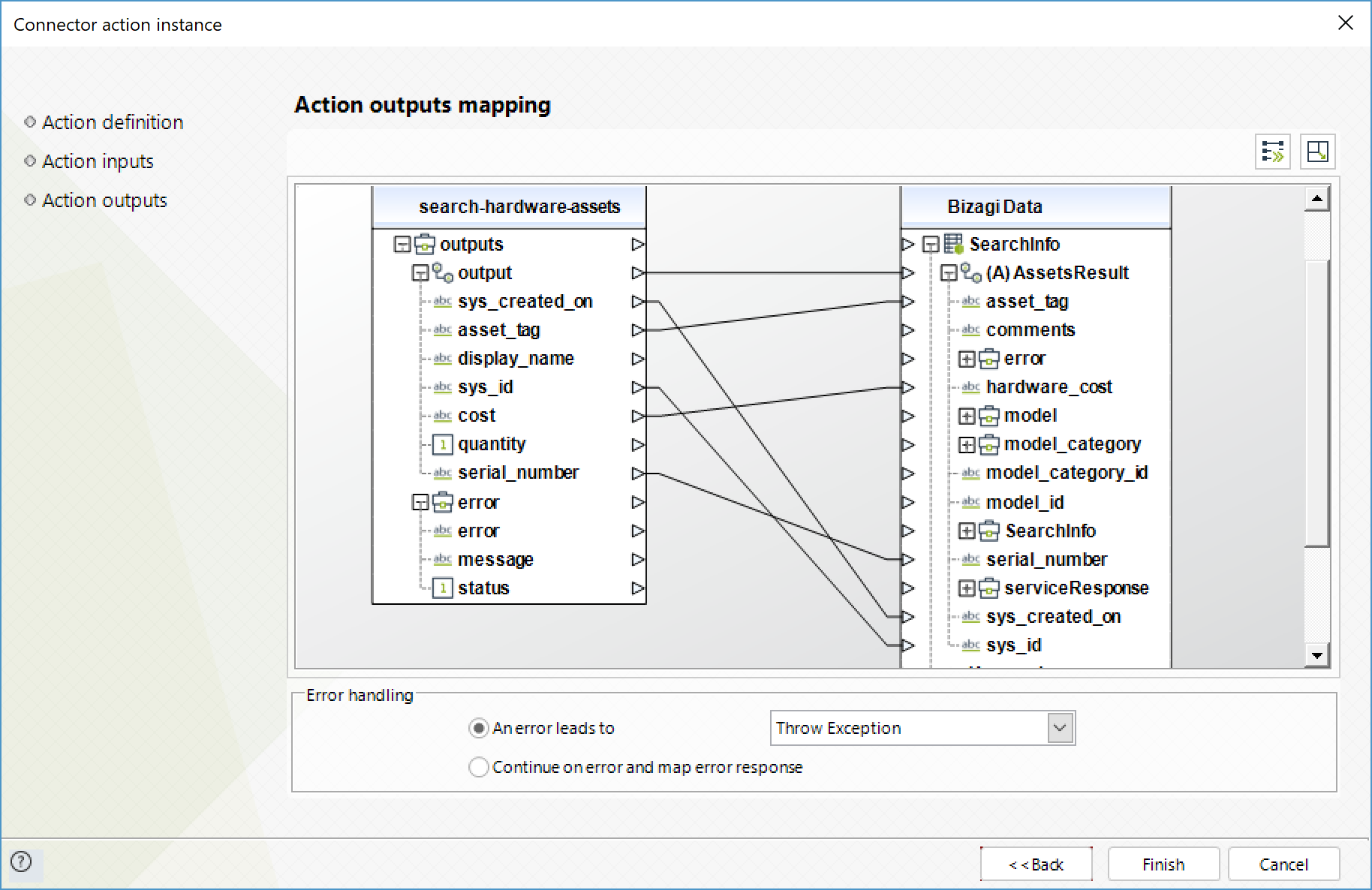
Get hardware asset by ID
Obtain a specific hardware asset by its ID.

To configure its inputs, consider:
•Sys_id: System ID of the Hardware asset you wish to obtain. This parameter is required for a successful service invocation.
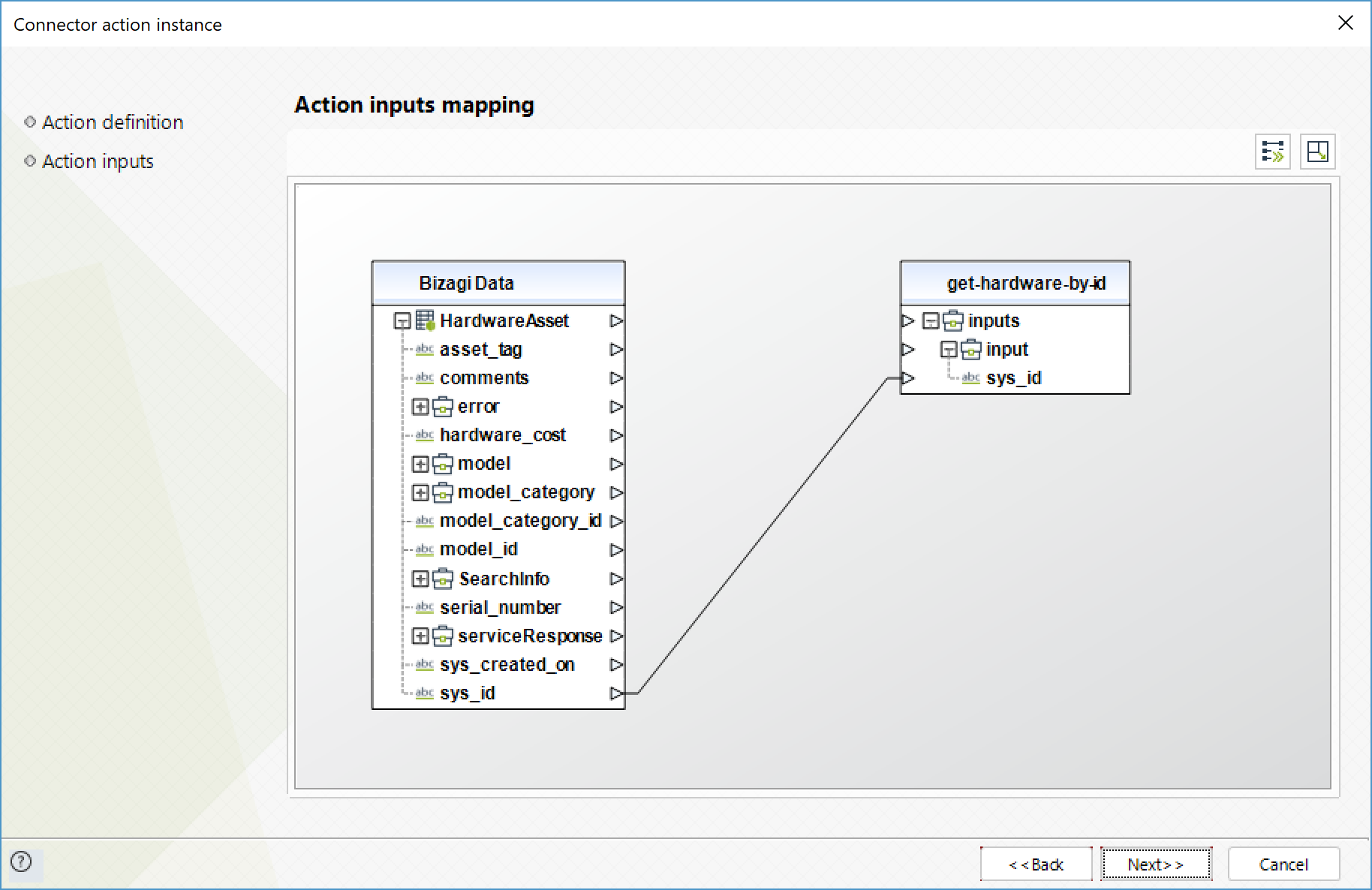
To configure its outputs, consider mapping:
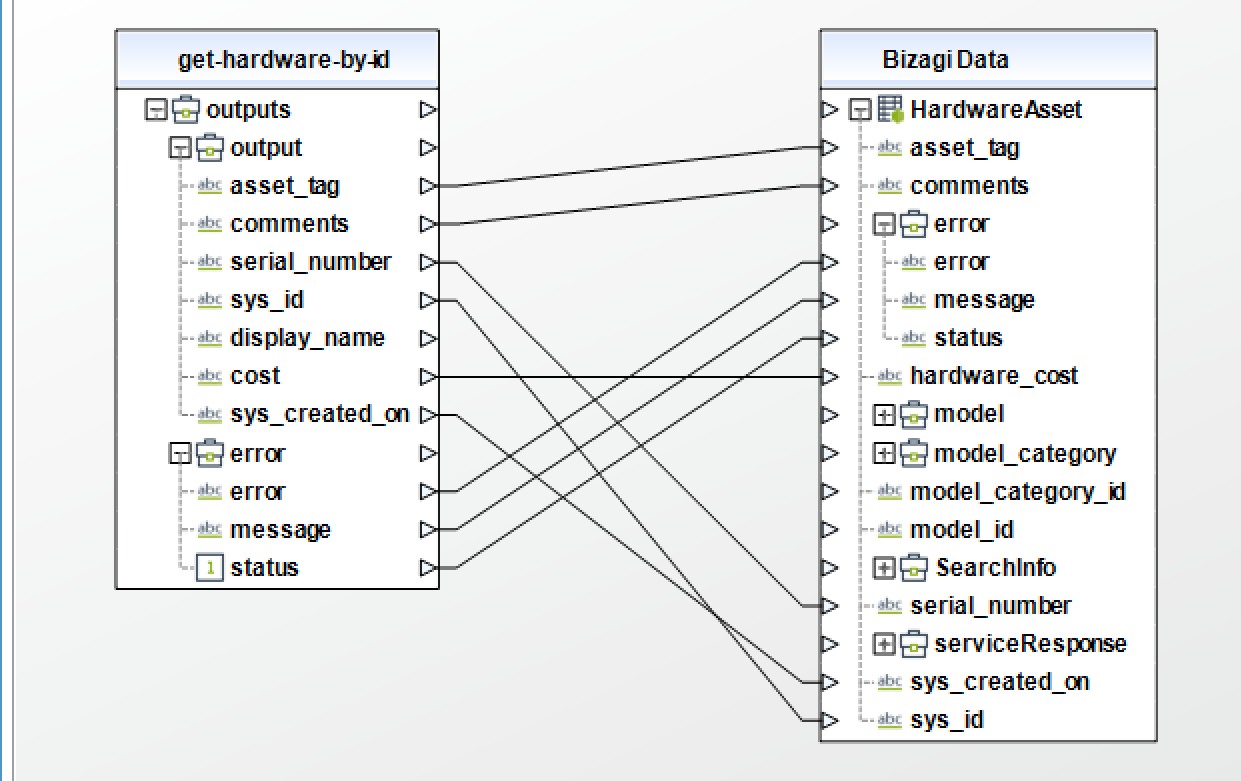
Delete hardware asset by ID
Delete a specific hardware asset by its ID.
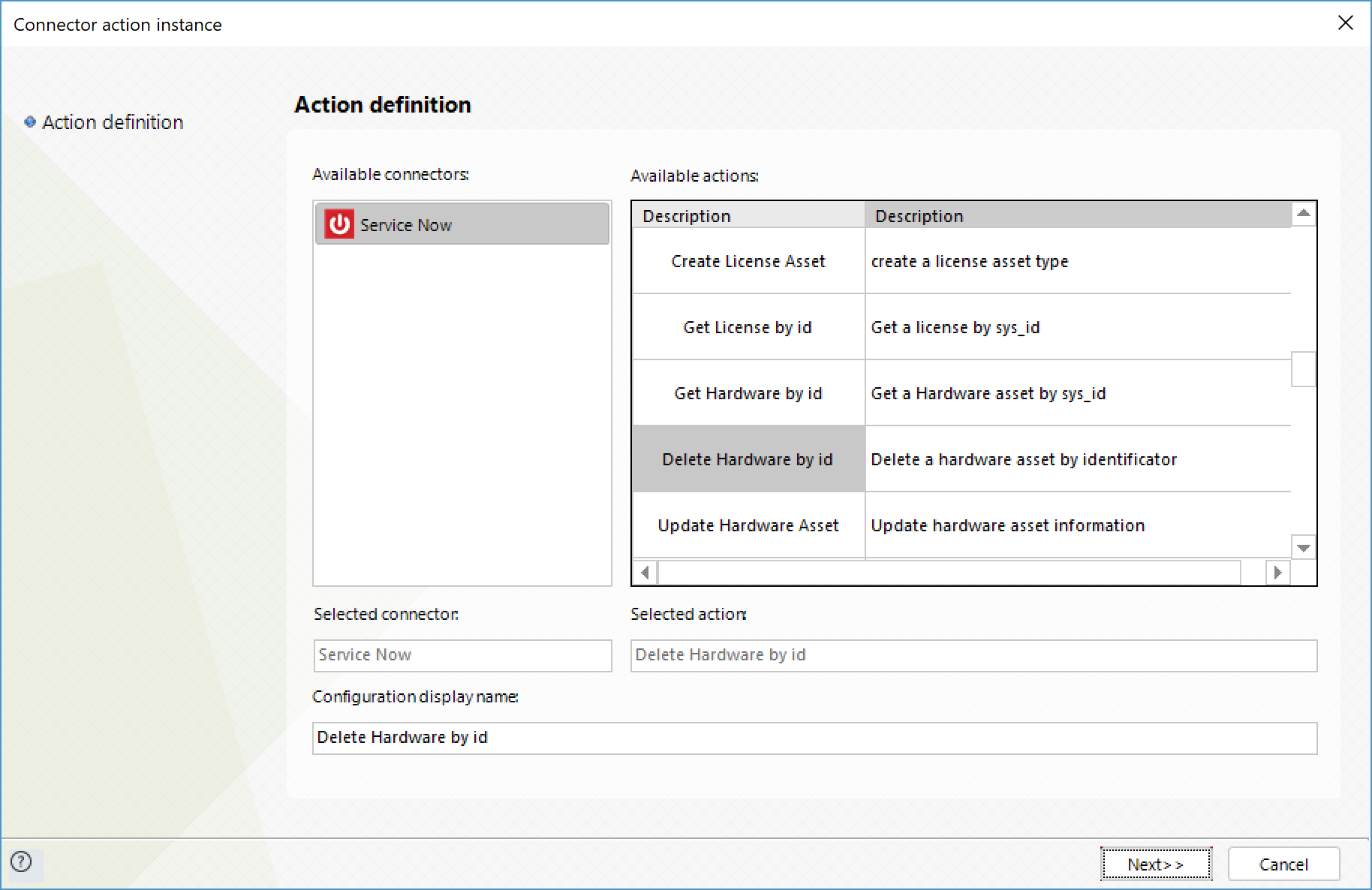
To configure its inputs, consider:
•Sys_id: System ID of the Hardware asset you wish to delete. This parameter is required for a successful service invocation.
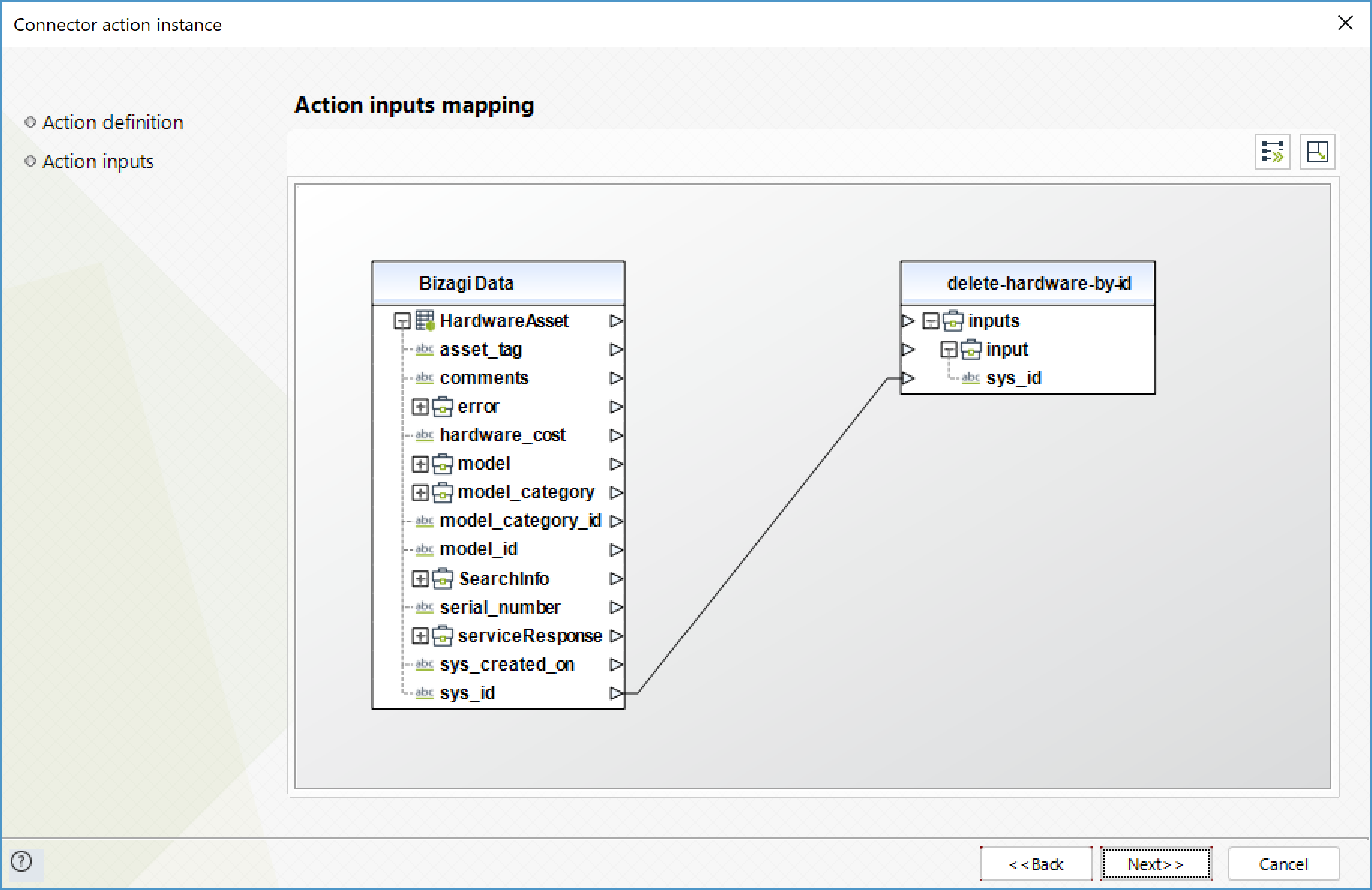
To configure its outputs, consider mapping:
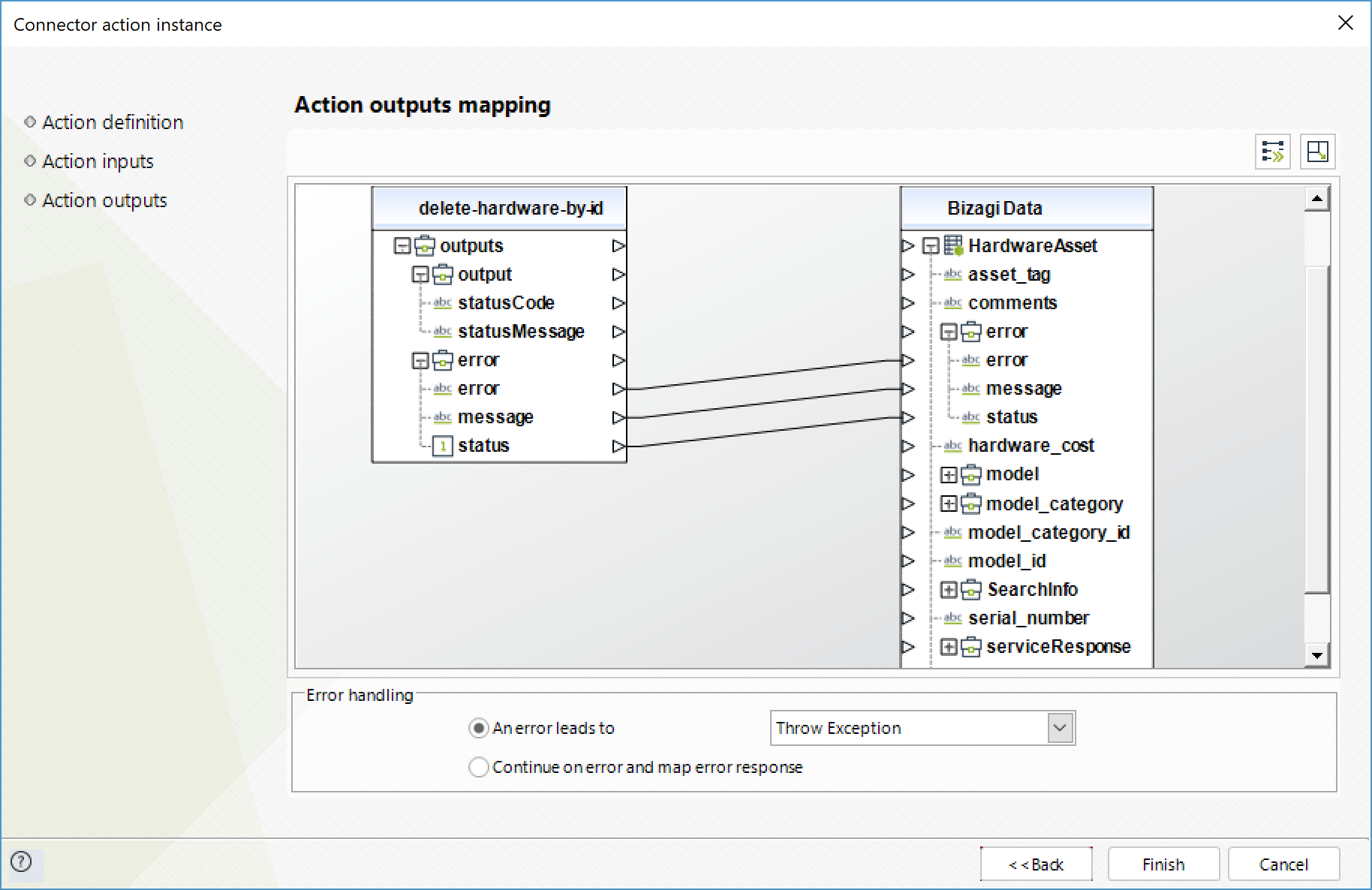
Update hardware asset by ID
Modify or add information to a specific hardware asset by its ID.
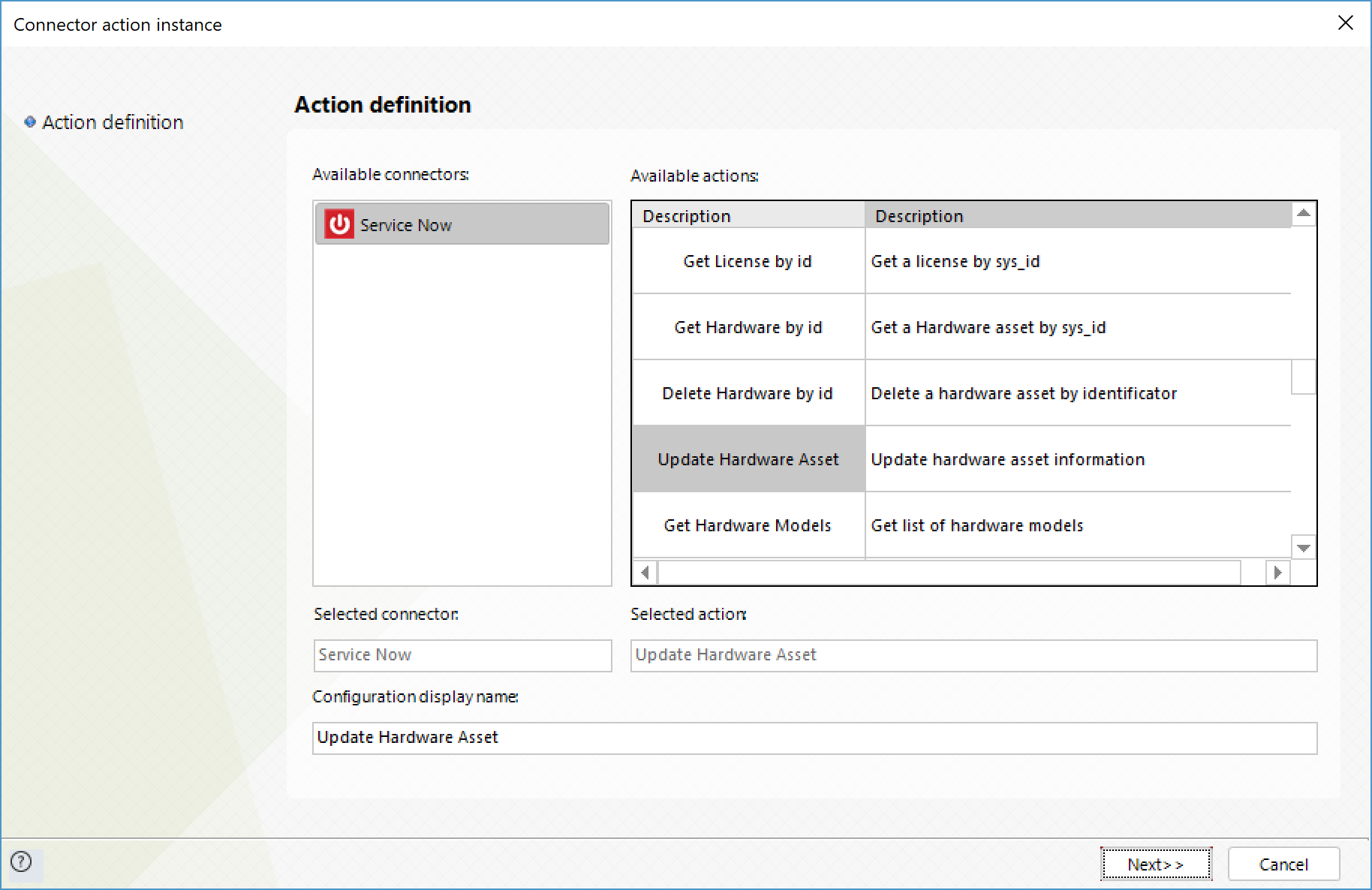
To configure its inputs, consider:
•Sys_id: System ID of the Hardware asset you wish to update. This parameter is required for a successful service invocation.
•Asset_tag: Unique identifier of the hardware asset, like QR code or Bar code.
•Comments: Additional comments about the hardware asset.
•Serial_number: Serial number of the hardware asset.
•Cost: Cost of the hardware asset.
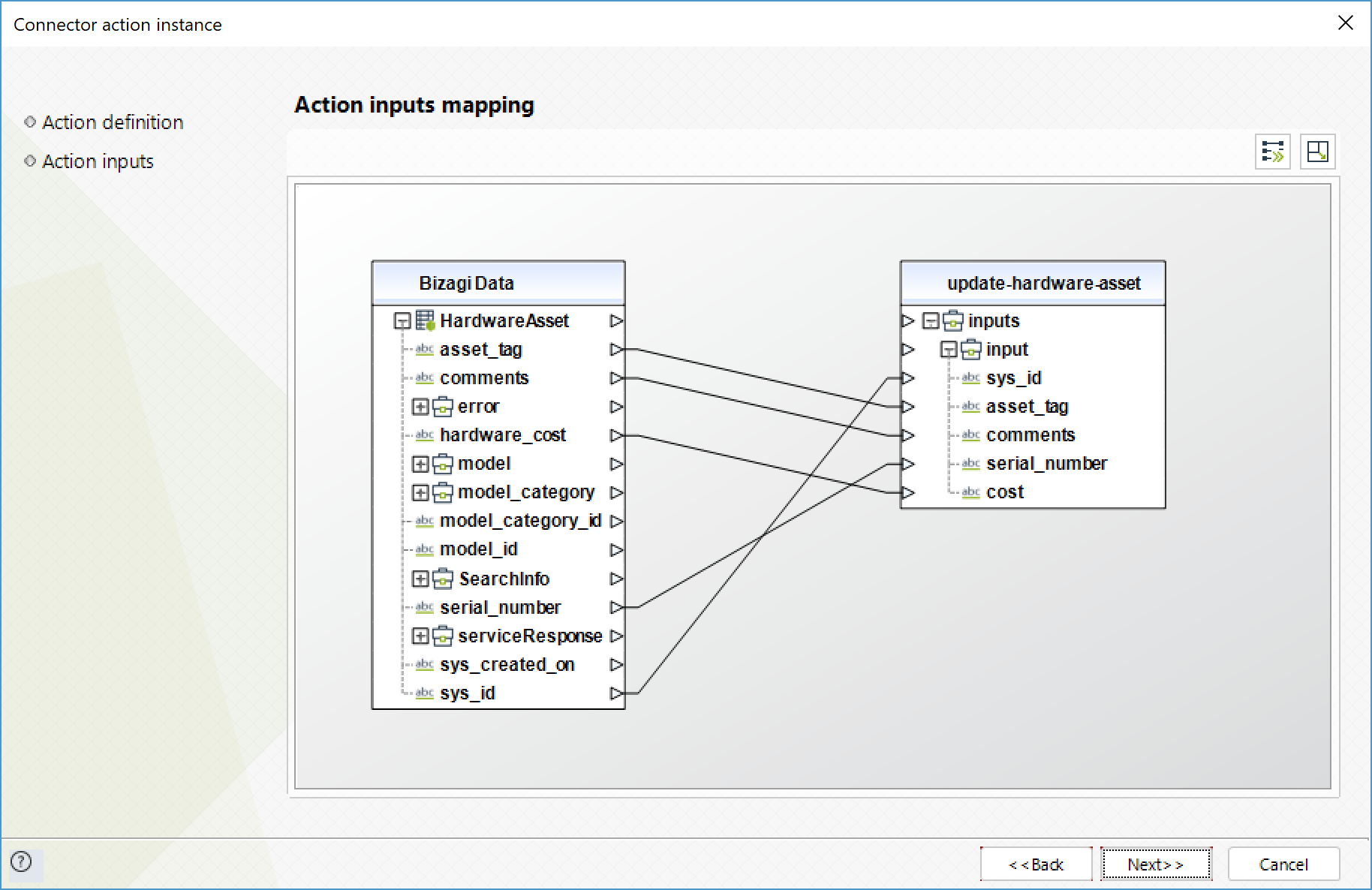
To configure its outputs, consider mapping:
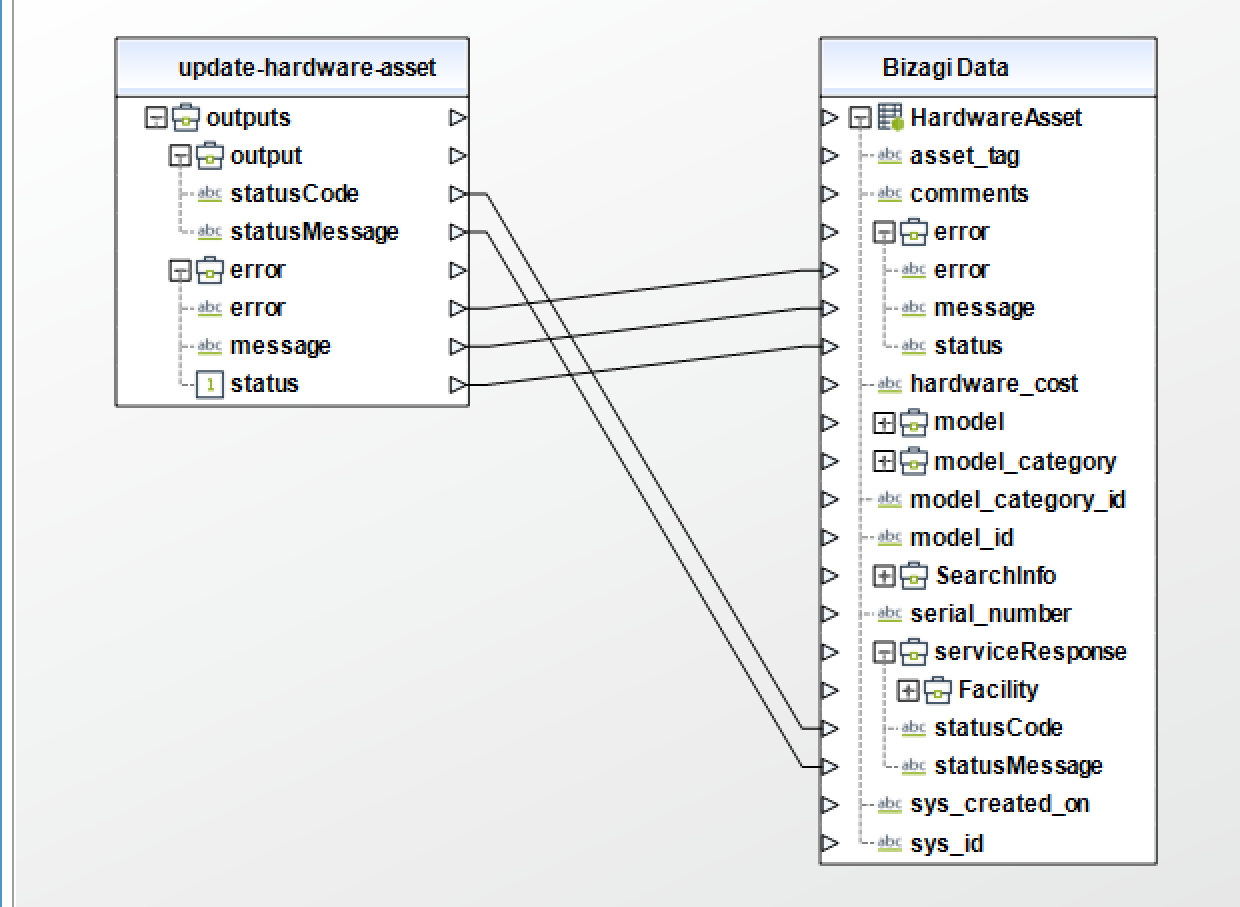
Get hardware asset model categories
Obtain a list of model categories.
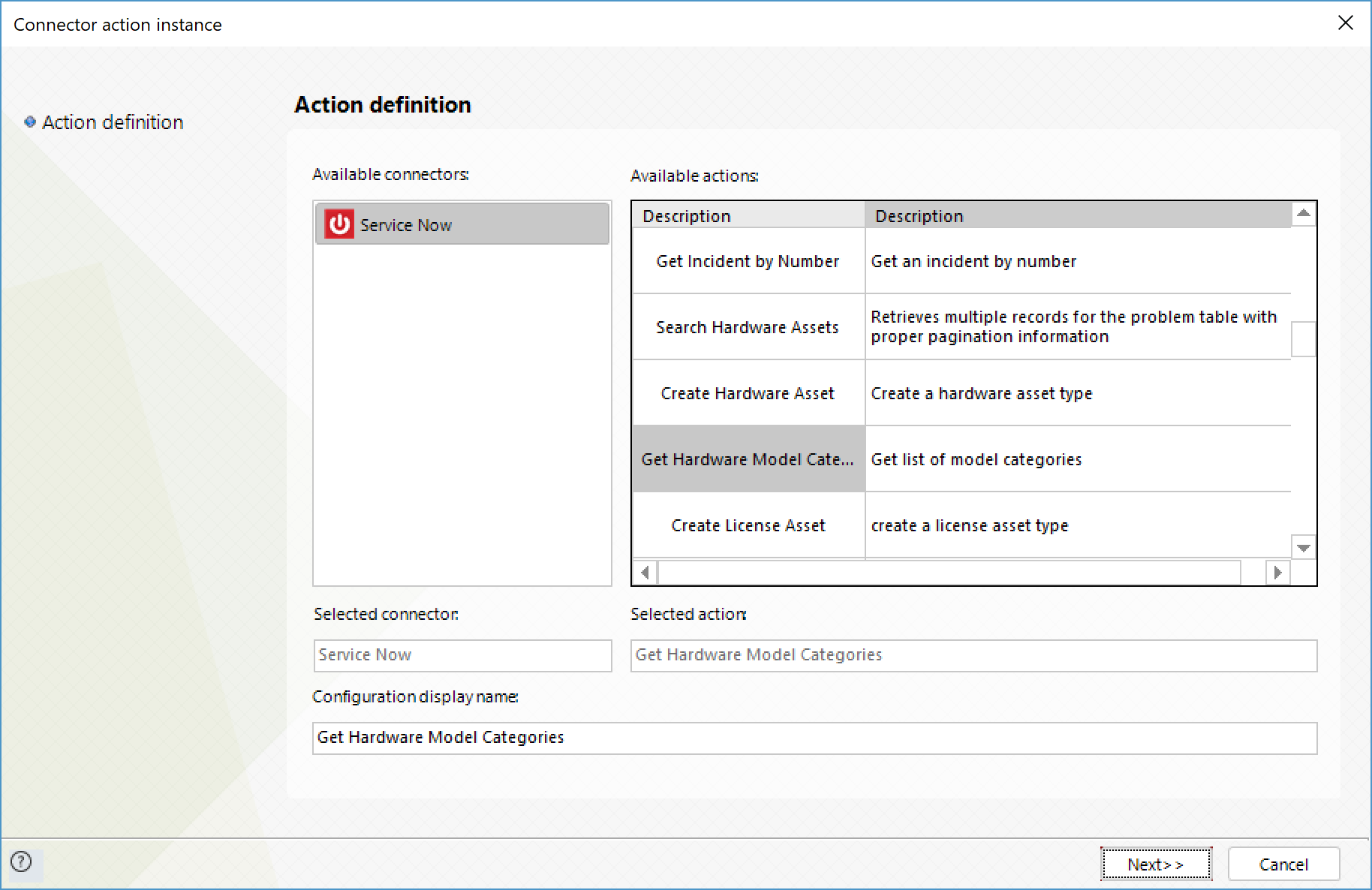
To configure its outputs, consider mapping:

Get hardware asset models
Obtain a list of hardware asset modes.
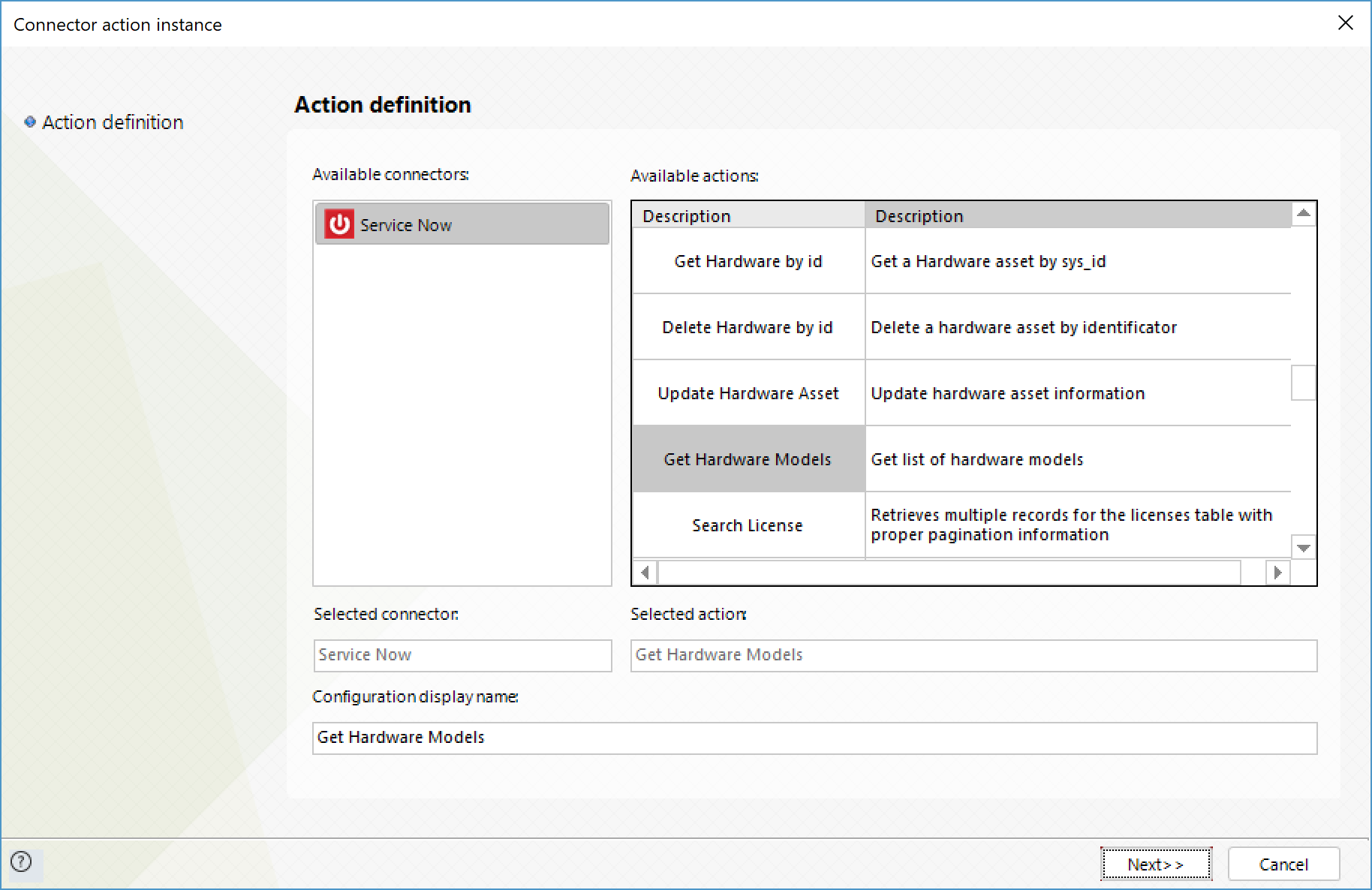
To configure its outputs, consider mapping:
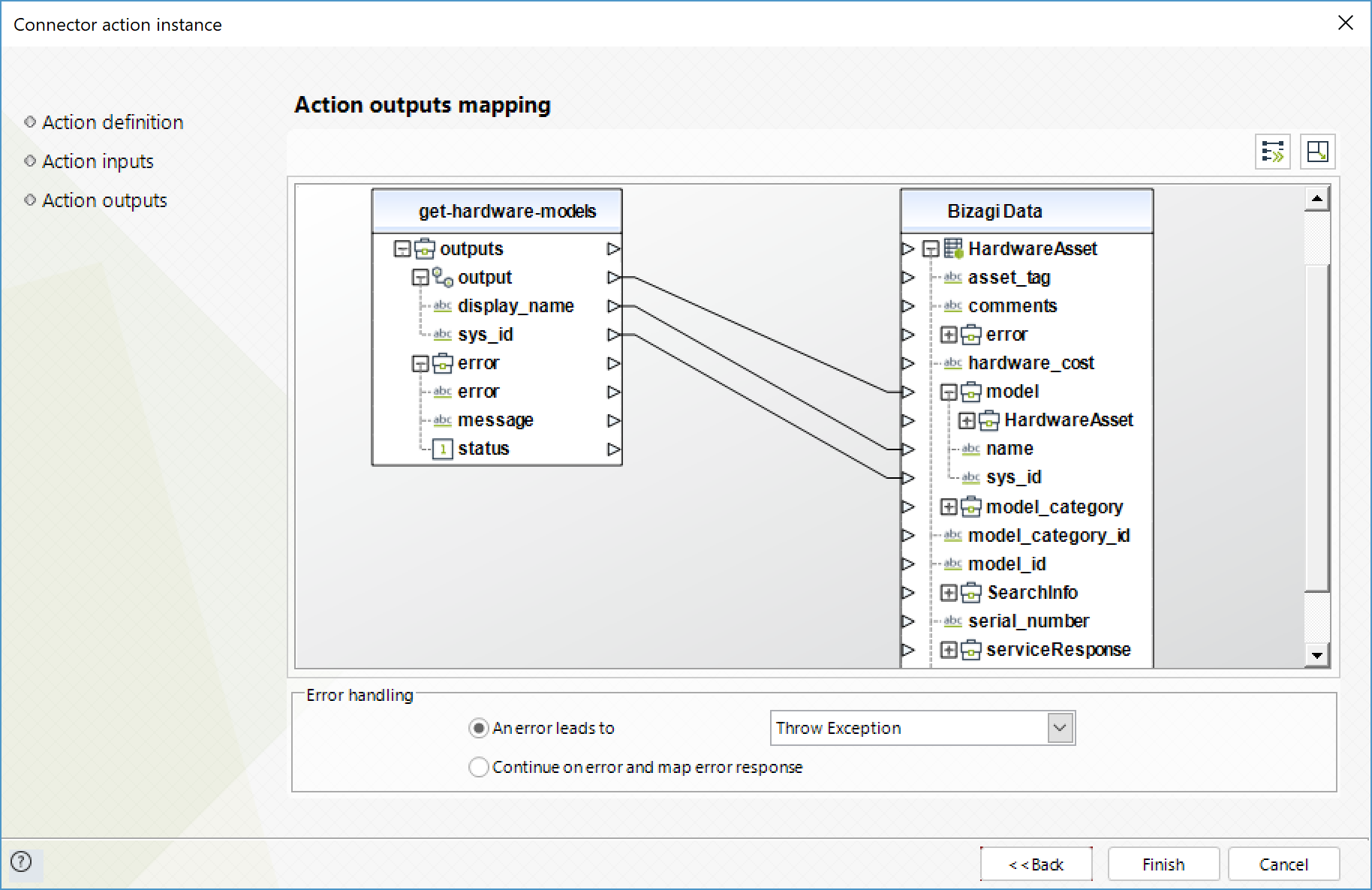
Create license asset
Register a new license asset.
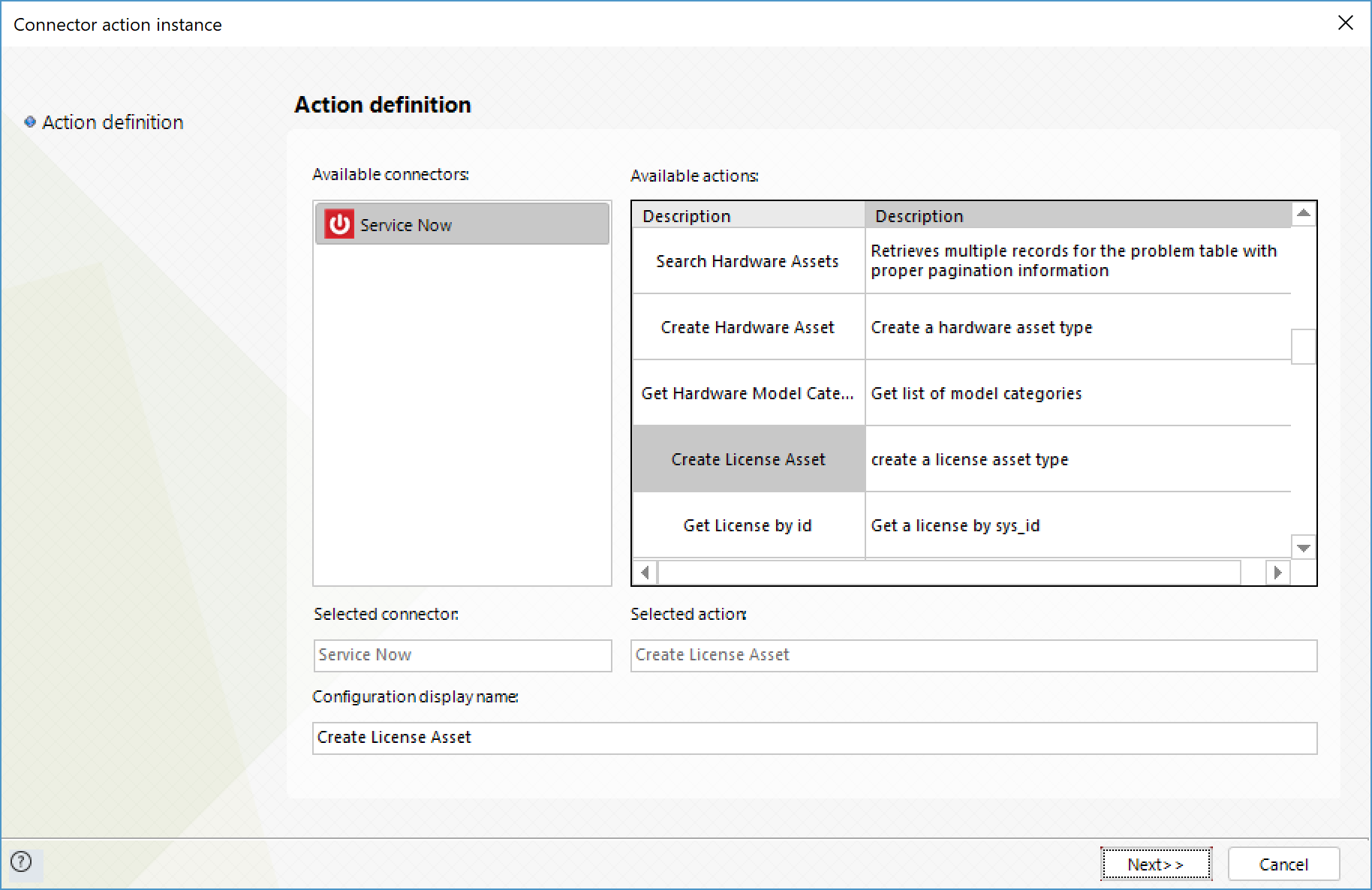
To configure its inputs, consider:
•Model: Model of the new license asset. This parameter is required for a successful service invocation.
•Model_category: Category ID of the model of the new license asset. This parameter is required for a successful service invocation.
•Asset_tag: Unique identifier of the asset, normally it is a QR or Bar code. This parameter is required for a successful service invocation.
•Comments: Additional information about the asset.
•Serial_number: Serial number of the asset.
•License_key: License number of the asset.
•Cost: Cost of the asset.
•Rights: Permissions to access the asset.
•Invoice_number: Invoice number of the asset.
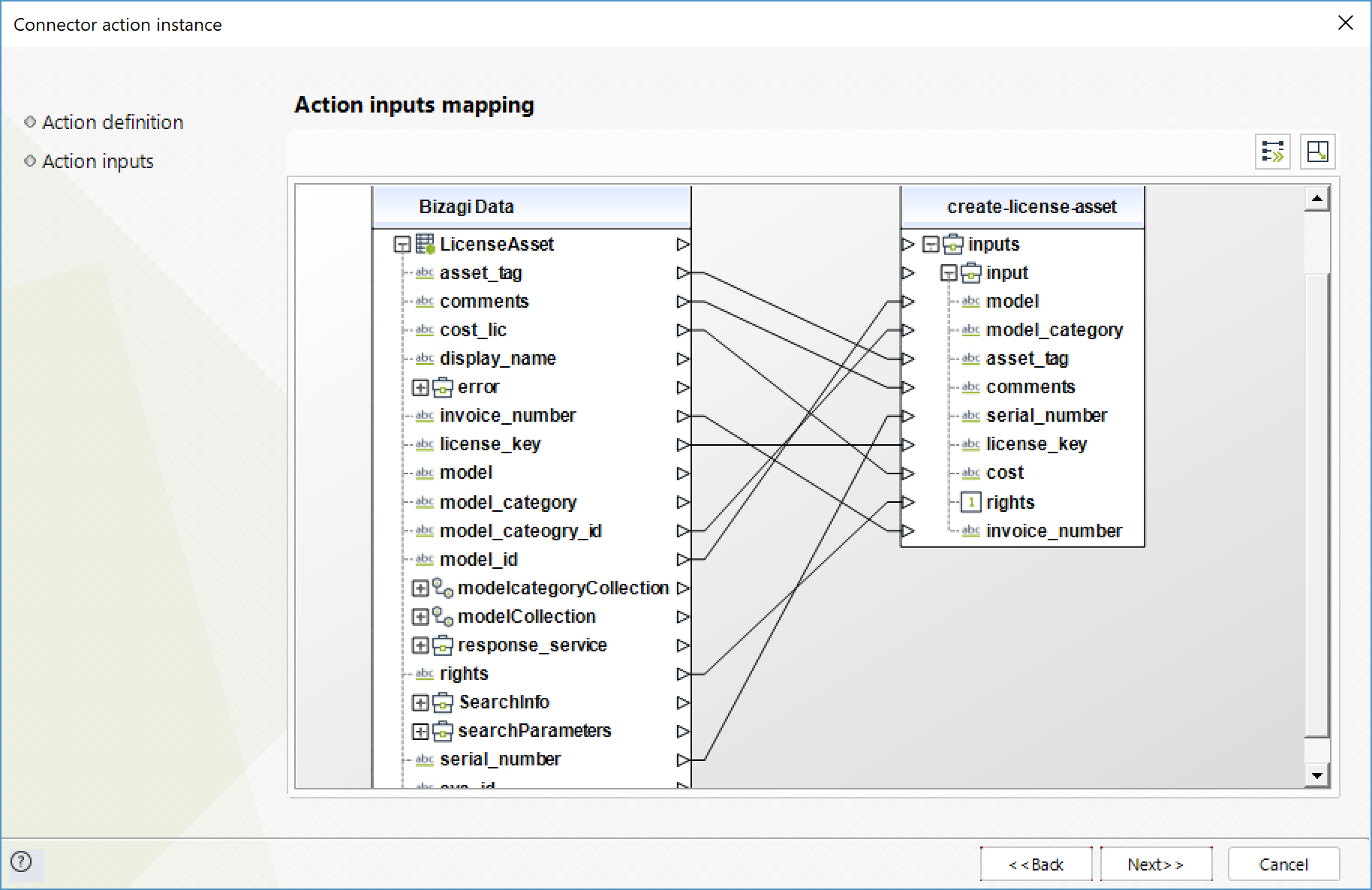
To configure its outputs, consider mapping:
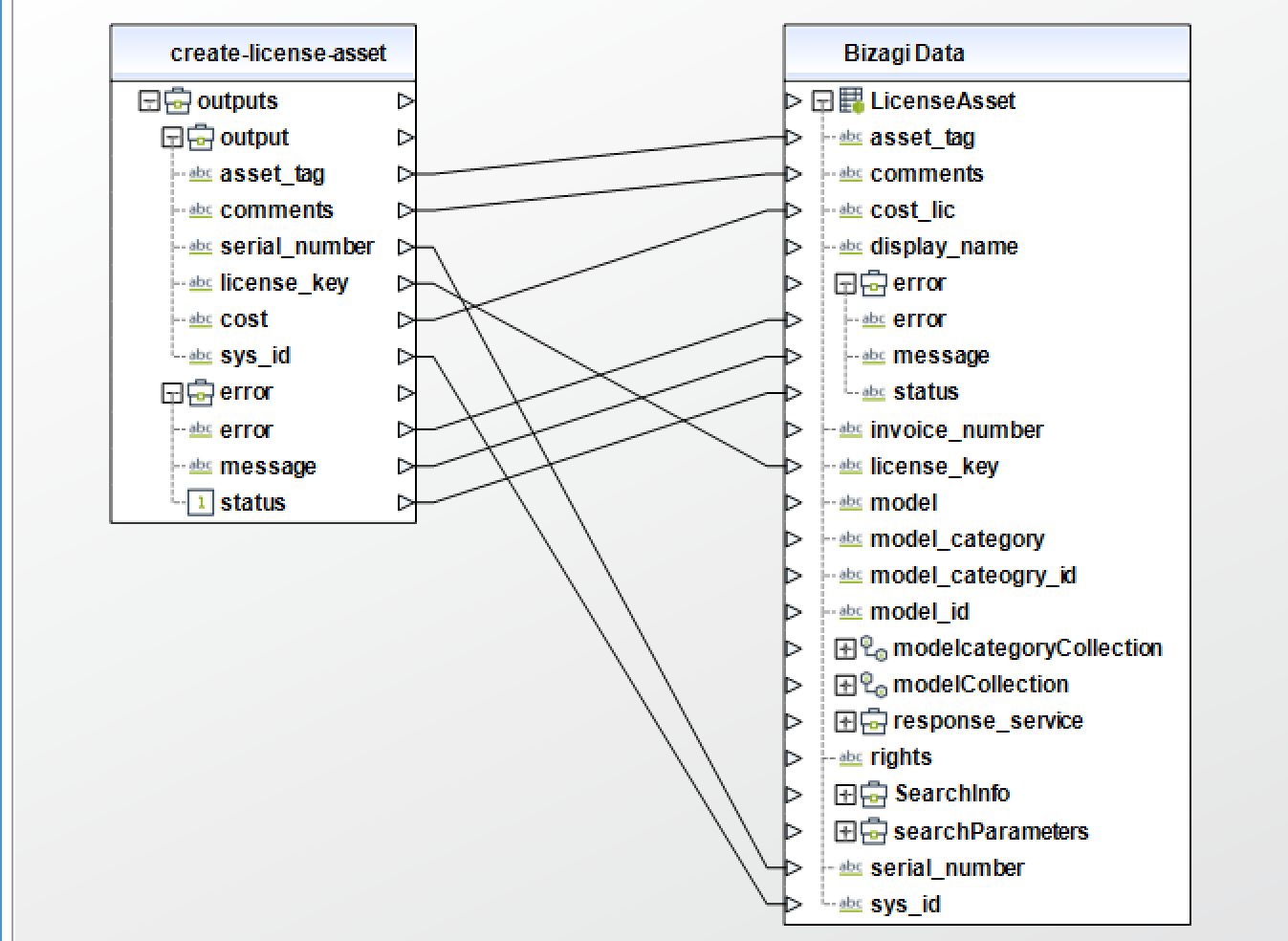
Search license asset
Obtain a list of all License assets matching the search criteria.
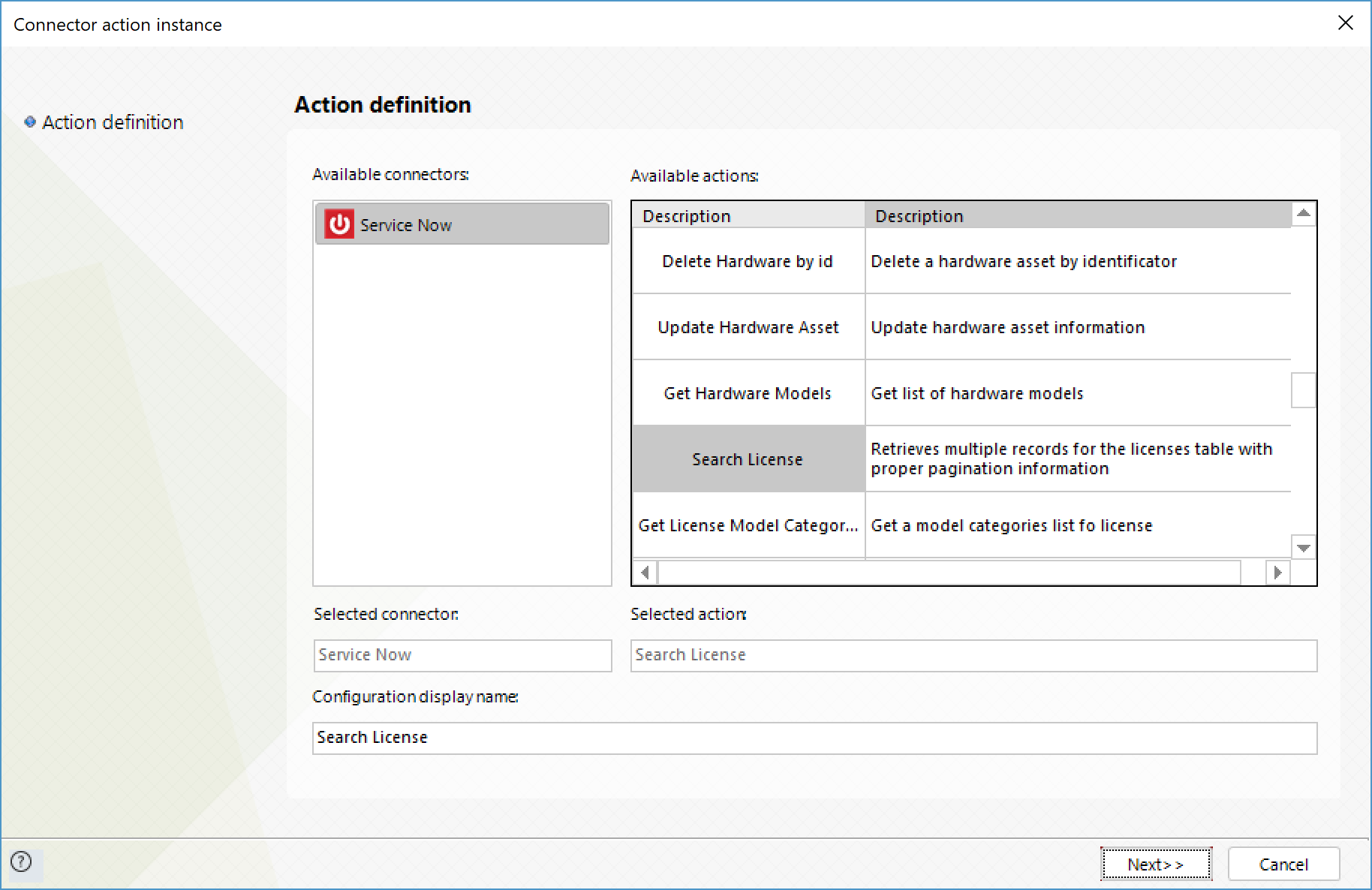
To configure its inputs, consider:
•Keyword: String to search for in the licenses.
•syspam_limit: Maximum numbers of results to retrieve. This parameter is required for a successful service invocation.
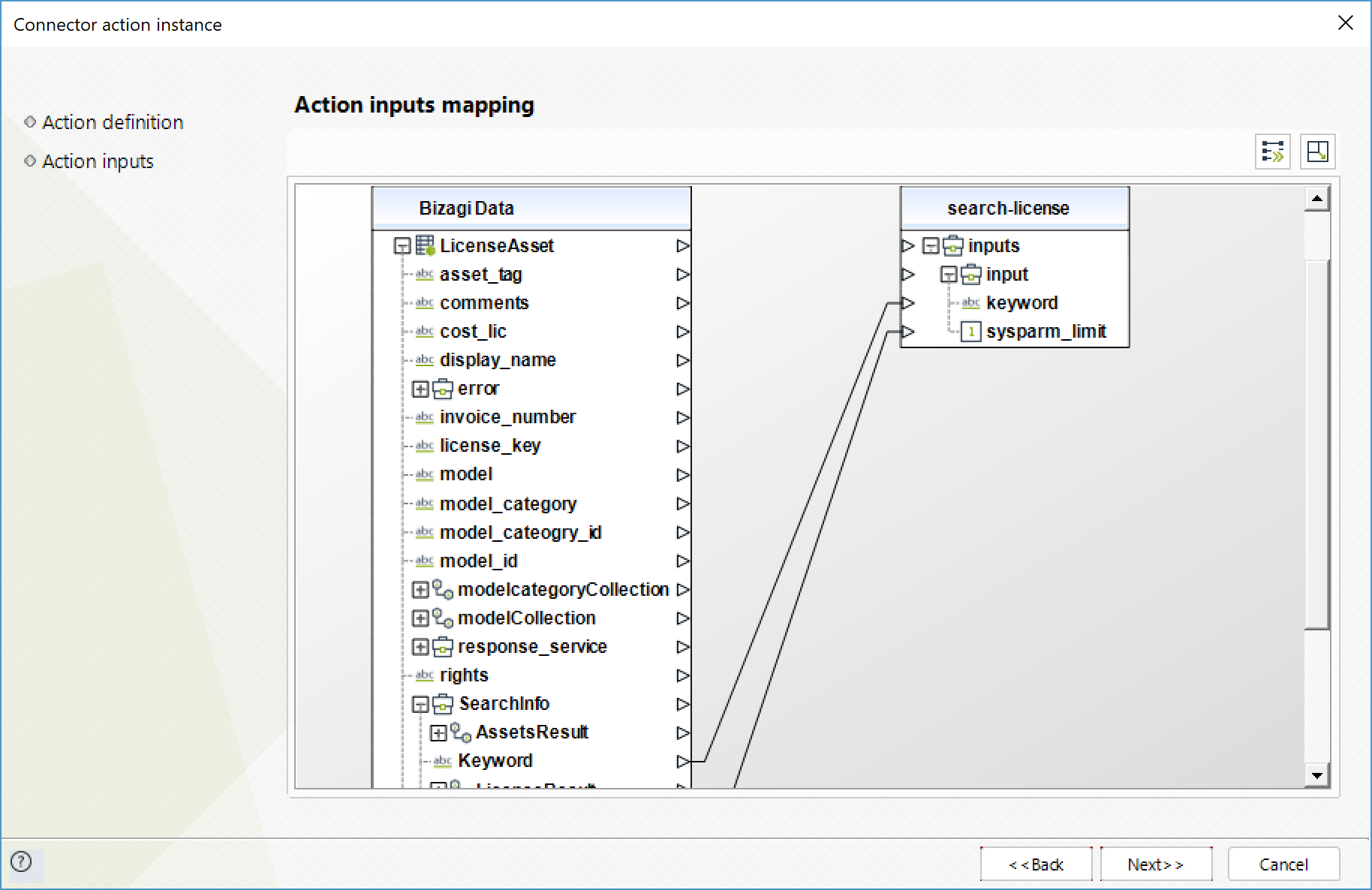
To configure its outputs, consider mapping:

Get license model categories
Obtain the list of model categories for the licenses.

To configure its outputs, consider mapping:
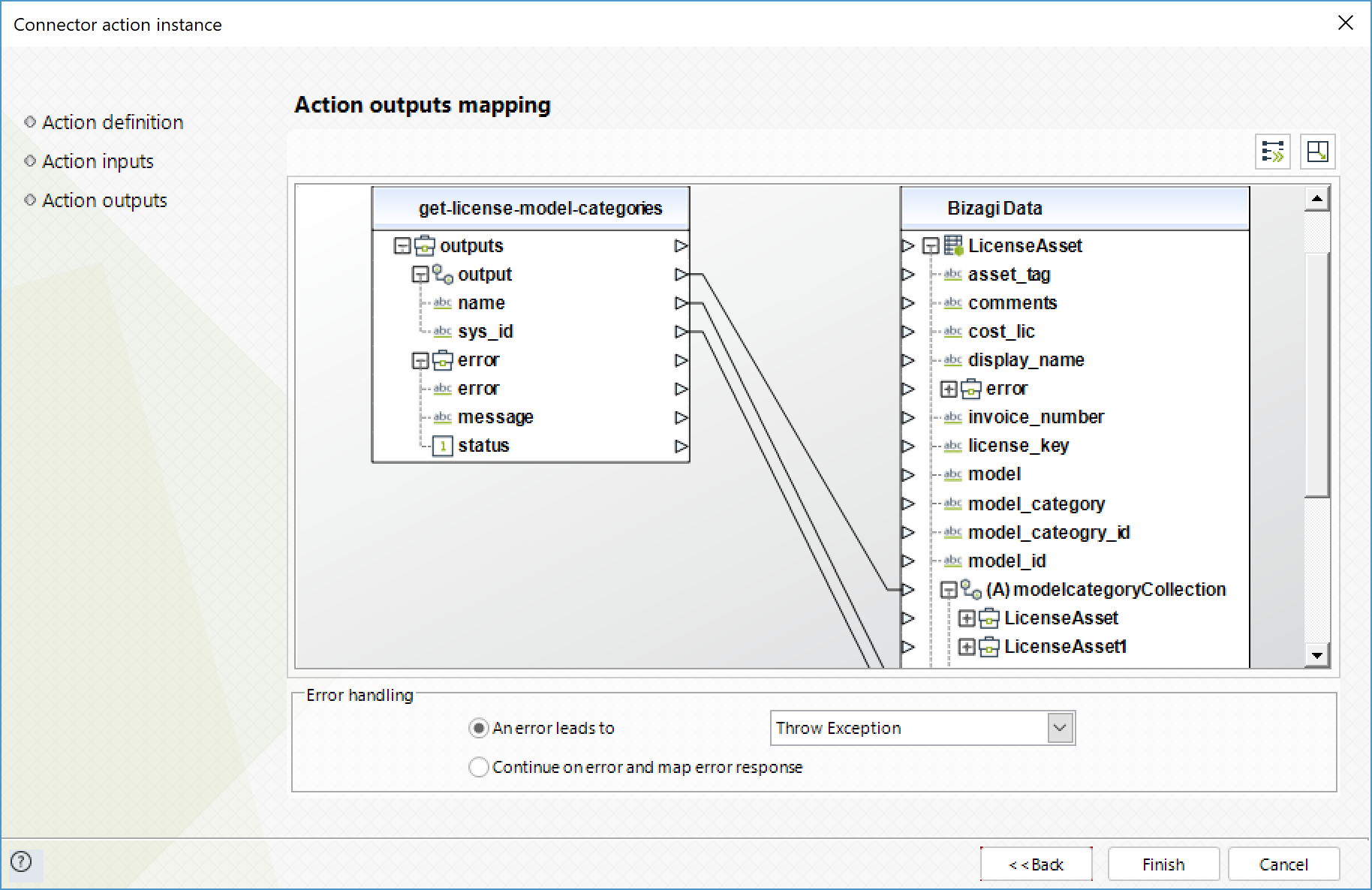
Get license models
Obtain the list of models.
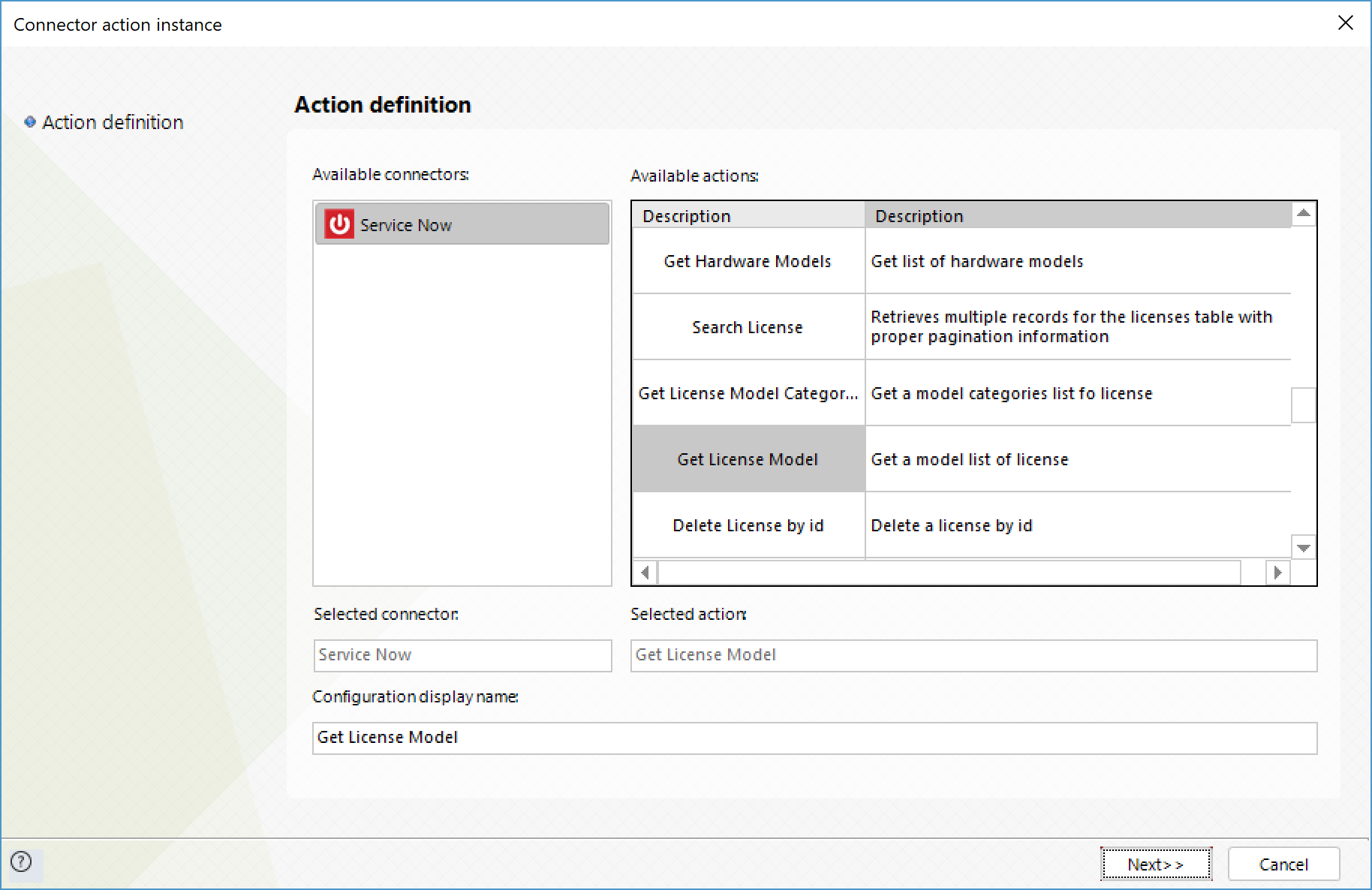
To configure its outputs, consider mapping:
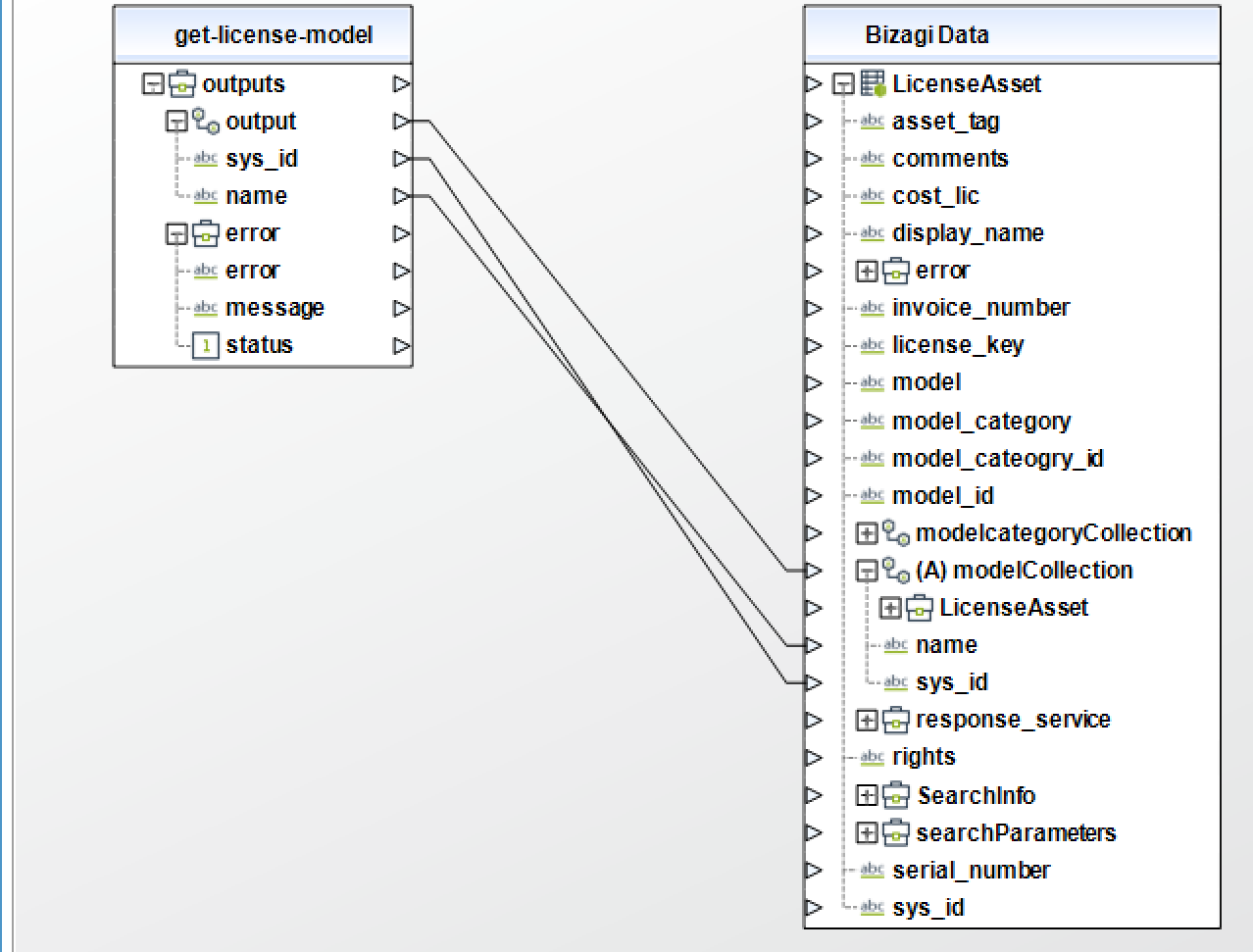
Delete license by ID
Delete a specific license asset by its ID.
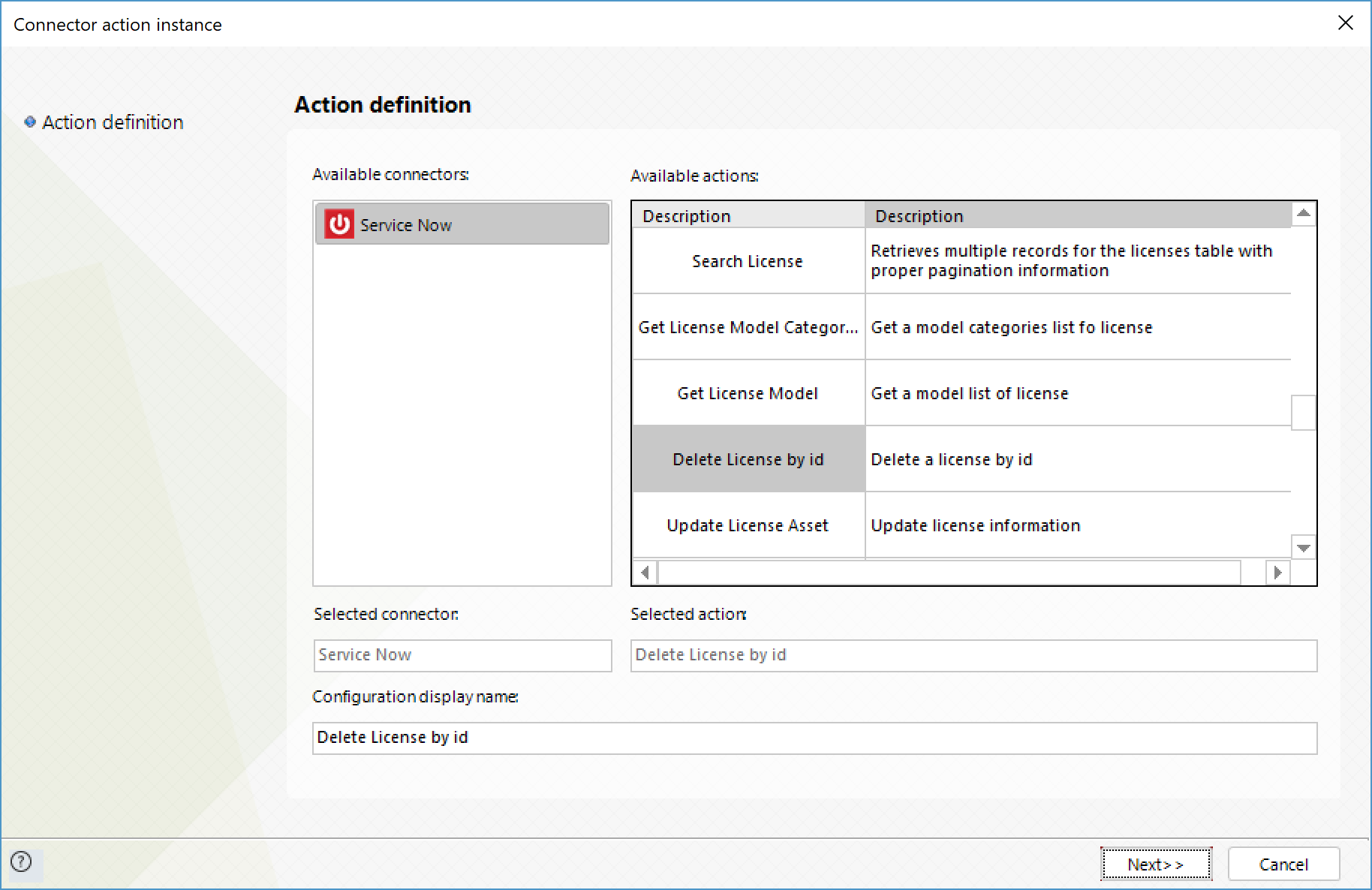
To configure its inputs, consider:
•Sys_ID: System ID of the license you wish to delete. This parameter is required for the service invocation to be successful.

To configure its outputs, consider mapping:
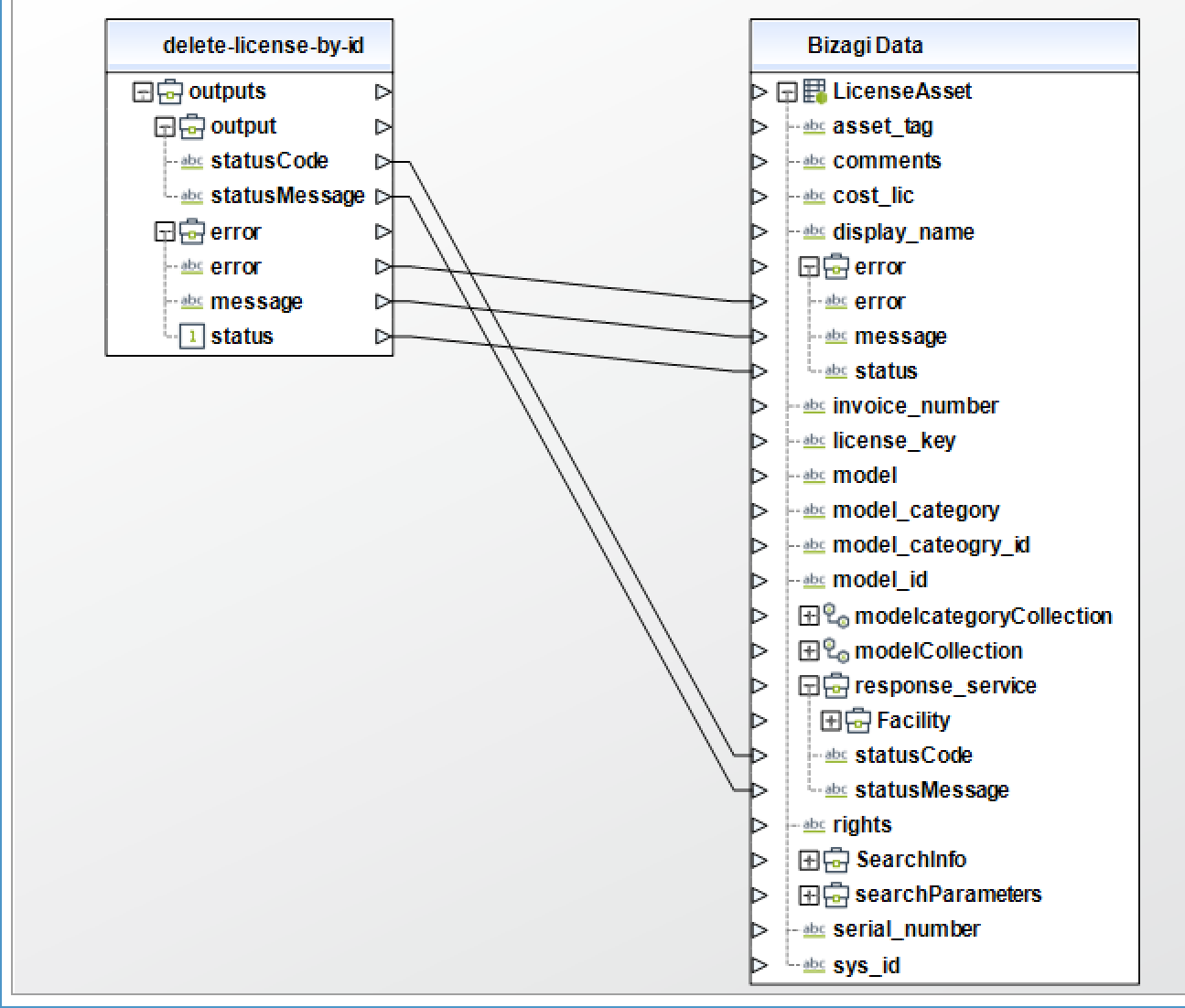
Update license by ID
Modify or add information to a license by its ID.
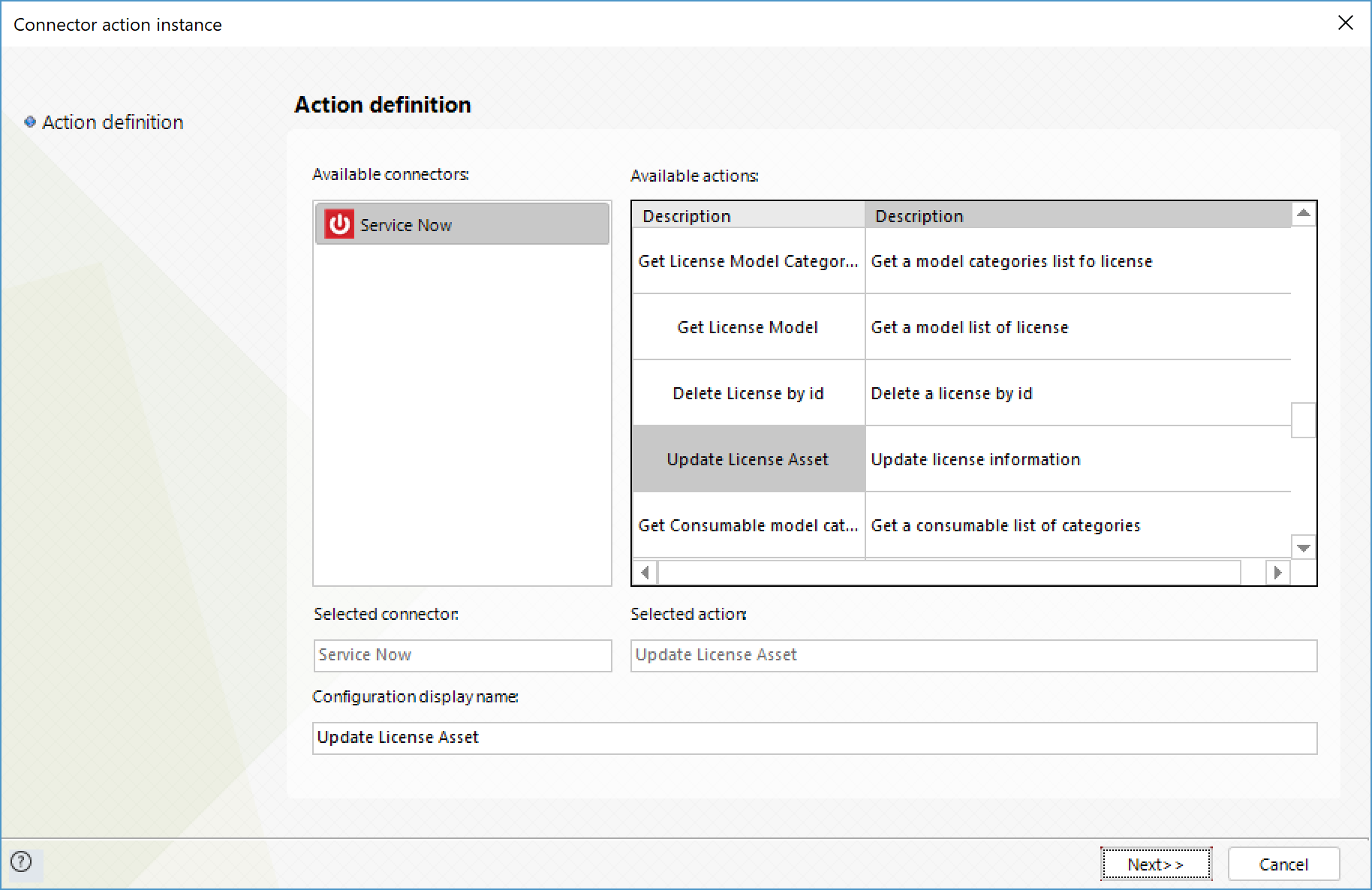
To configure its inputs, consider:
•Sys_ID: System ID of the license you wish to update. This parameter is required for the service invocation to be successful.
•Asset_tag: Unique identifier of the asset, normally it is a QR or Bar code. This parameter is required for the service invocation to be successful.
•Comments: Additional information about the asset.
•Serial_number: Serial number of the asset.
•License_key: License number of the asset.
•Cost: Cost of the asset.
•Rights: Permissions to access the asset.
•Invoice_number: Invoice number of the asset.
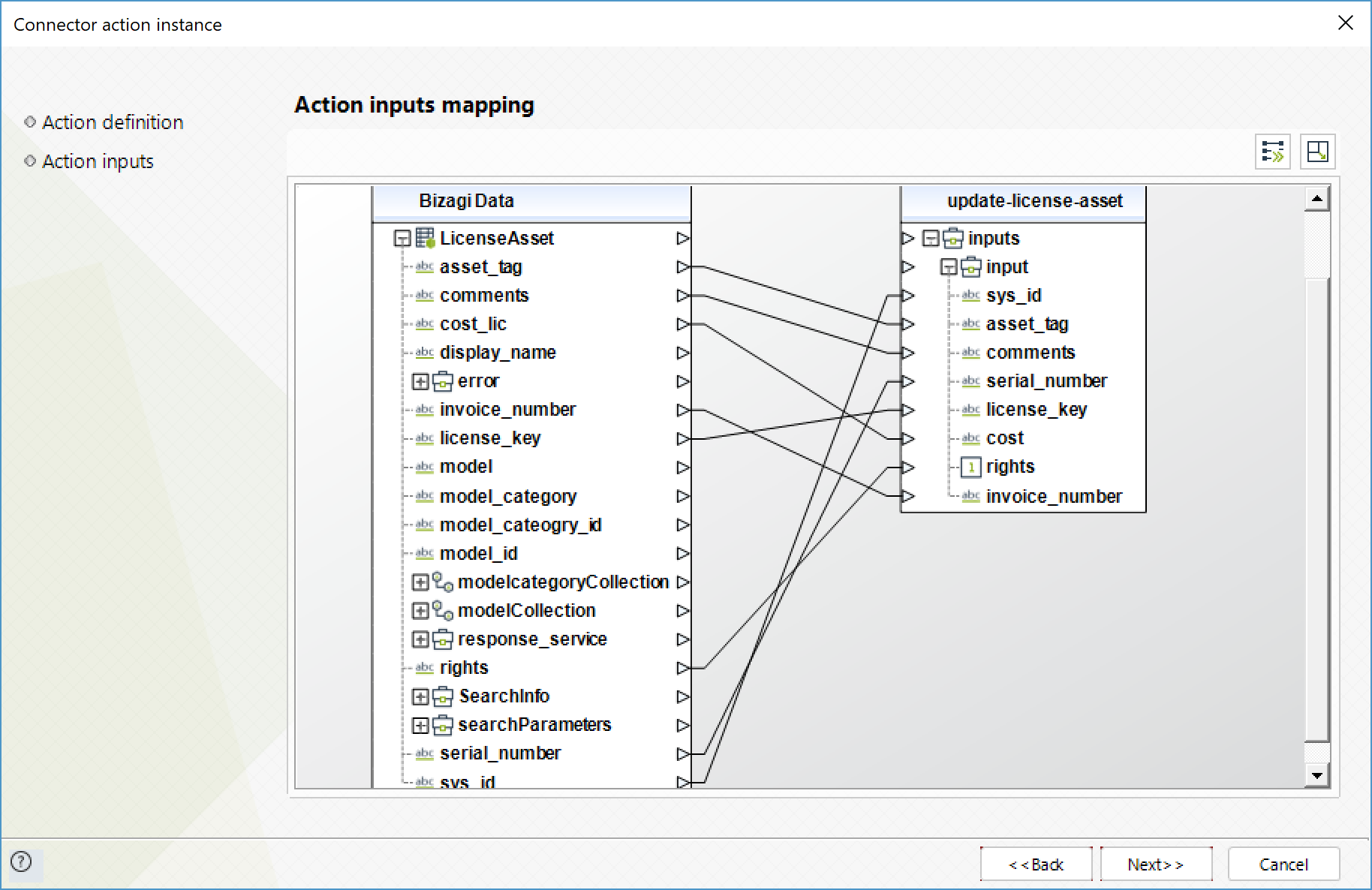
To configure its outputs, consider mapping:

Get consumable model categories
Obtain the model categories list for the consumable assets.
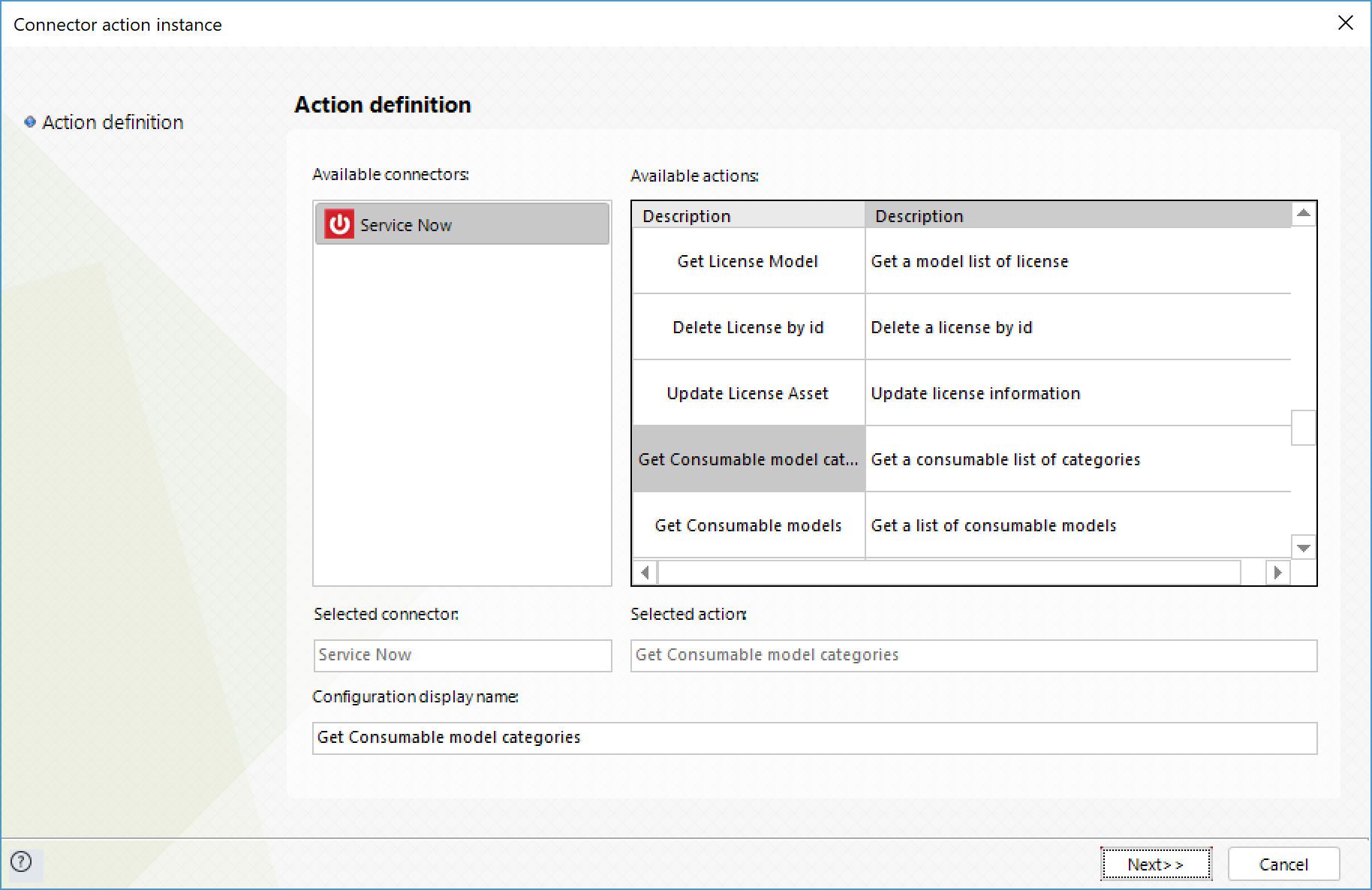
To configure its outputs, consider mapping:
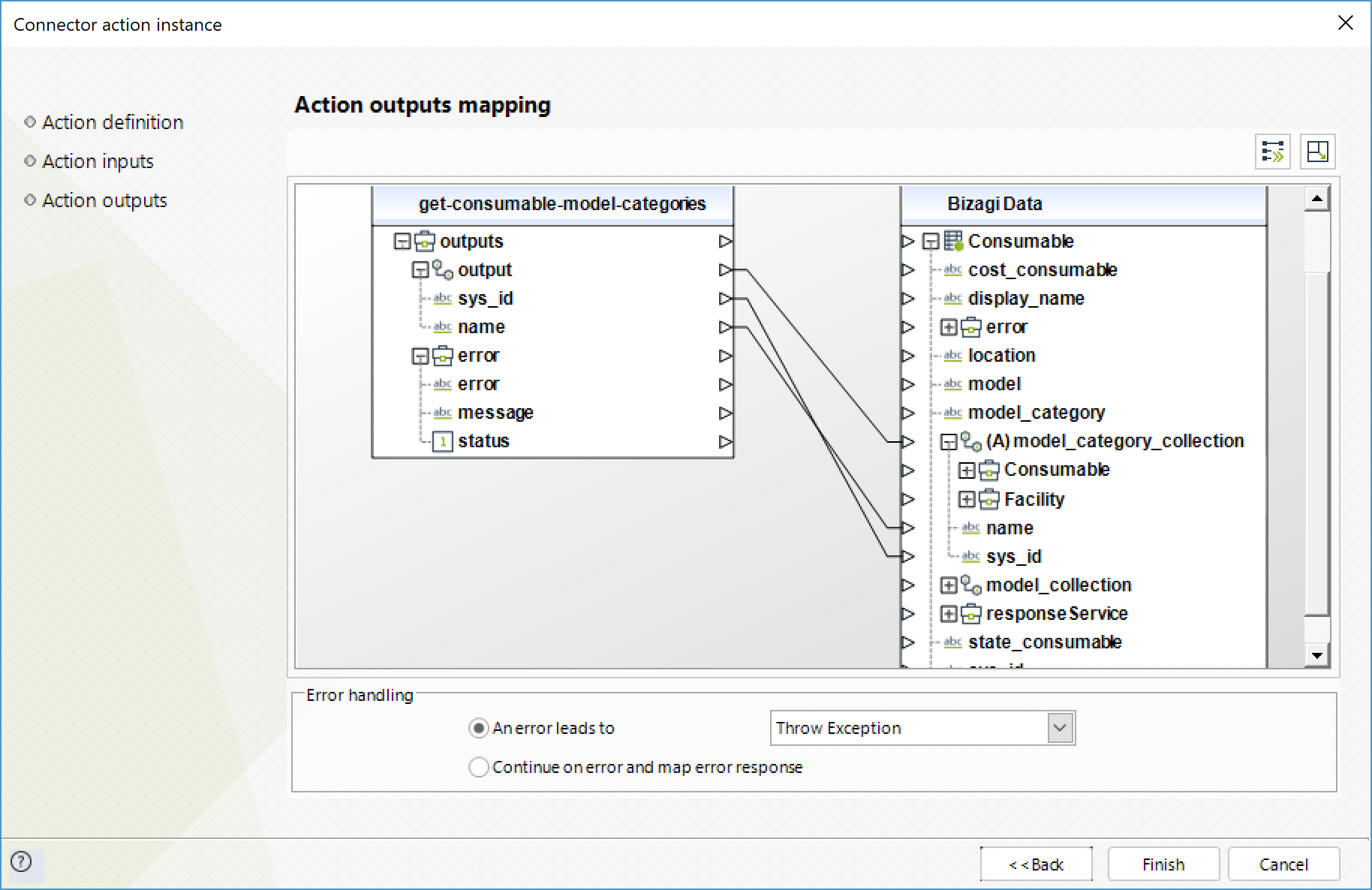
Get consumable models
Obtain the models list for the consumable assets.
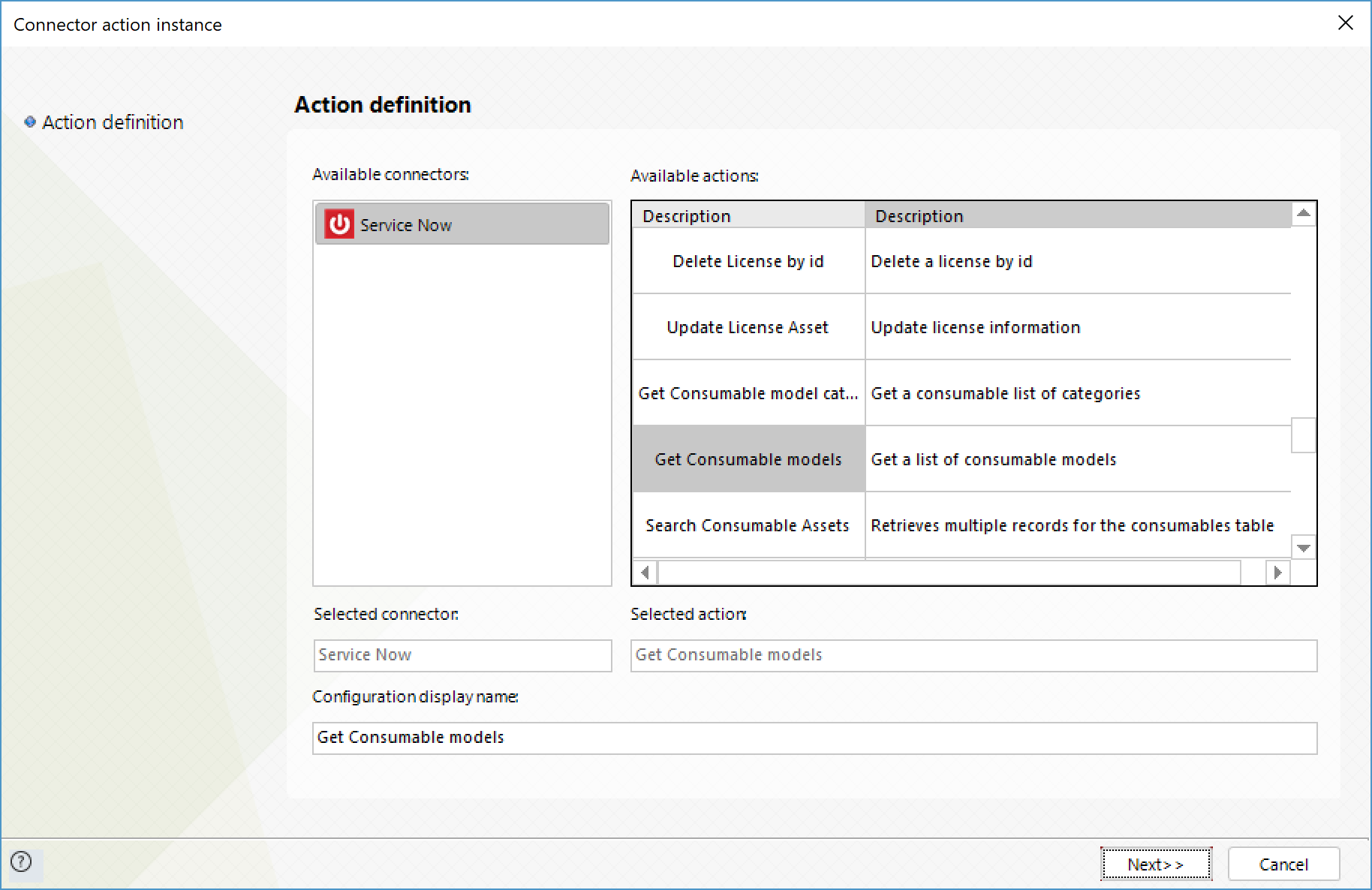
To configure its outputs, consider mapping:
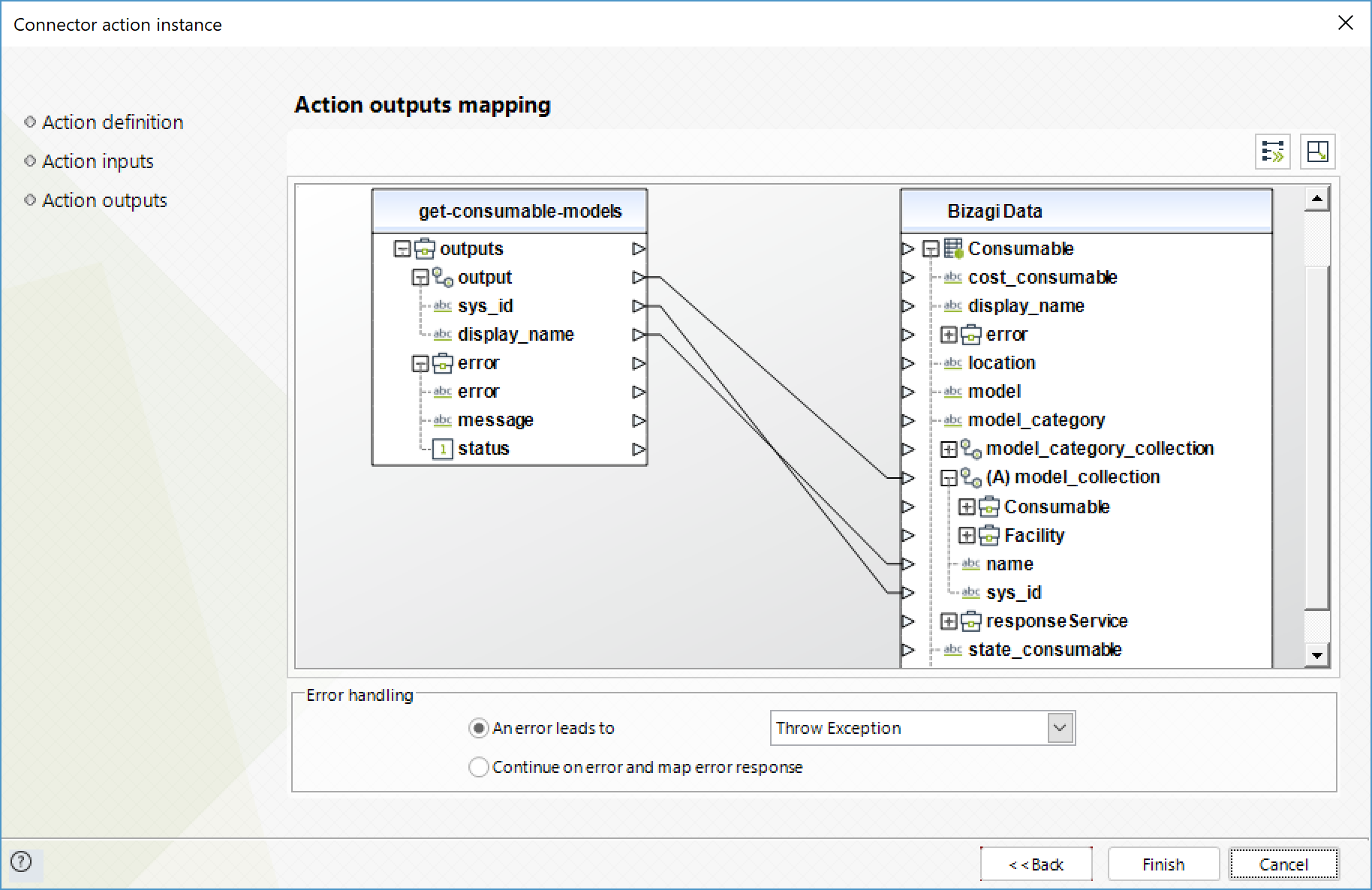
Search consumable asset
Obtain a list of consumable assets matching the search parameters.
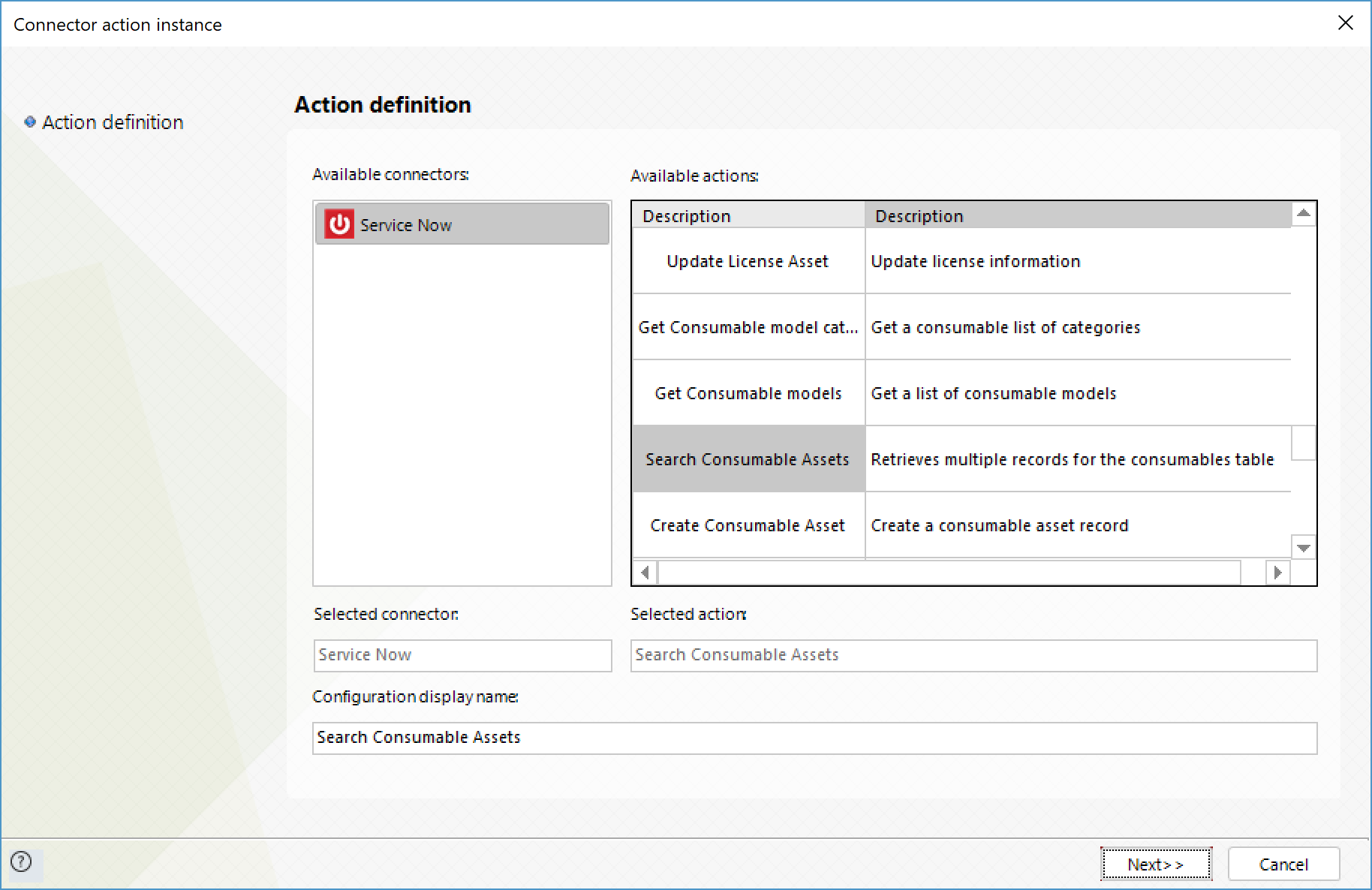
To configure its inputs, consider:
•Sysparamlimit: Maximum amount of results to retrieve. This parameter is required for the service invocation to be successful.
•Keyword: String of characters to search for in the consumable assets.
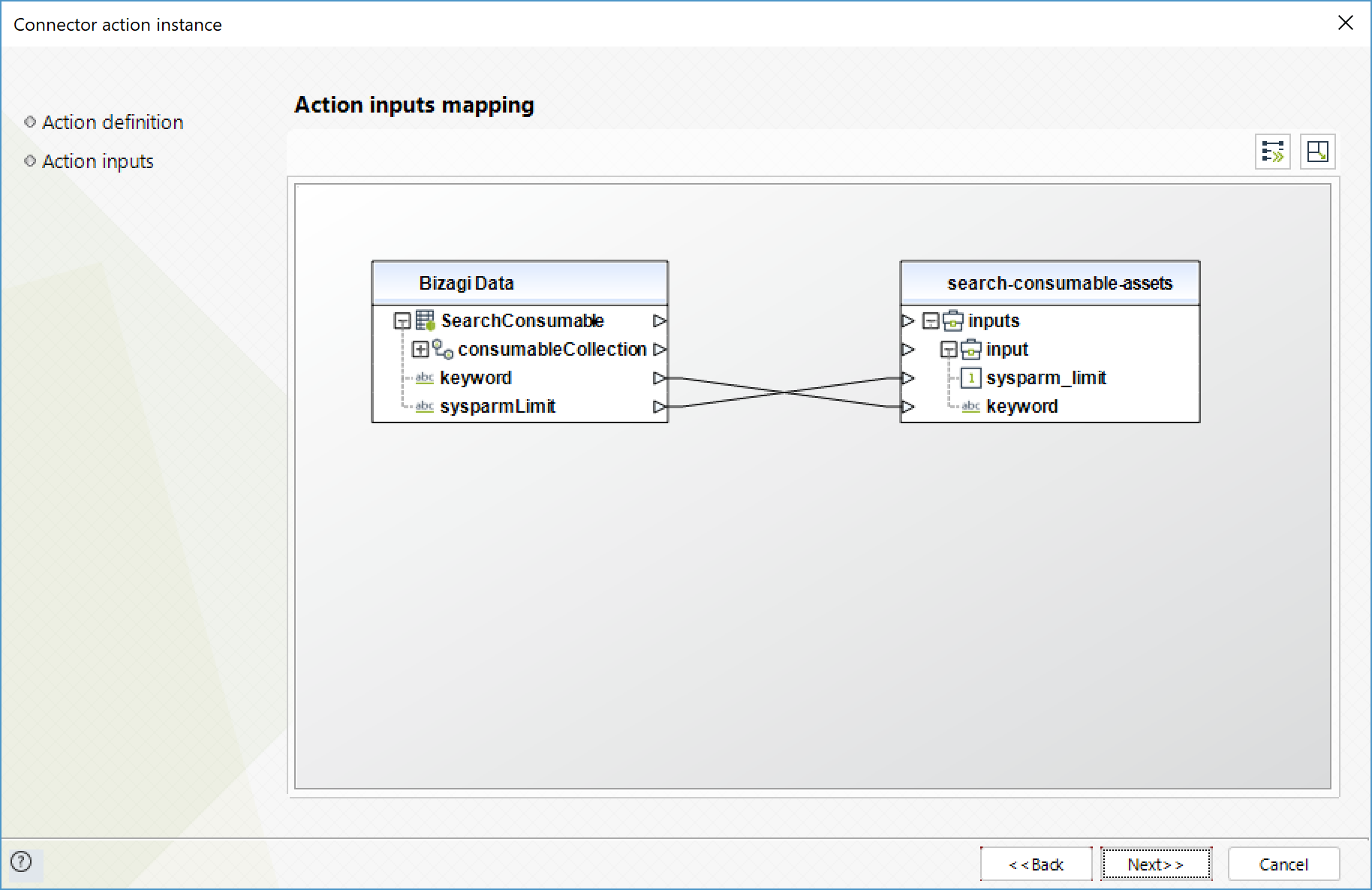
To configure its outputs, consider mapping:
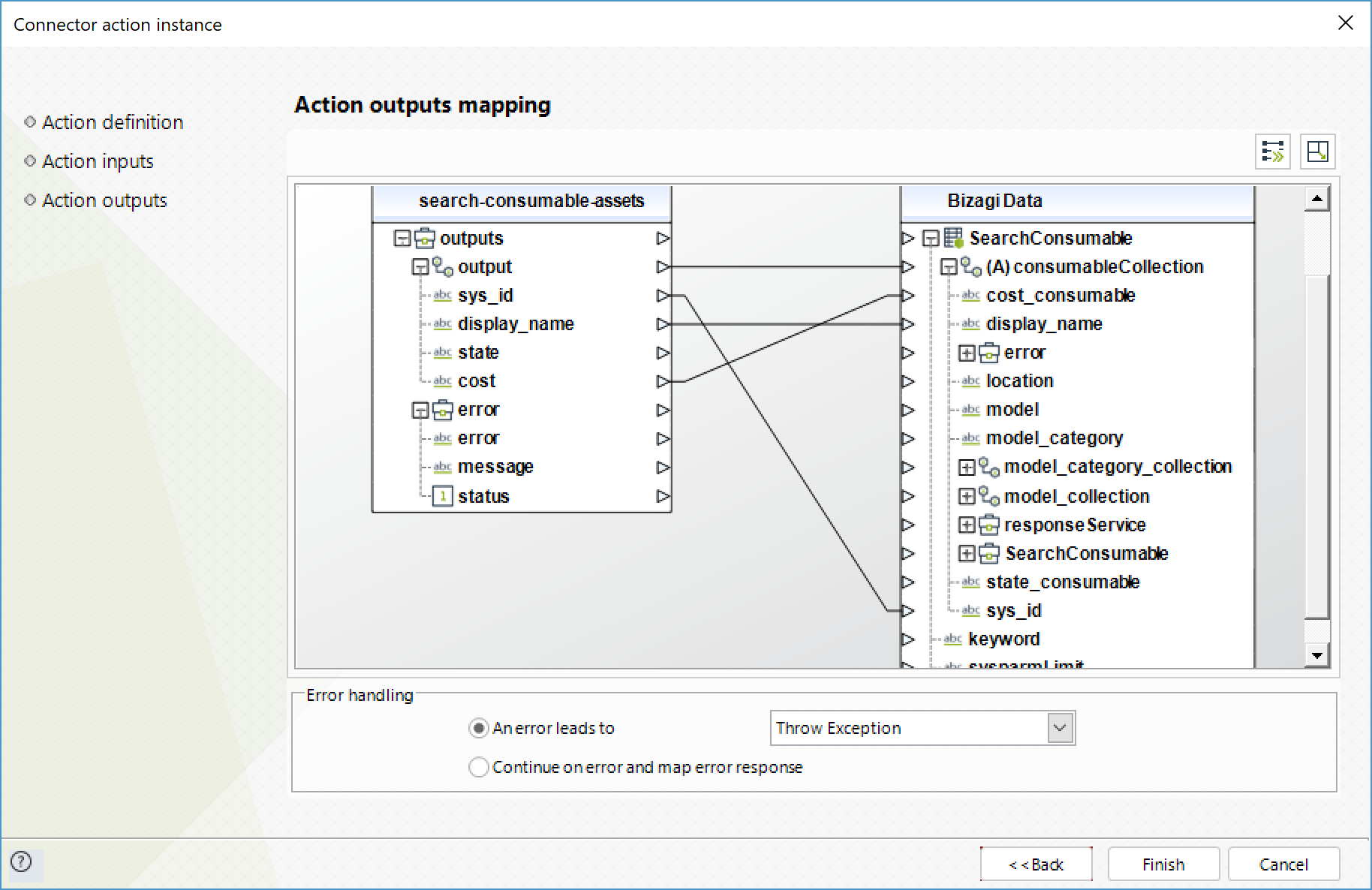
Create consumable assets
Create a new consumable asset.
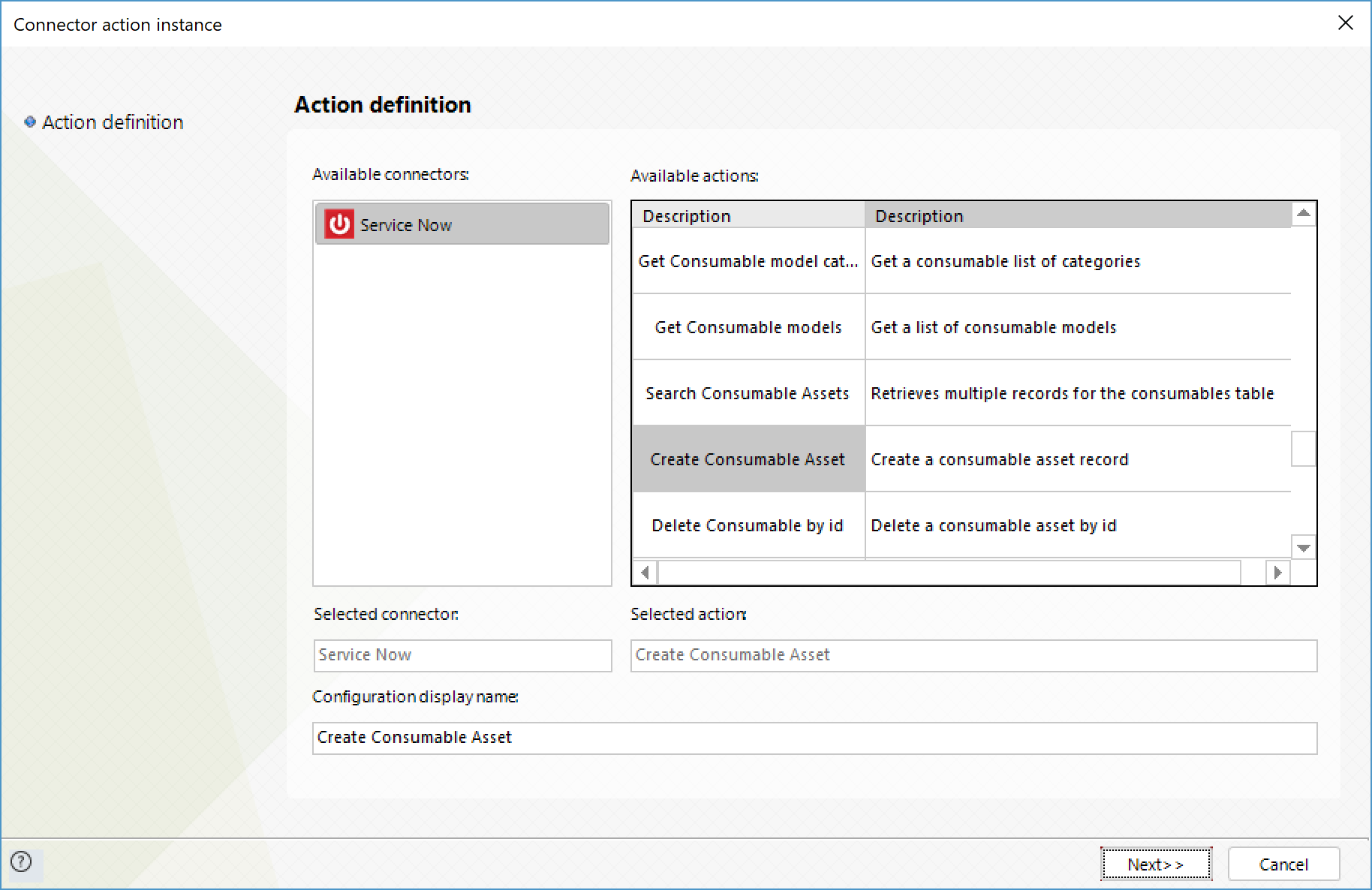
To configure its inputs, consider:
•Cost: Cost of the asset.
•Model: ID of the Model of the new asset. This parameter is required for a successful service invocation.
•Model_category: ID of the Model category of the new asset. This parameter is required for a successful service invocation.
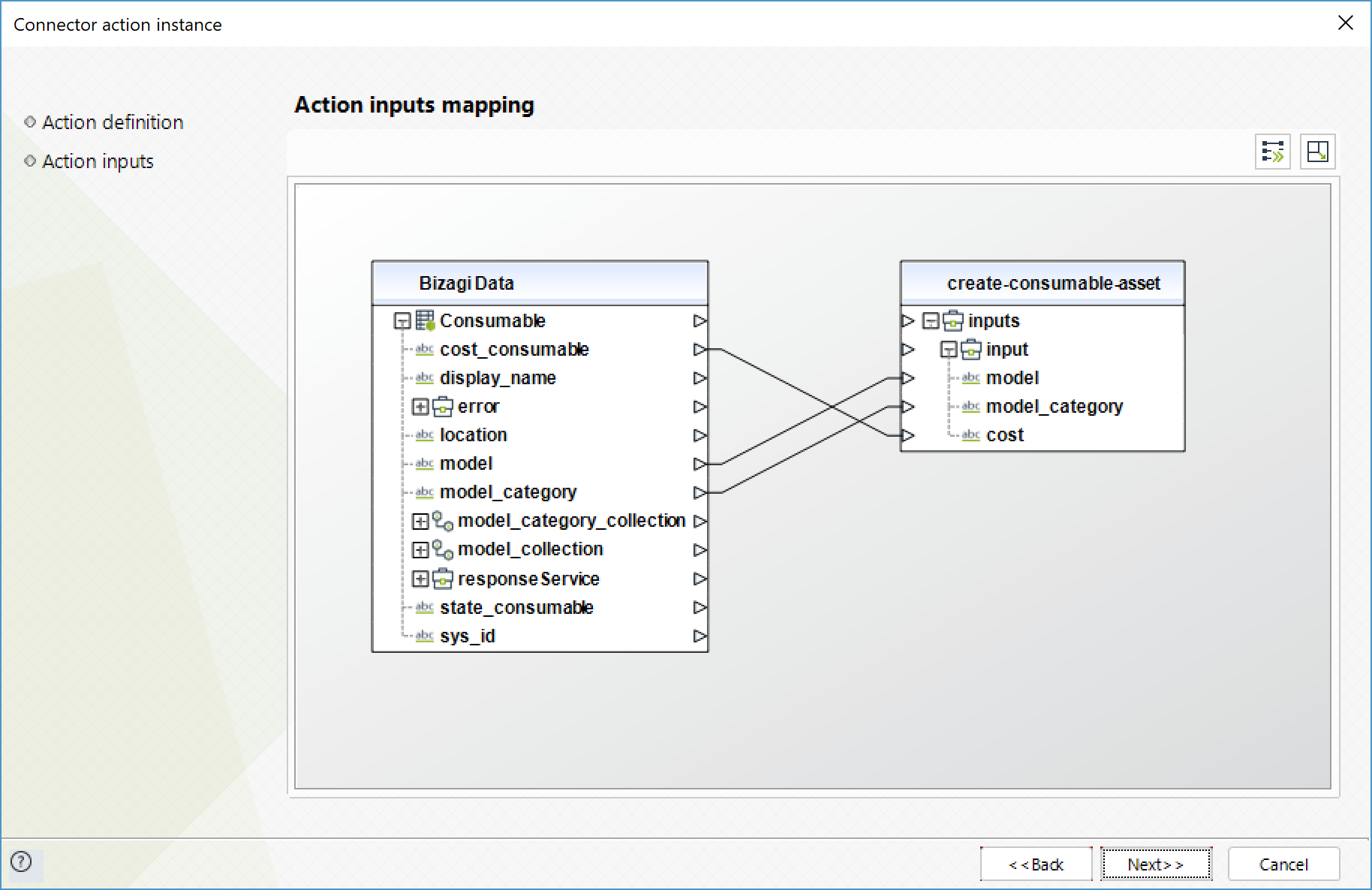
To configure its outputs, consider mapping:
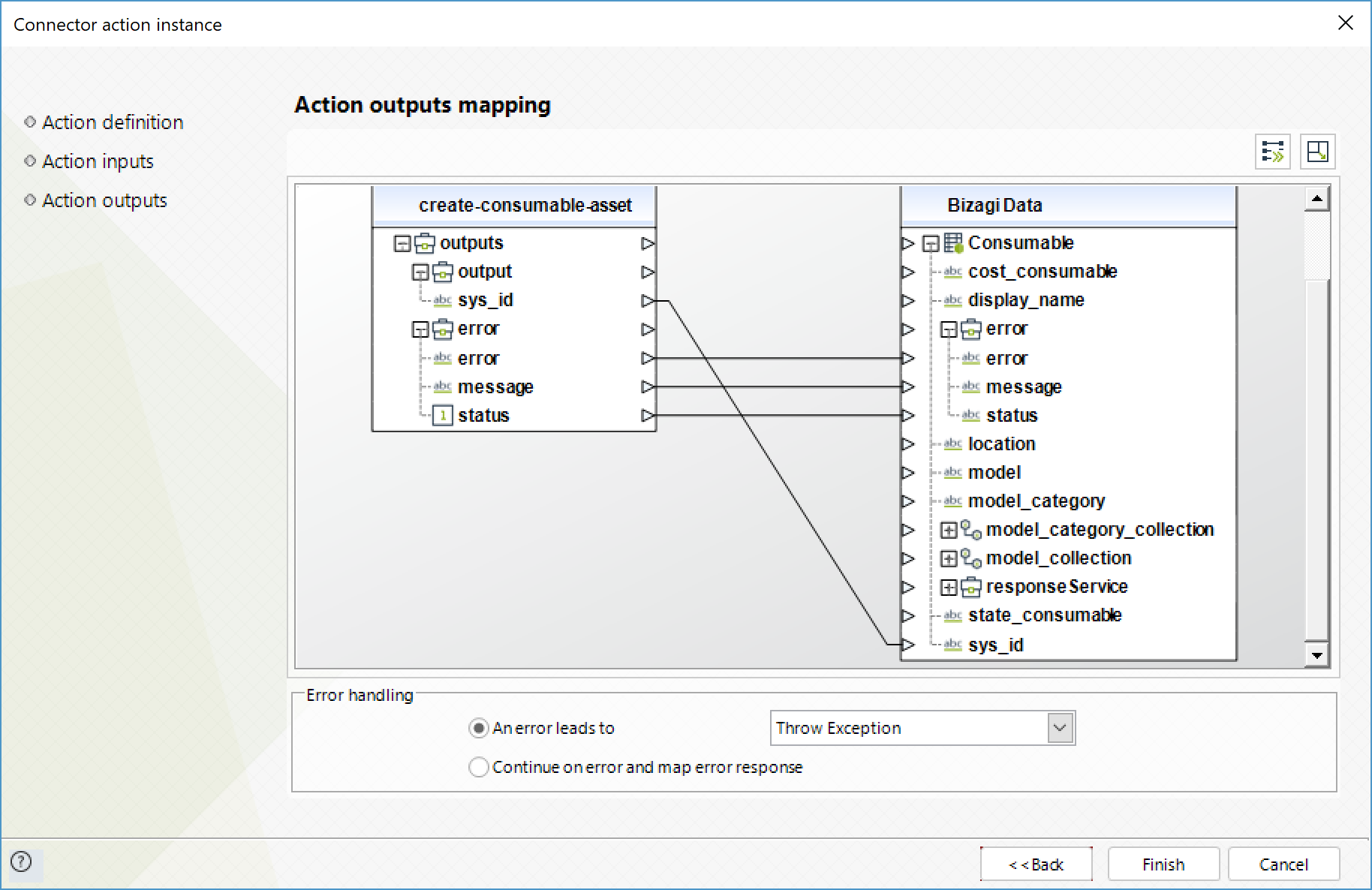
Delete consumable by ID
Delete a specific consumable asset by its ID.

To configure its inputs, consider:
•Sys_ID: System ID of the consumable asset you wish to delete. This parameter is required for a successful service execution.
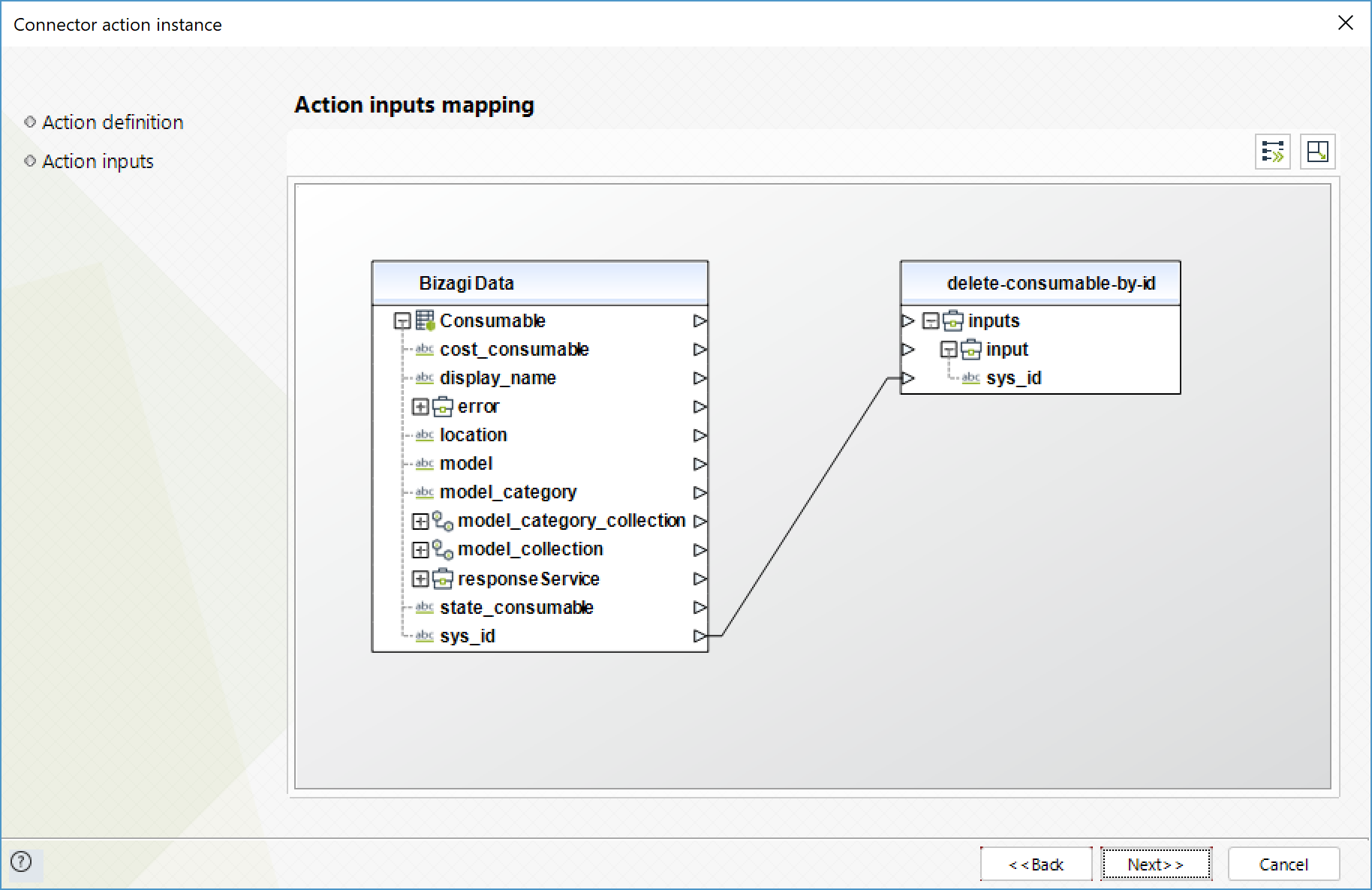
To configure its outputs, consider mapping:
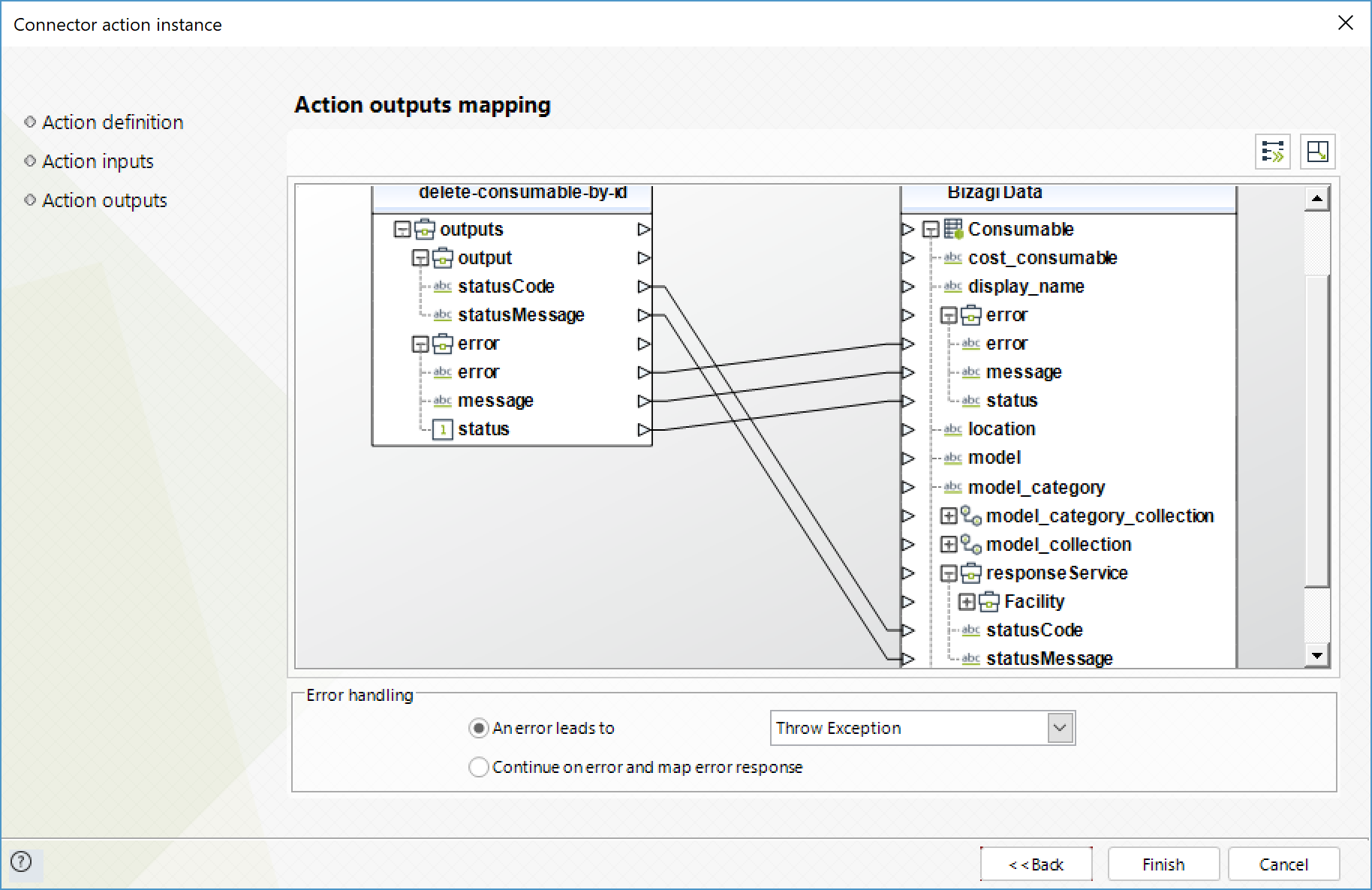
Get consumable by ID
Get a specific consumable asset by its ID.

To configure its inputs, consider:
•Sys_ID: System ID of the consumable asset you wish to obtain. This parameter is required for a successful service execution.
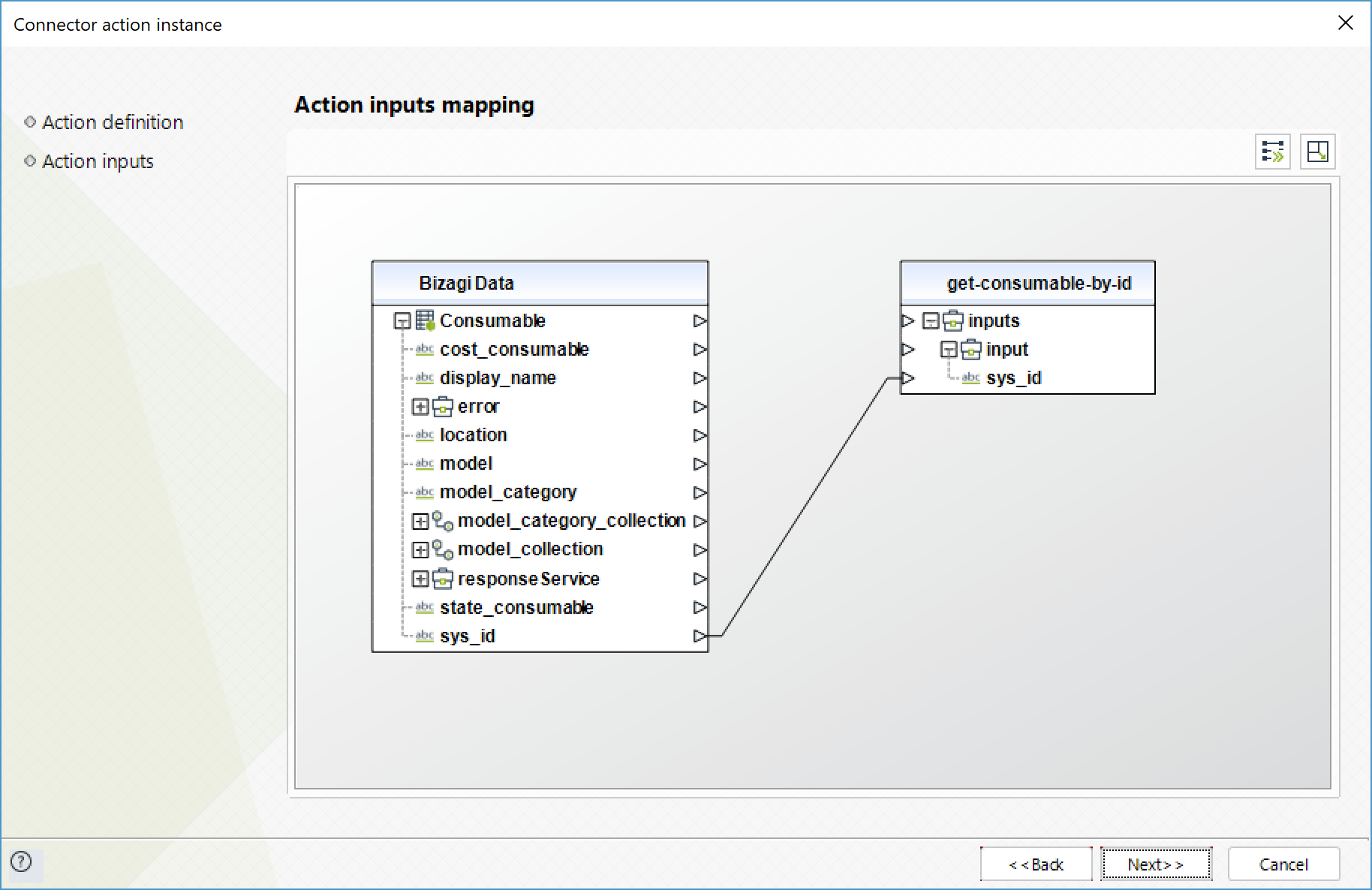
To configure its outputs, consider mapping:
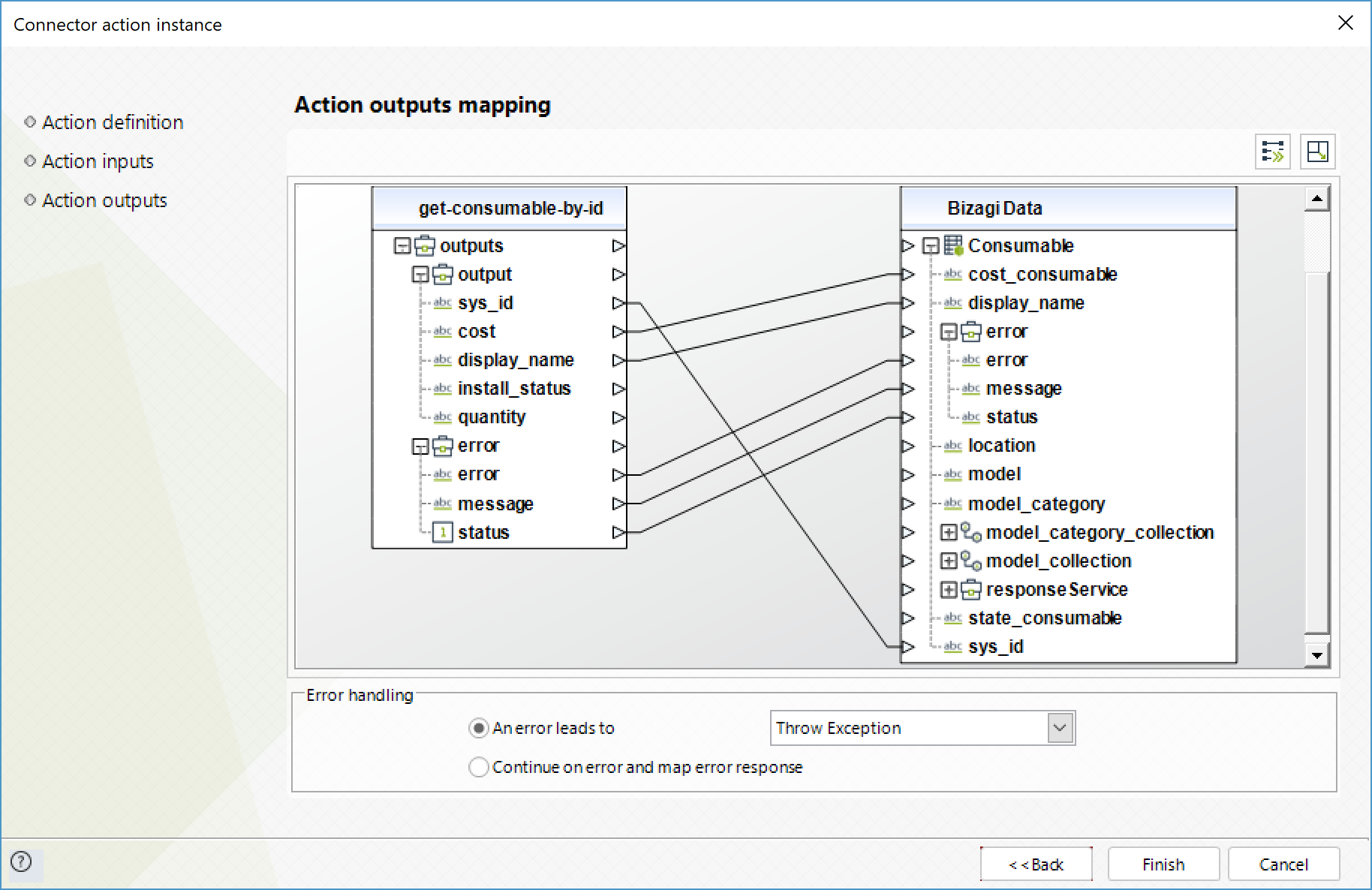
Update consumable asset
Modify or add information to a specific consumable asset by its ID.
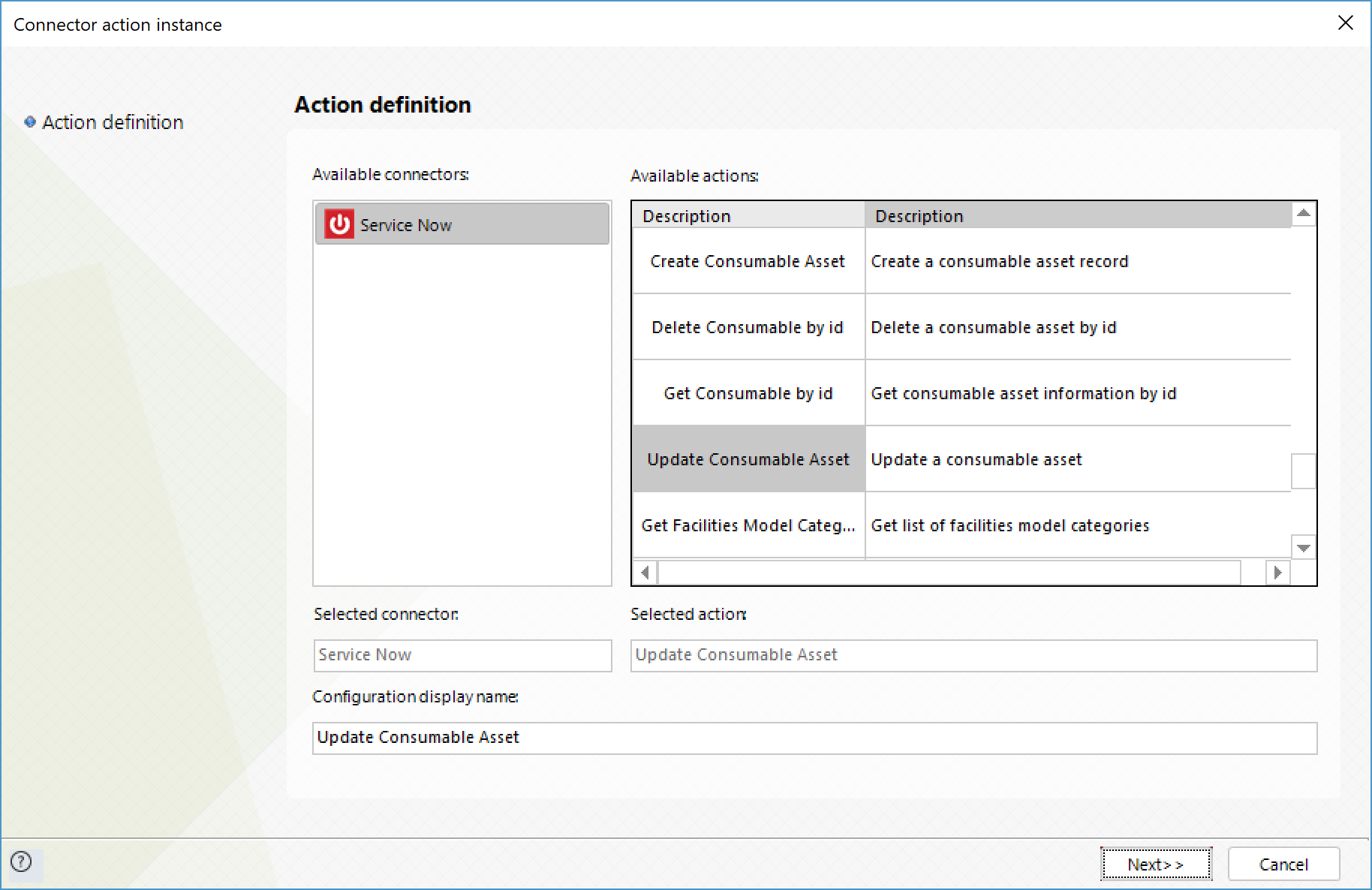
To configure its inputs, consider:
•Sys_ID: System ID of the consumable asset you wish to update. This parameter is required for a successful service execution.
•state: State of the asset. Its possible values are:
o1 - in use.
o2 - on order.
o3 - in maintenance.
o6 - in stock.
o7 - retired.
o8 - missing.
o9 - in transit.
o10 - Consumed.
•Cost: Cost of the asset.
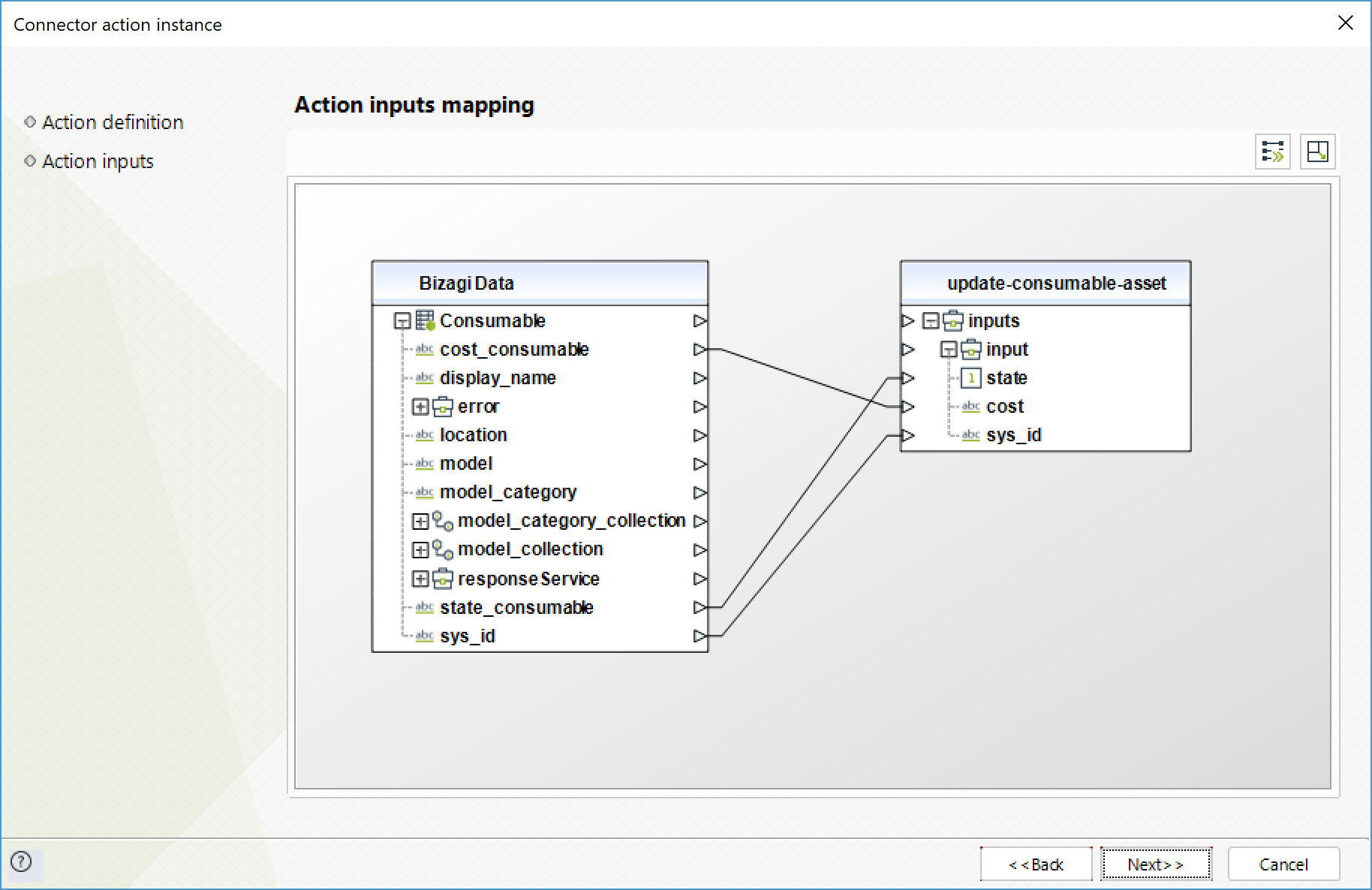
To configure its outputs, consider mapping:
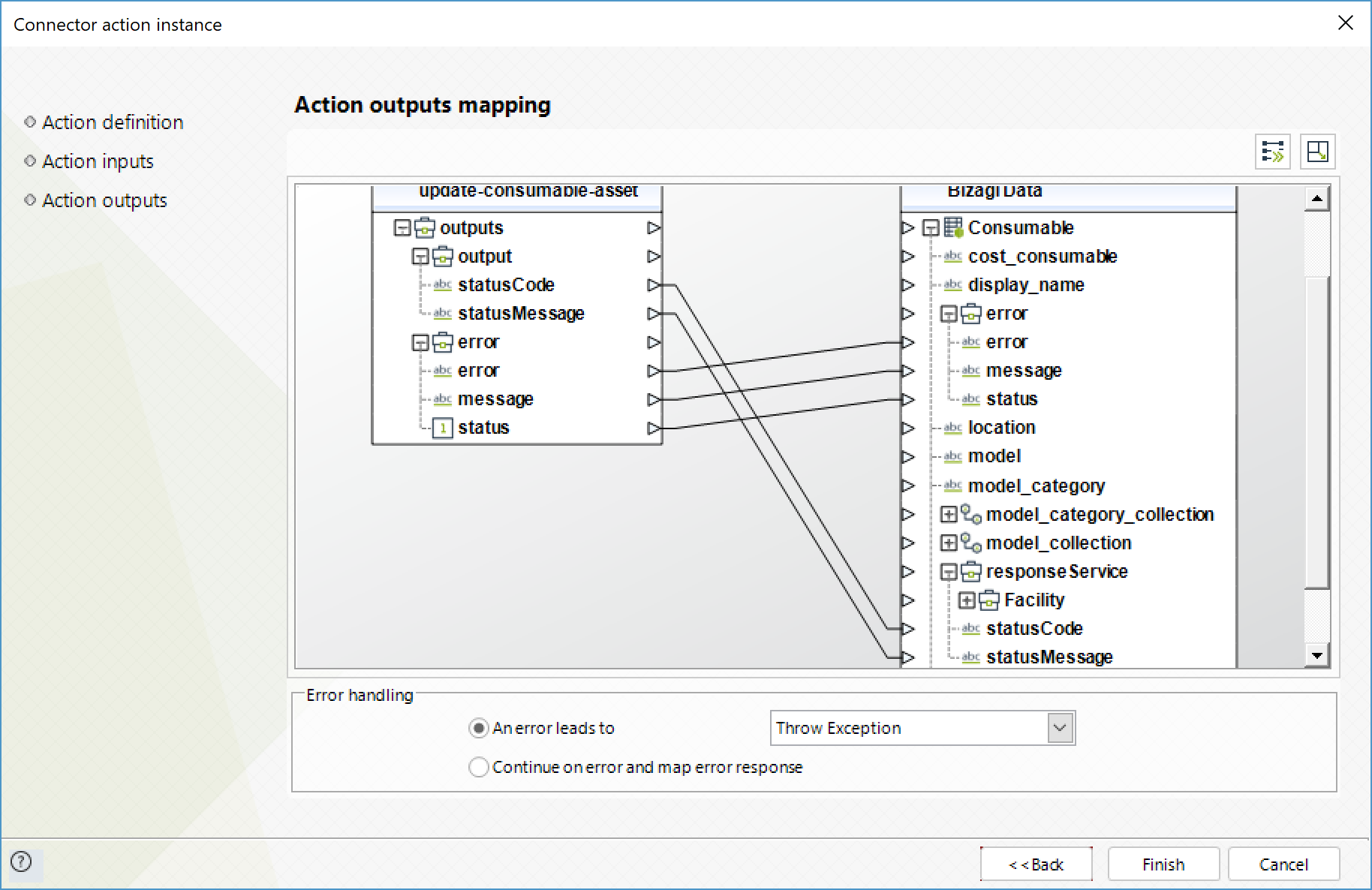
Get facilities model categories
Obtain the list of categories of the facilities.
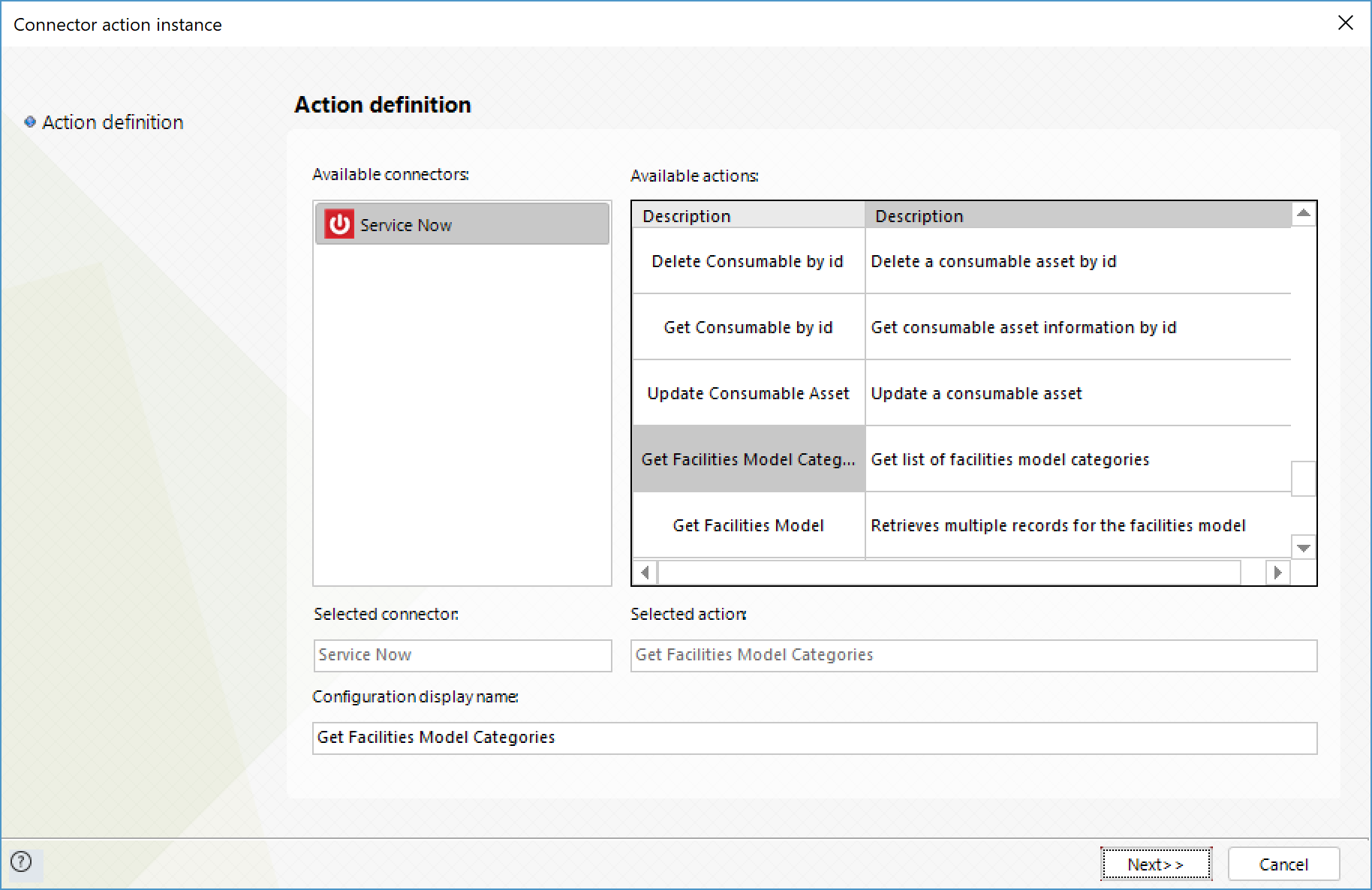
To configure its outputs, consider mapping:

Get facilities model
Obtain the list of models of the facilities.
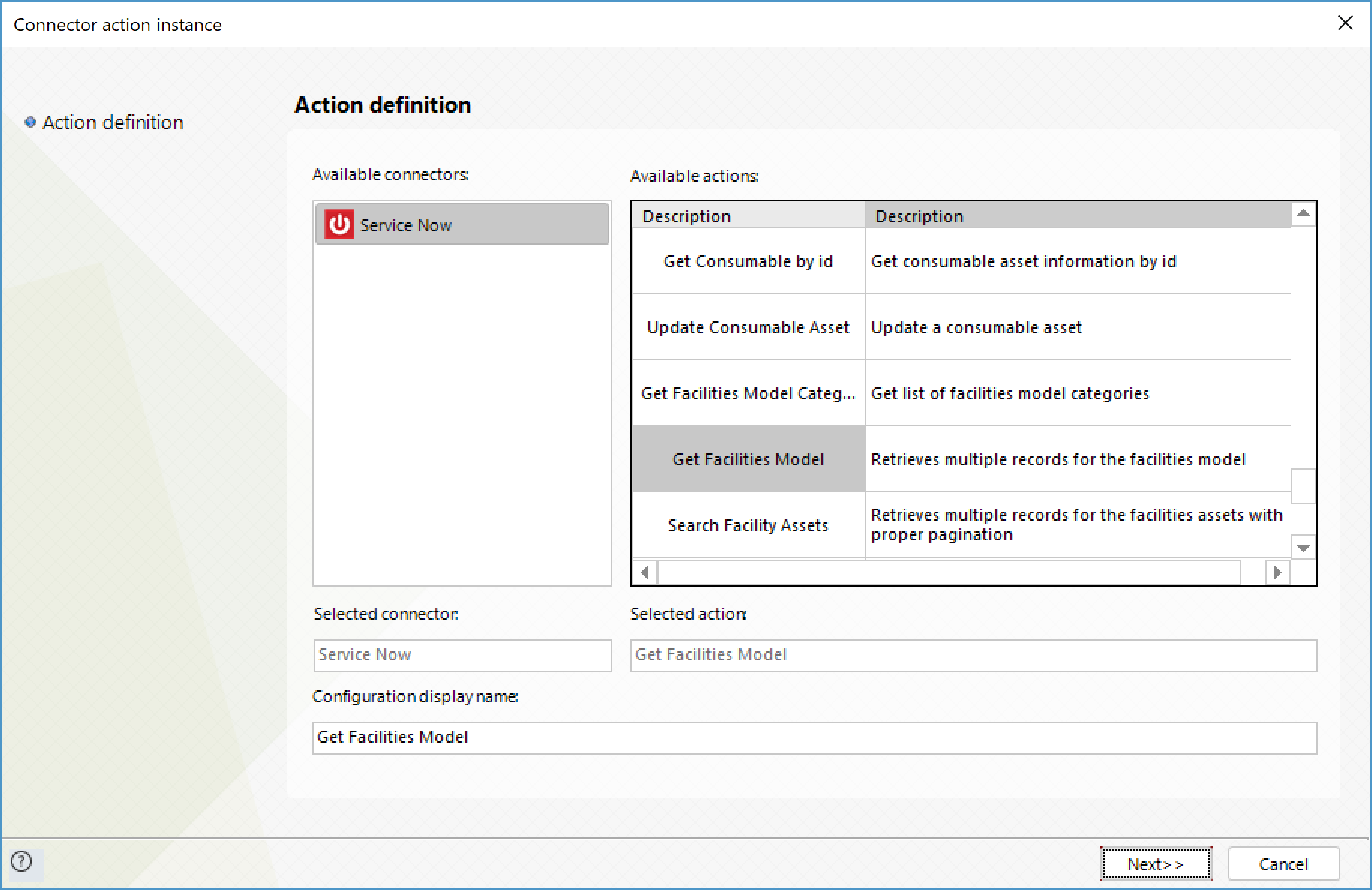
To configure its outputs, consider mapping:
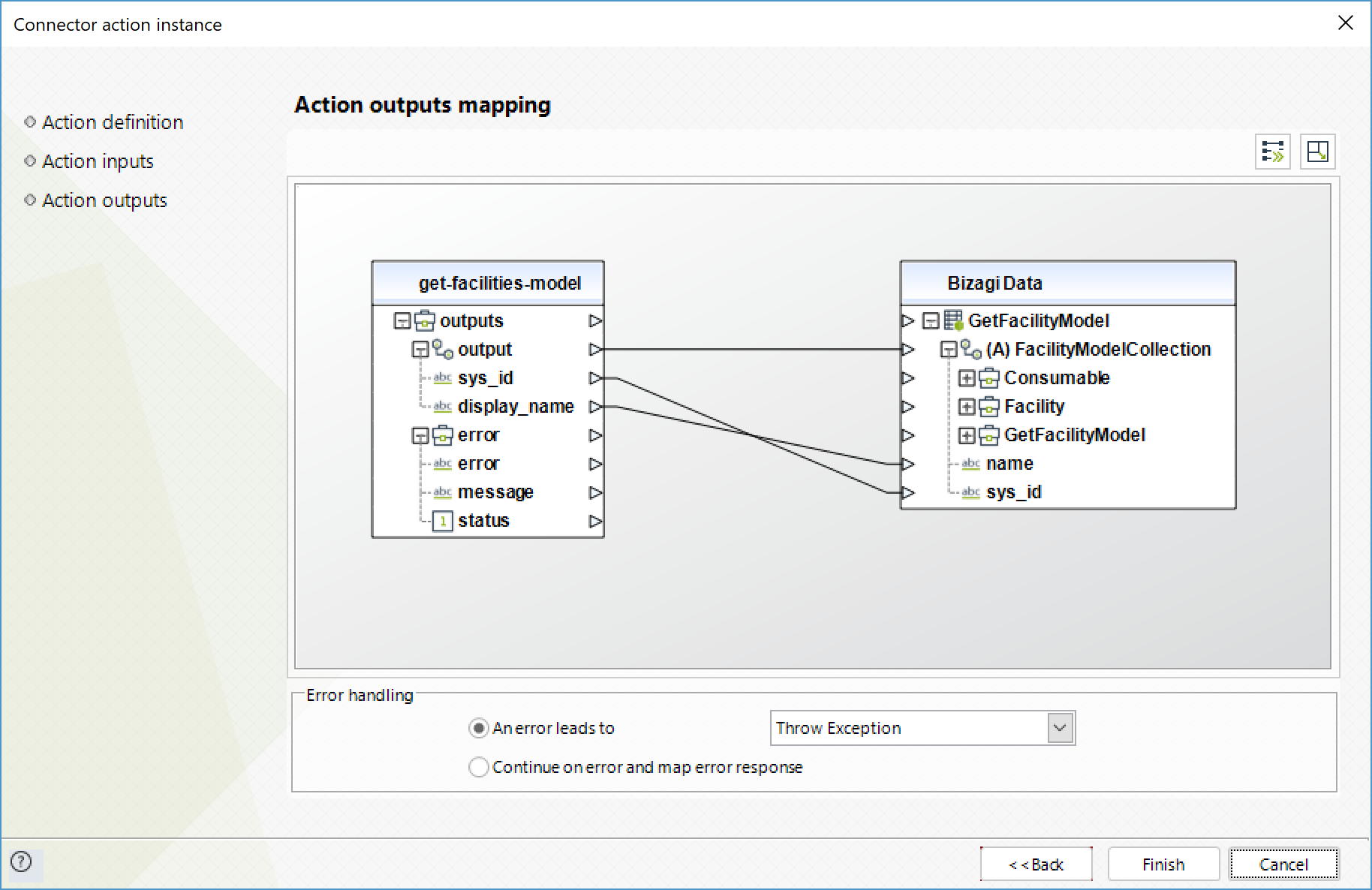
Get facility asset by ID
Obtain a specific facility asset by its ID.
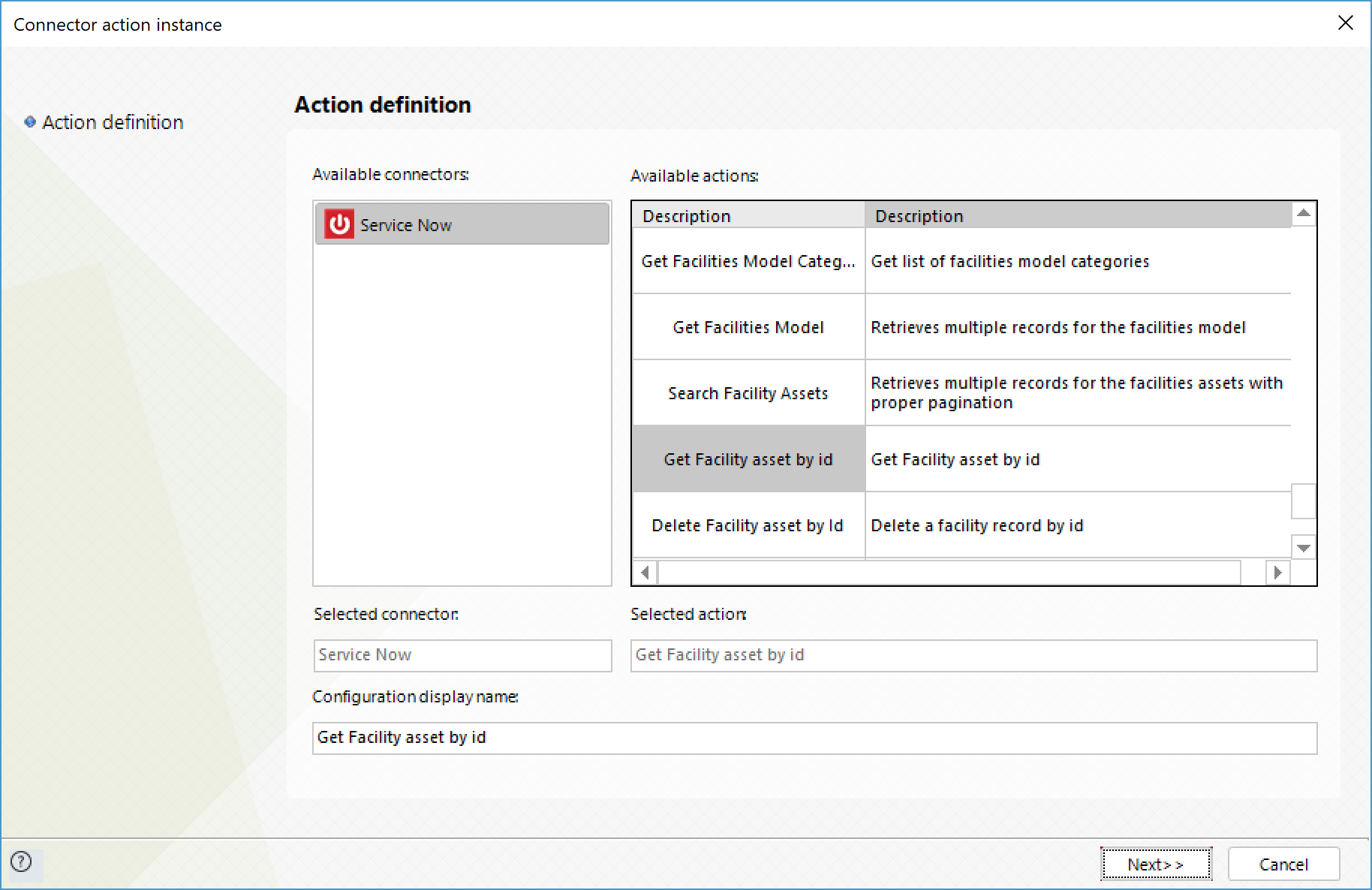
To configure its inputs, consider:
•Sys_ID: System ID of the facility asset you wish to obtain. This parameter is required for a successful service execution.
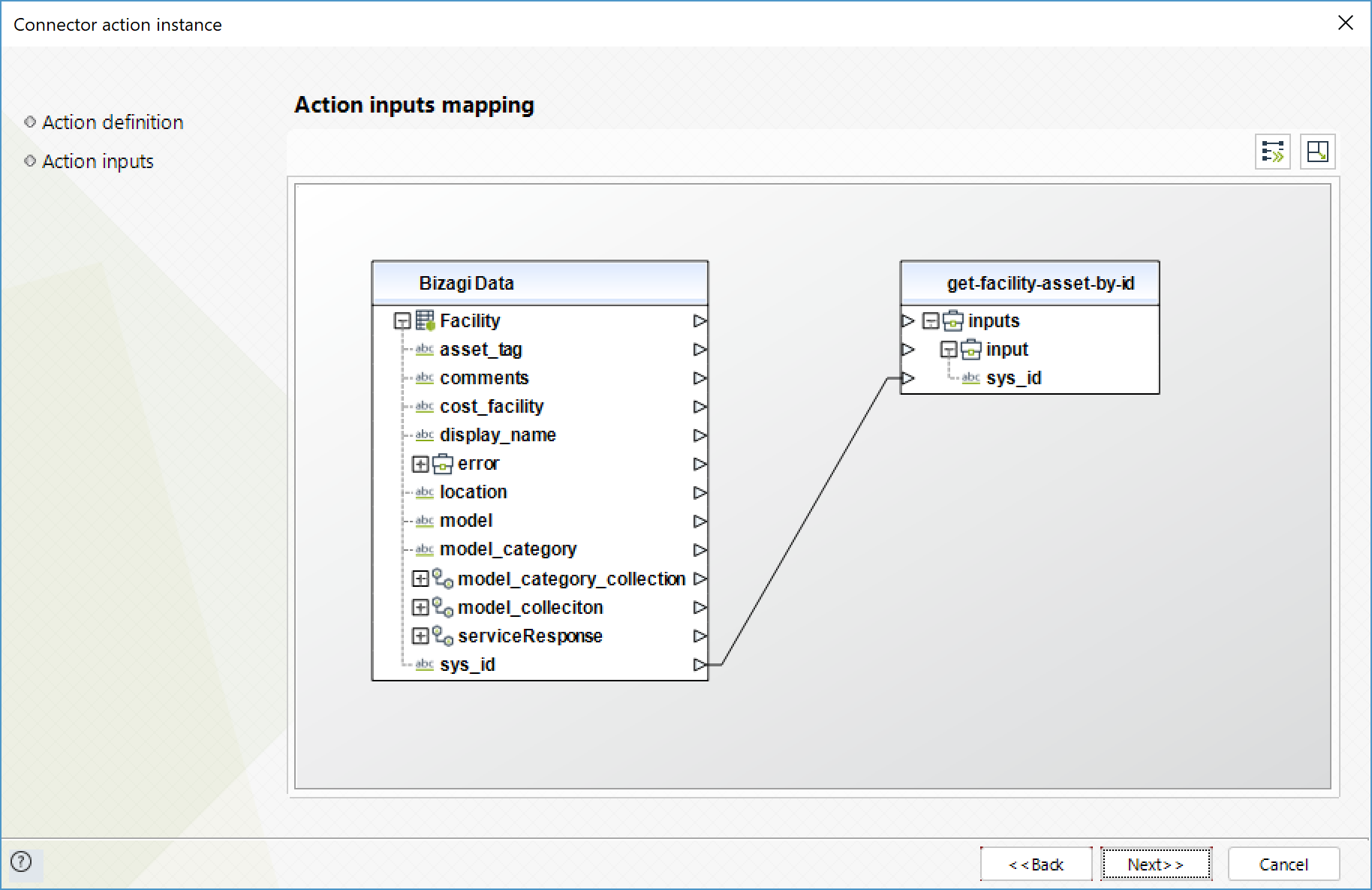
To configure its outputs, consider mapping:
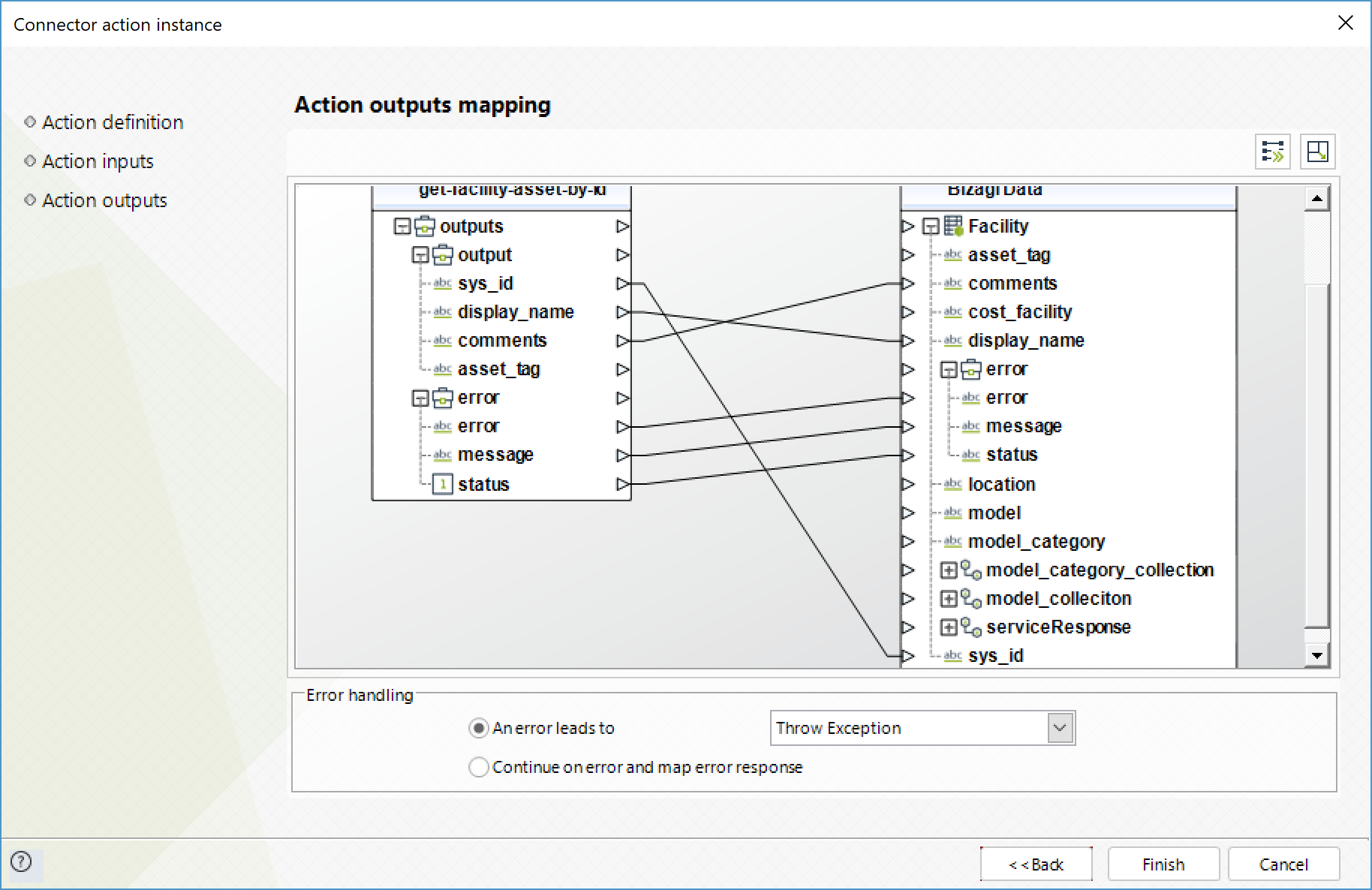
Delete facility asset by ID
Delete a specific facility asset by its ID.
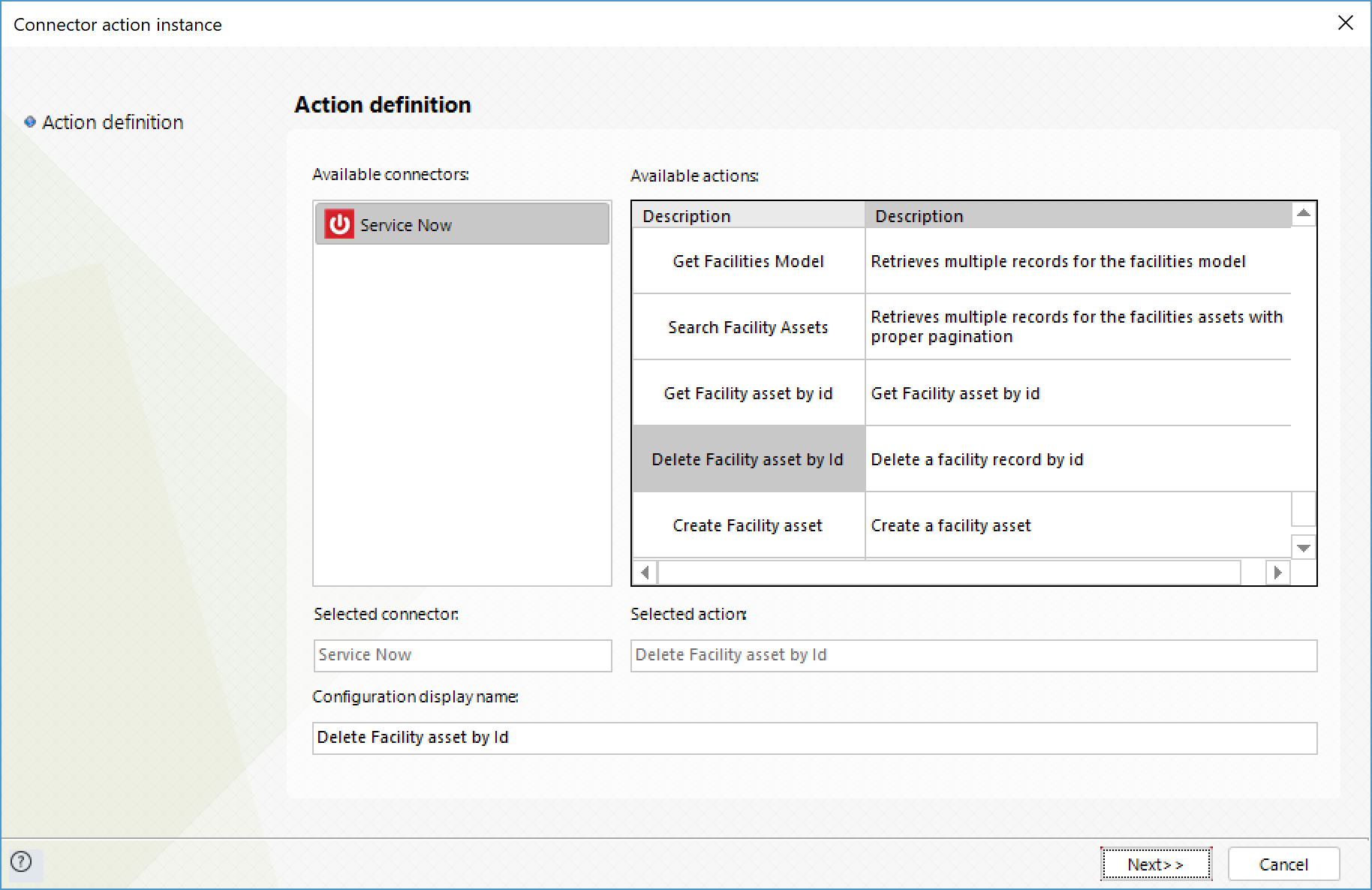
To configure its inputs, consider:
•Sys_ID: System ID of the facility asset you wish to delete. This parameter is required for a successful service execution.
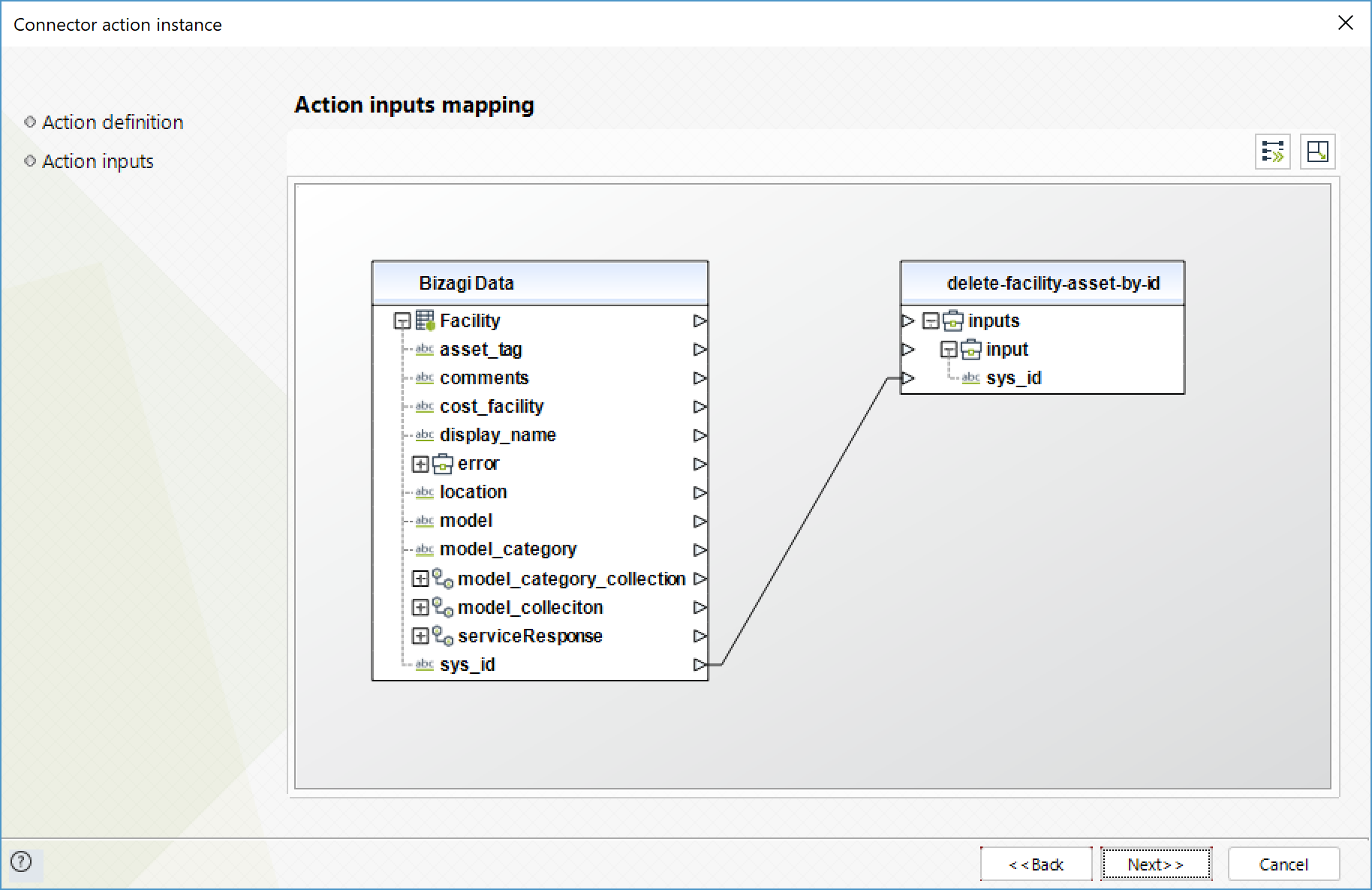
To configure its outputs, consider mapping:
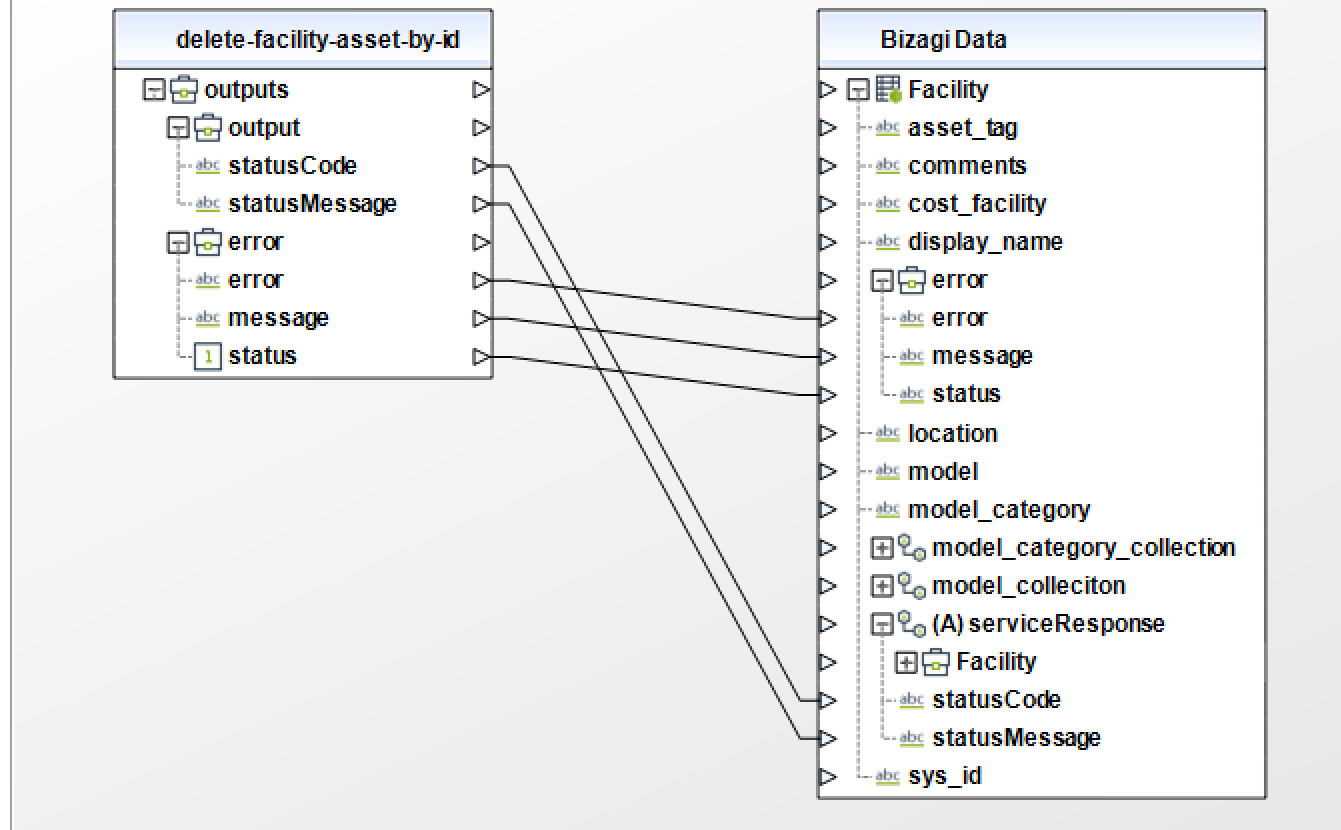
Create facility asset
Create a new facility asset.
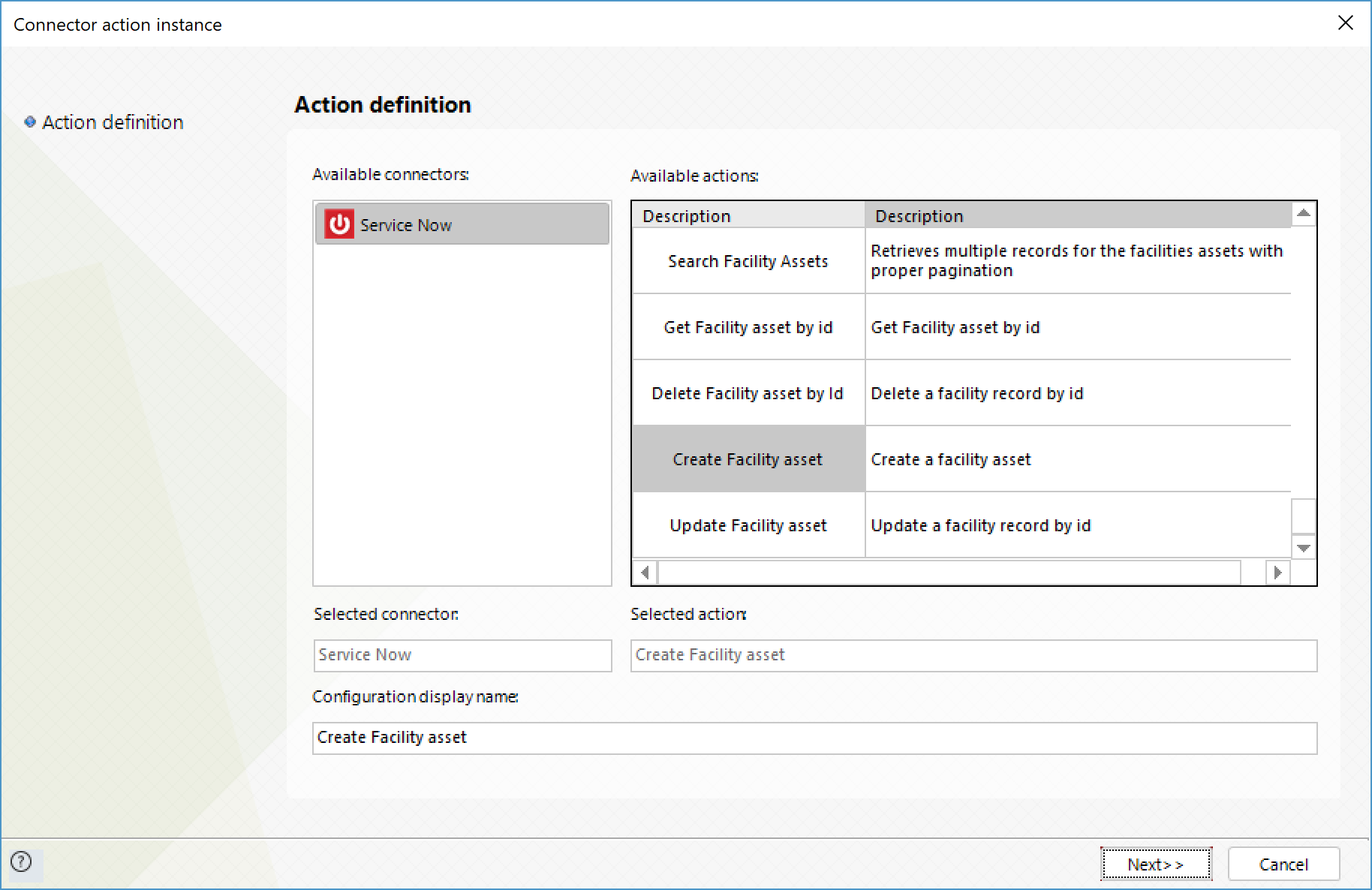
To configure its inputs, consider:
•Model: ID of the model of the asset. This parameter is required for a successful service invocation.
•Model_Category: ID of the category of the asset. This parameter is required for a successful service invocation.
•Asset_Tag: Unique identifier of the asset, it is usually a QR or Bar code.
•Comments: Additional comments about the asset.
•Cost: Cost of the asset.
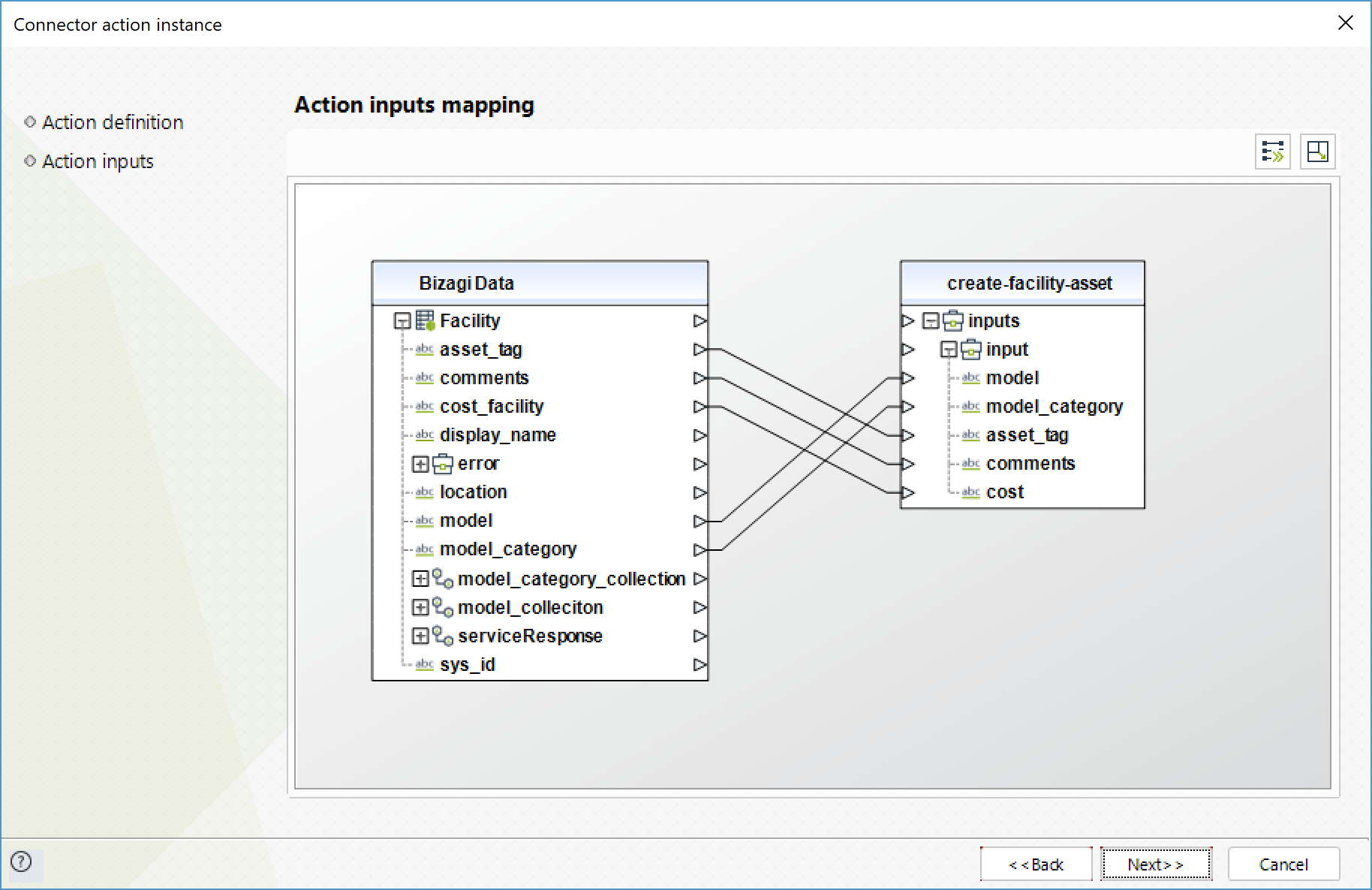
To configure its outputs, consider mapping:
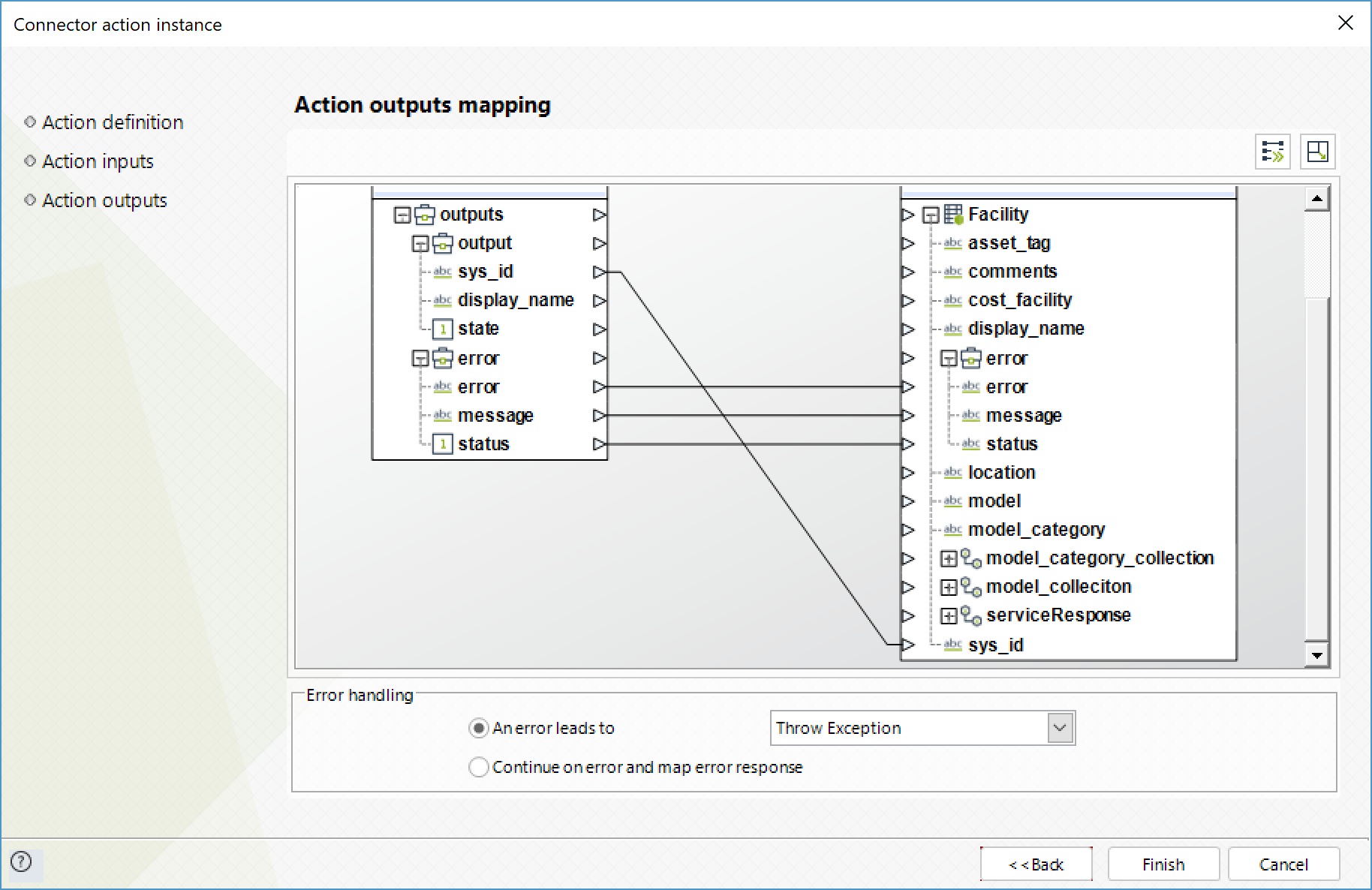
Add attachment to incident
Uploads a file as an attachment to an existing incident.
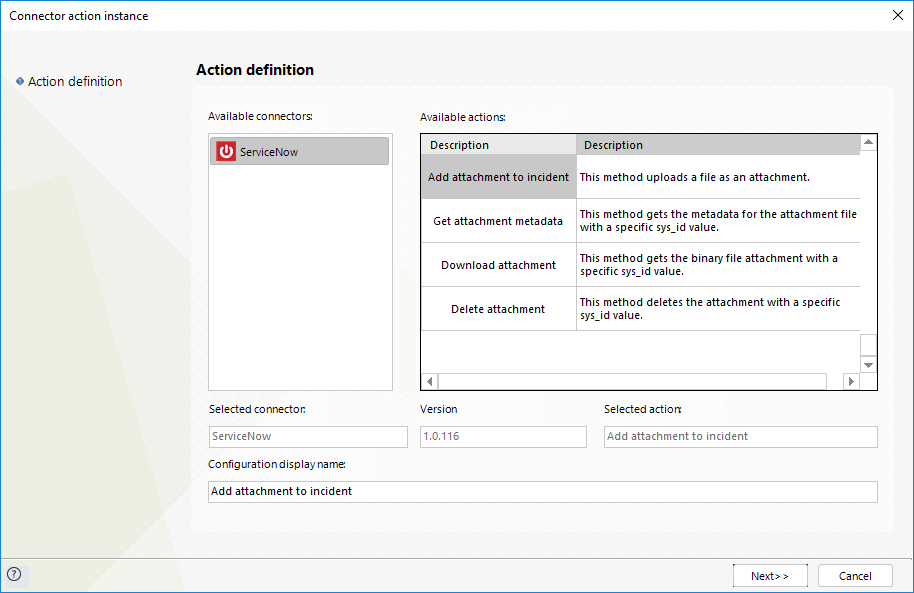
To configure its inputs, consider:
•Sys_ID: System ID of the incident where you wish to attach the file. This parameter is required for a successful service execution.
•File: File that will be attached to the specific indident. This parameter is required for a successful service invocation.
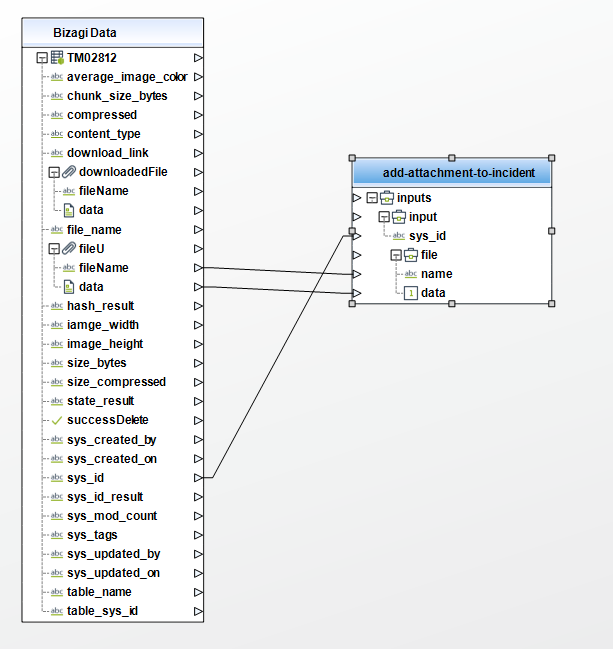
To configure its outputs, consider mapping:
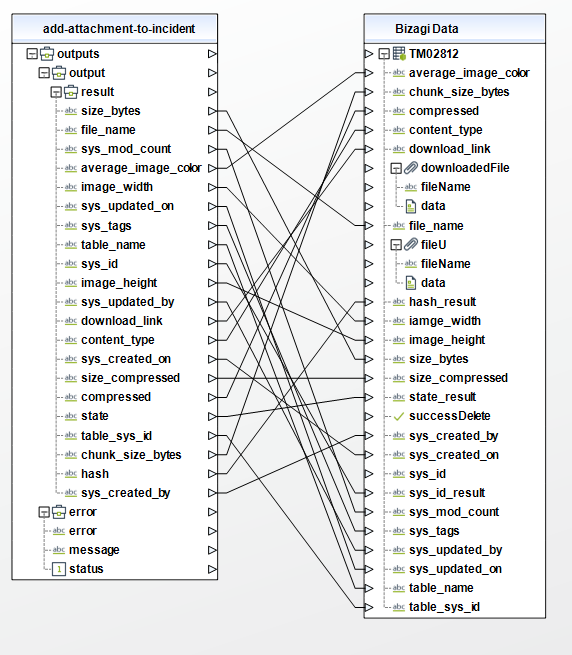
Get attachment metadata
Gets the metadata of a specific attachment given its ID.
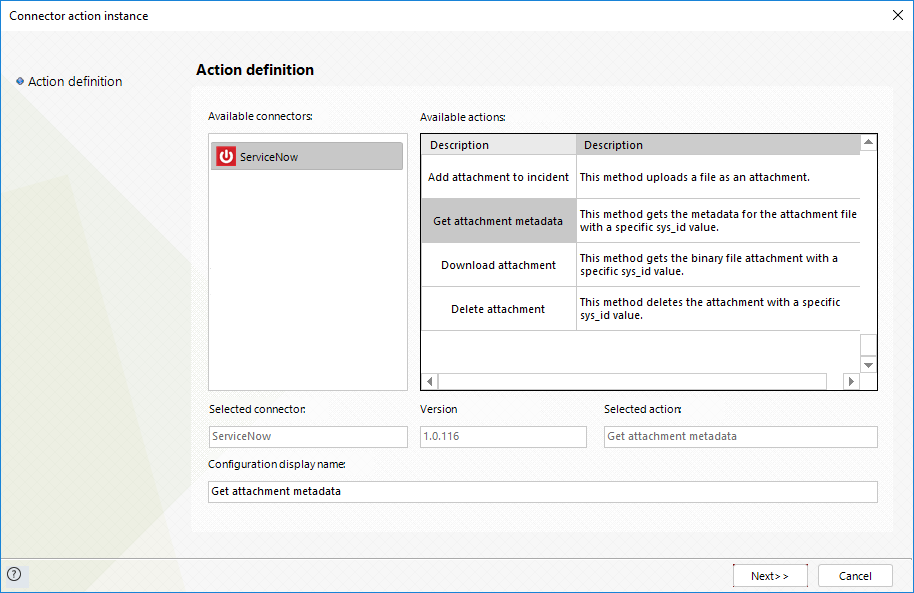
To configure its inputs, consider:
•Sys_ID: System ID of the attachment that you wish to examine. This parameter is required for a successful service execution.
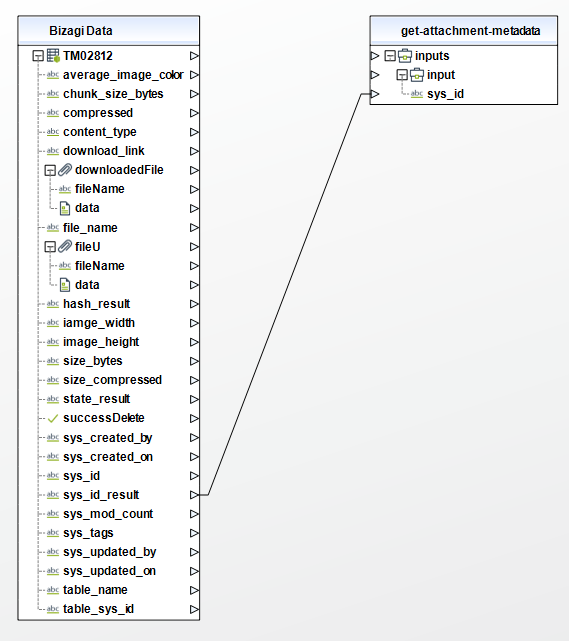
To configure its outputs, consider mapping:
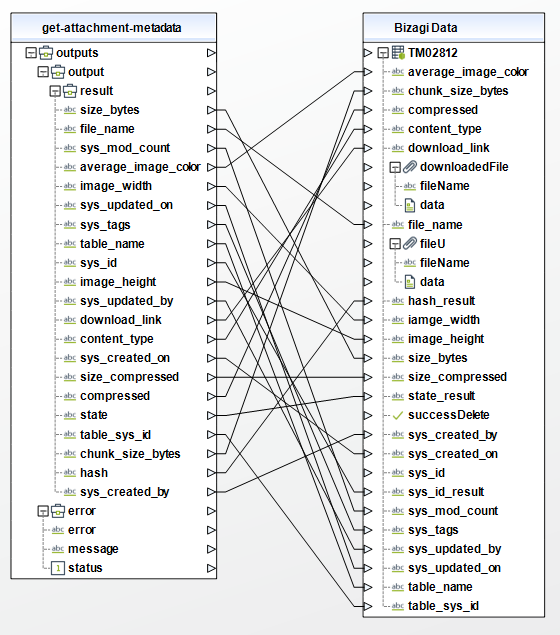
Download attachment
Downloads a specific attachment given its ID.
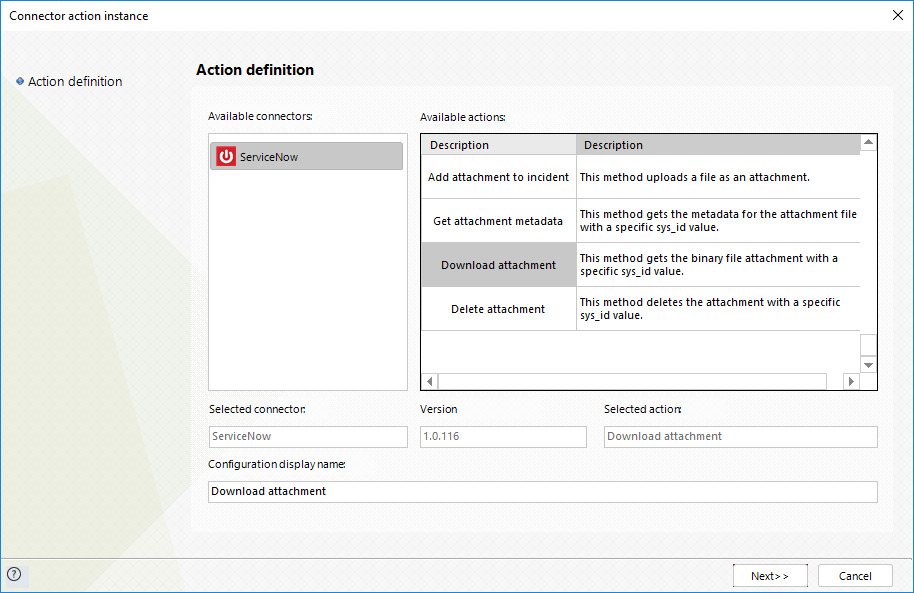
To configure its inputs, consider:
•Sys_ID: System ID of the attachment that you wish to download. This parameter is required for a successful service execution.
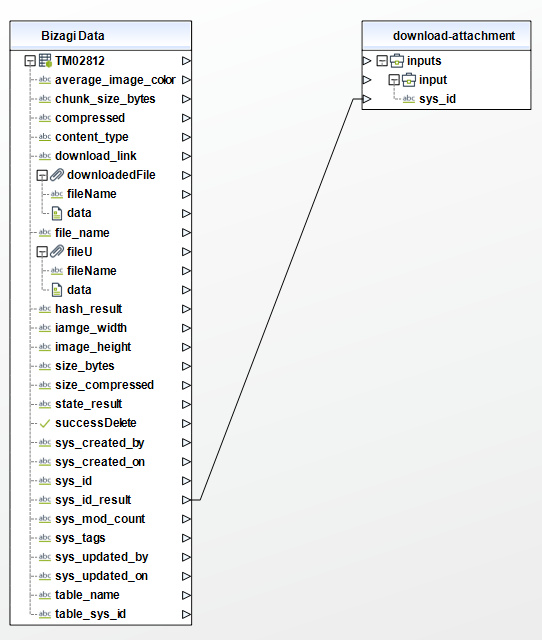
To configure its outputs, consider mapping:
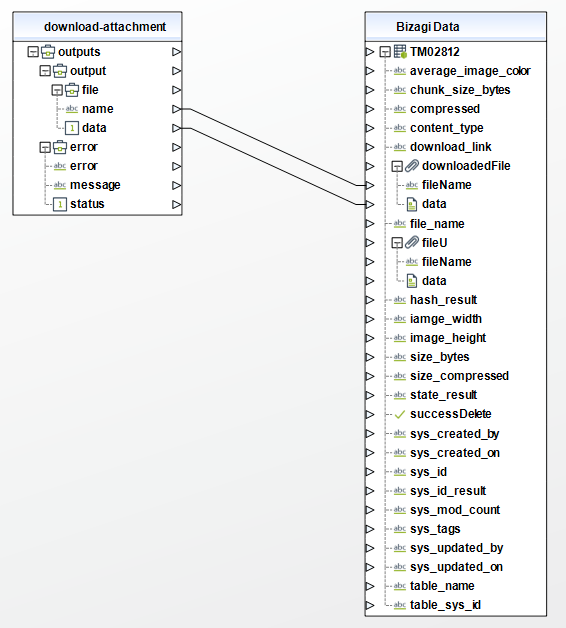
Delete Attachment
Deletes an attachment given its ID.
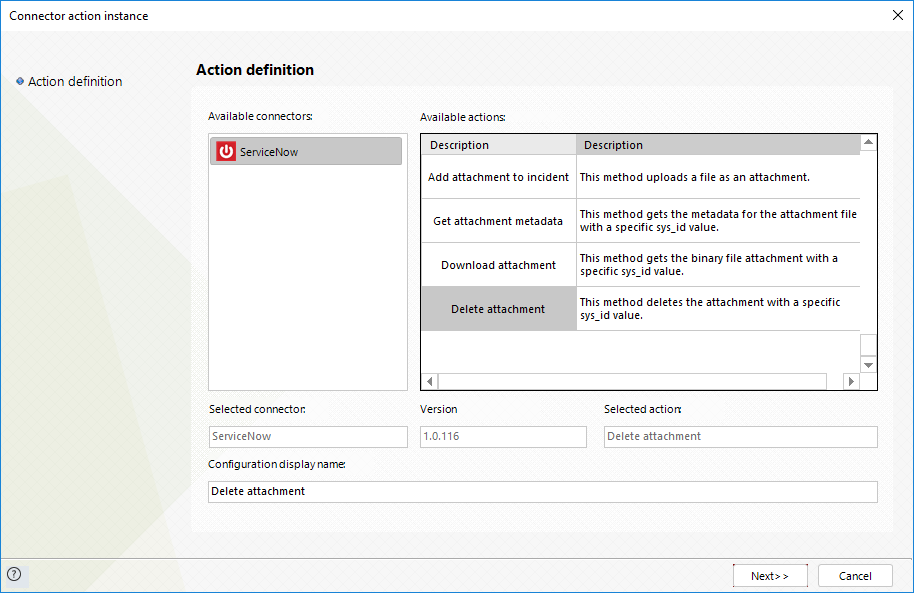
To configure its inputs, consider:
•Sys_ID: System ID of the attachment that you wish to delete. This parameter is required for a successful service execution.
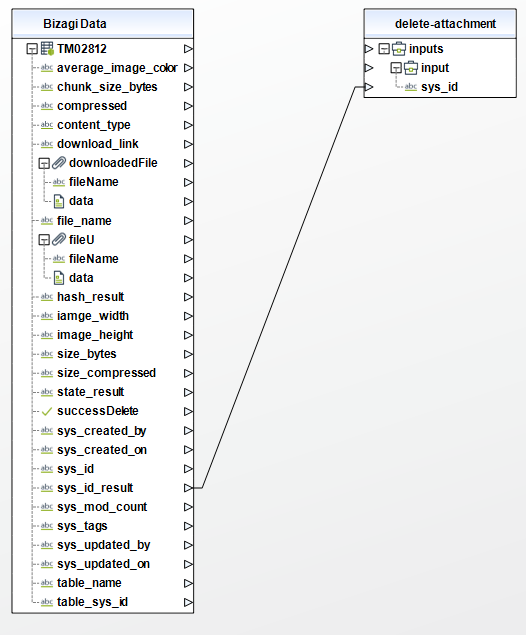
To configure its outputs, consider mapping:
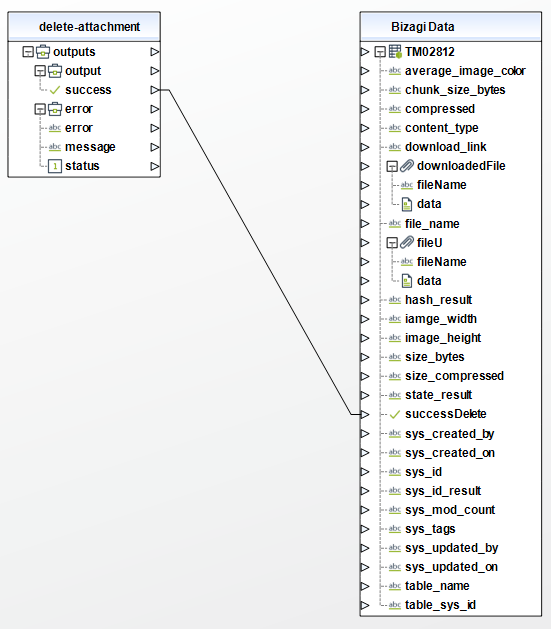
Last Updated 10/27/2022 12:06:46 PM
